September 9, 2018
Martha O'Kennon
The world is bright yellow. Except for a few days too cool or too wet to tempt the clients out, it has also been buzzing with life. Creatures that haven't shown up for a whole year come to toss back a few growlers (I just learned that word yesterday) of goldenrod nectar and check out the opposite sex. So it is harder and harder to find a few flower pictures that don't also have at least one such visitor. The August Orange day lilies are still blooming into September. Next is an enlarged Aphid. And finally, the mixture of goldenrod and a gorgeous first spray of that hot pink that is one of my favorite colors of aster.
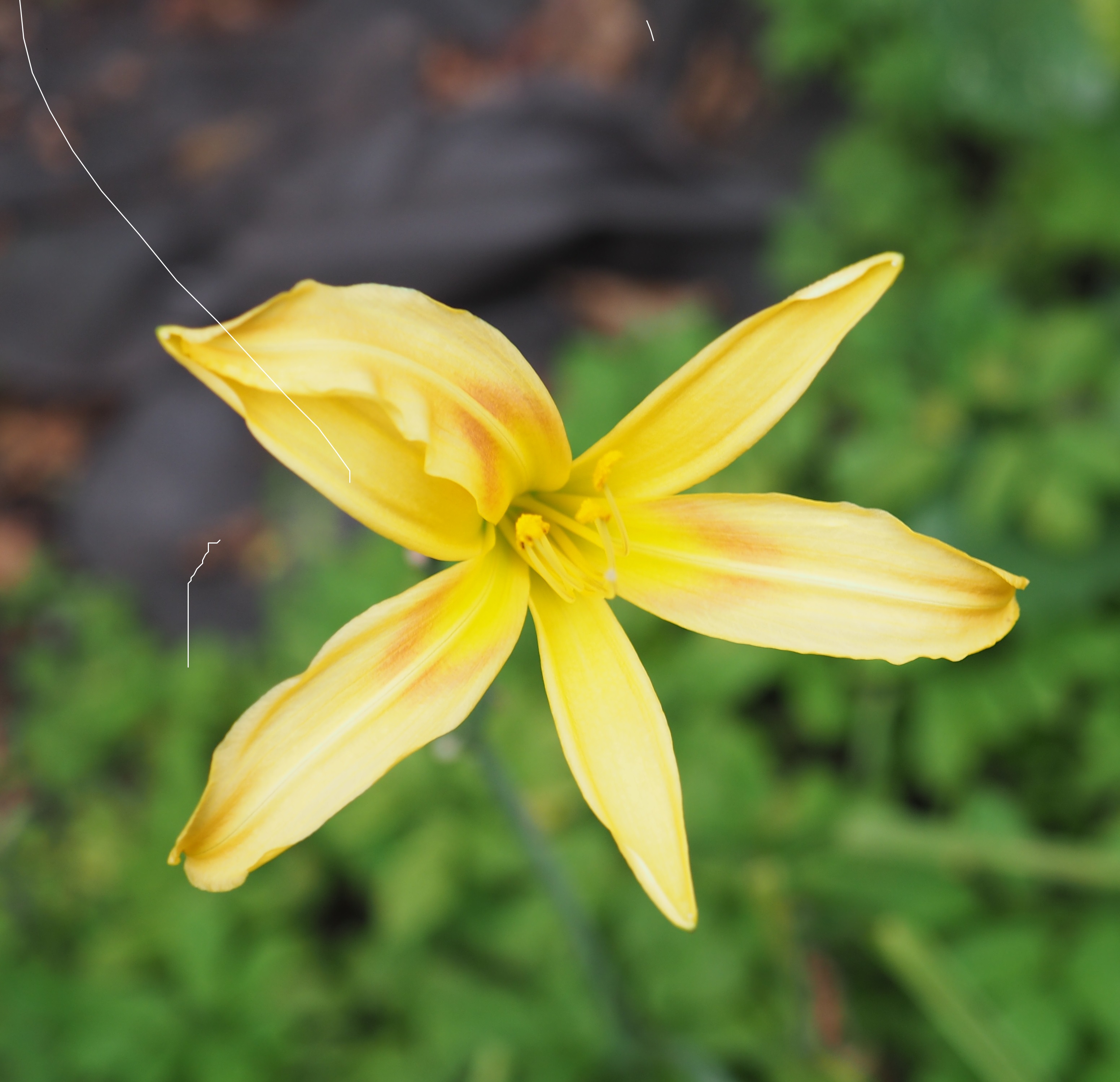

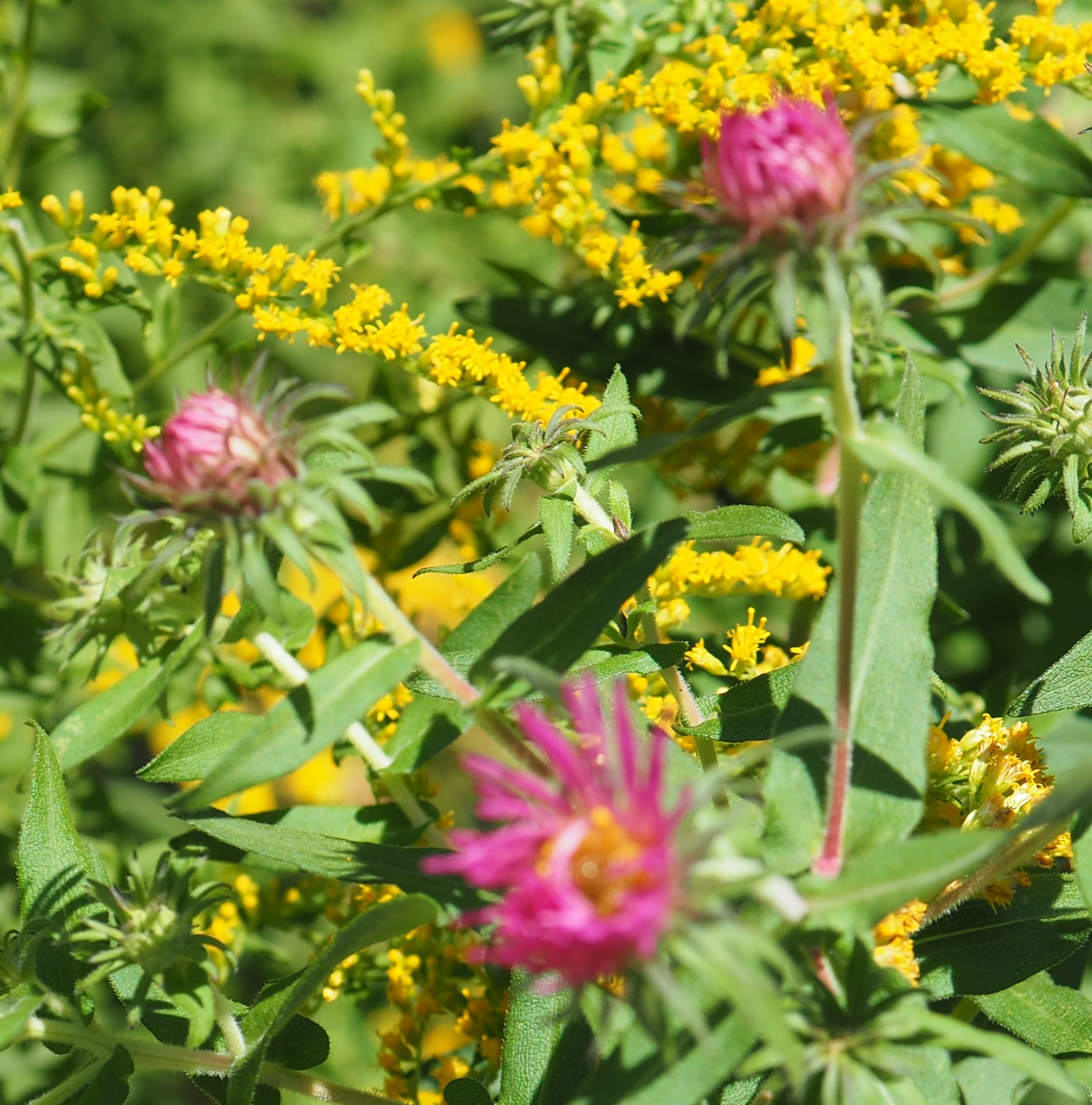
Remember that there is information in the name of the file for each image. You can see it by mousing over the image - look at the lower left of the screen. Or you can click on the image to get to the (usually) larger image. Then the info is displayed in the address line above. Sometimes the second click will actually display a different view of the original image.
Ants, yes, ants. It seems that most days we can see a few kinds of ants. Here are two of the ants we've seen often, and a scene of the old buddies having a bit of gall (this one caused by a "gall wasp").
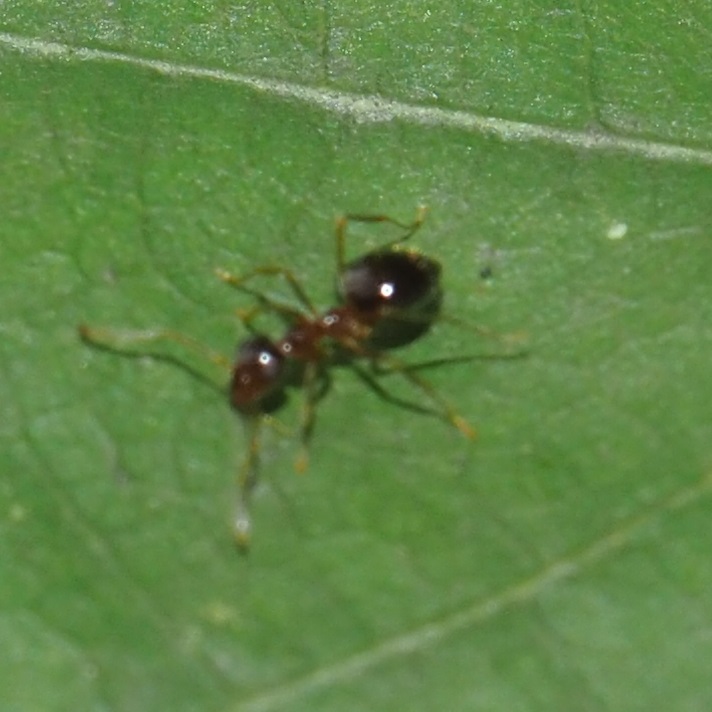
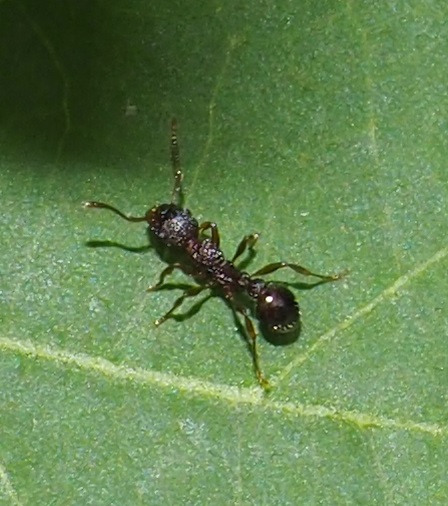
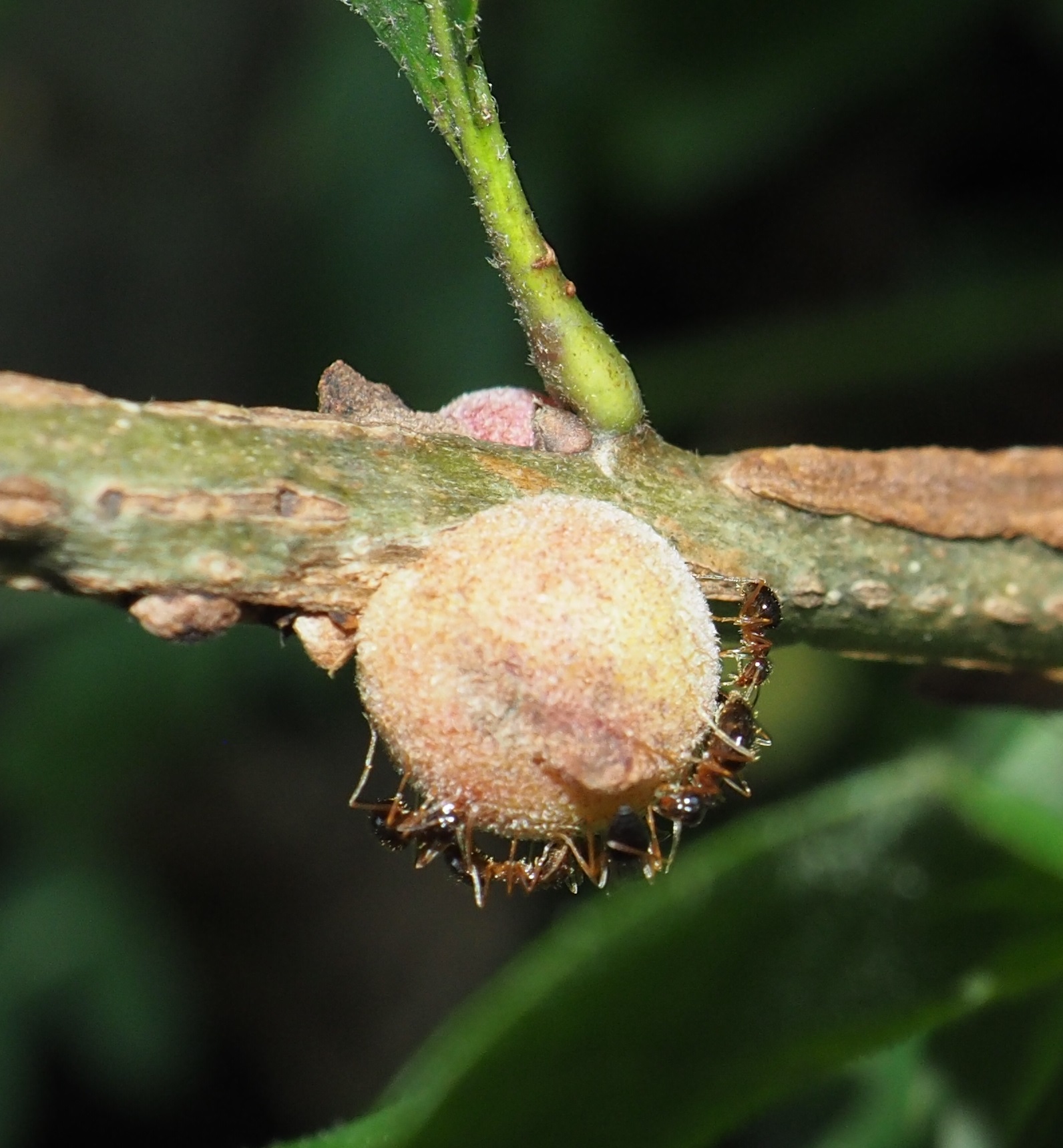
Barklouse (image #1) is one of our earliest barklouse friends, Metylophorus novaescotiae. There didn't seem to be others this week, or maybe I was too much in a hurry to find other creatures. The following little rust-brown bee was new to me. But the smallish Bumble Bee was one of the most common bees in the goldenrod bar.
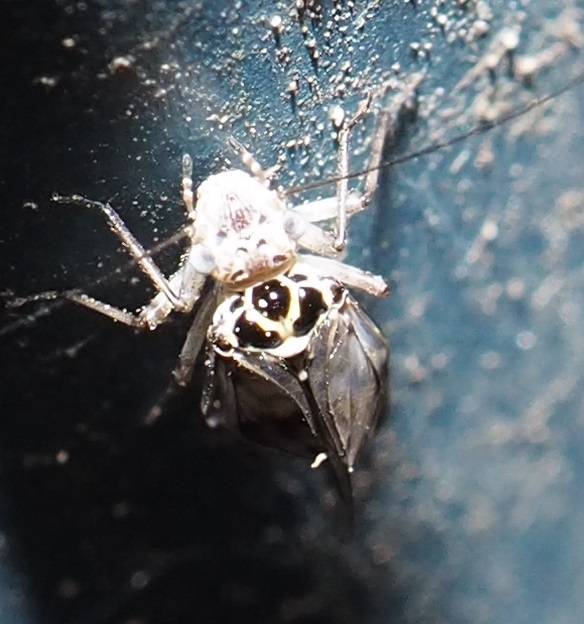
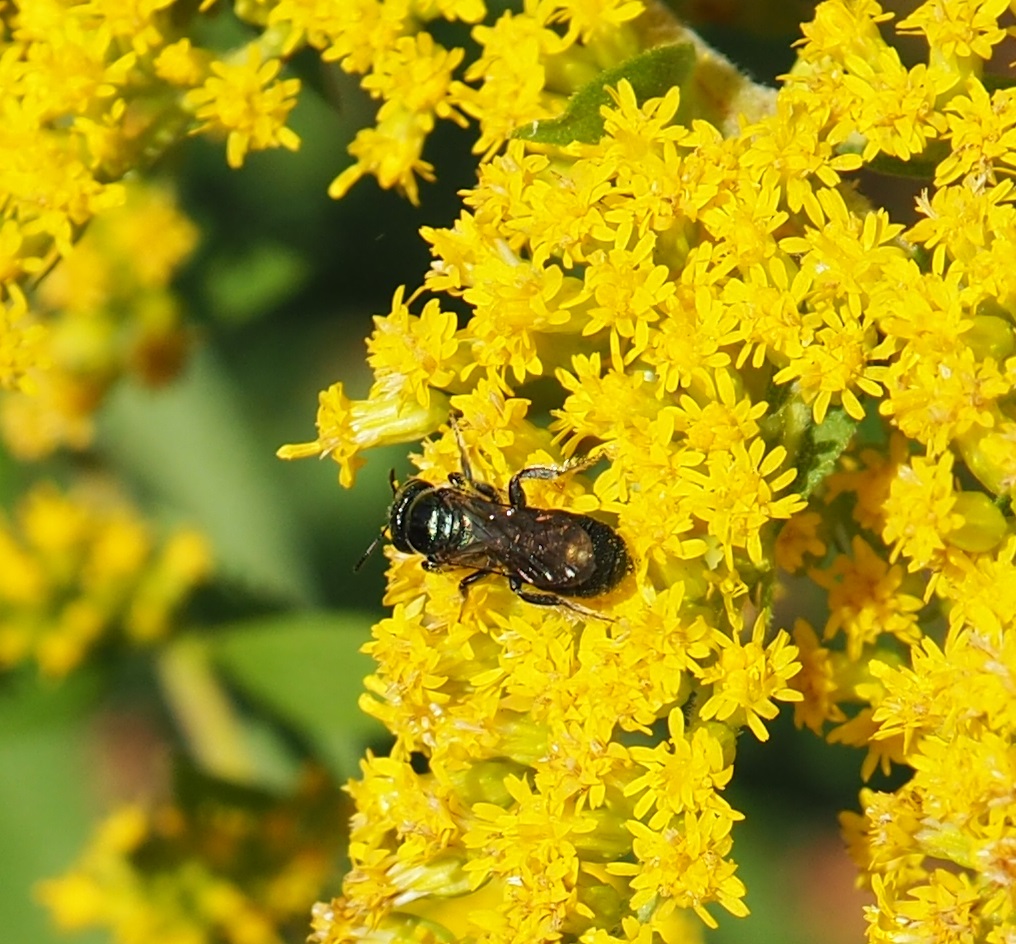
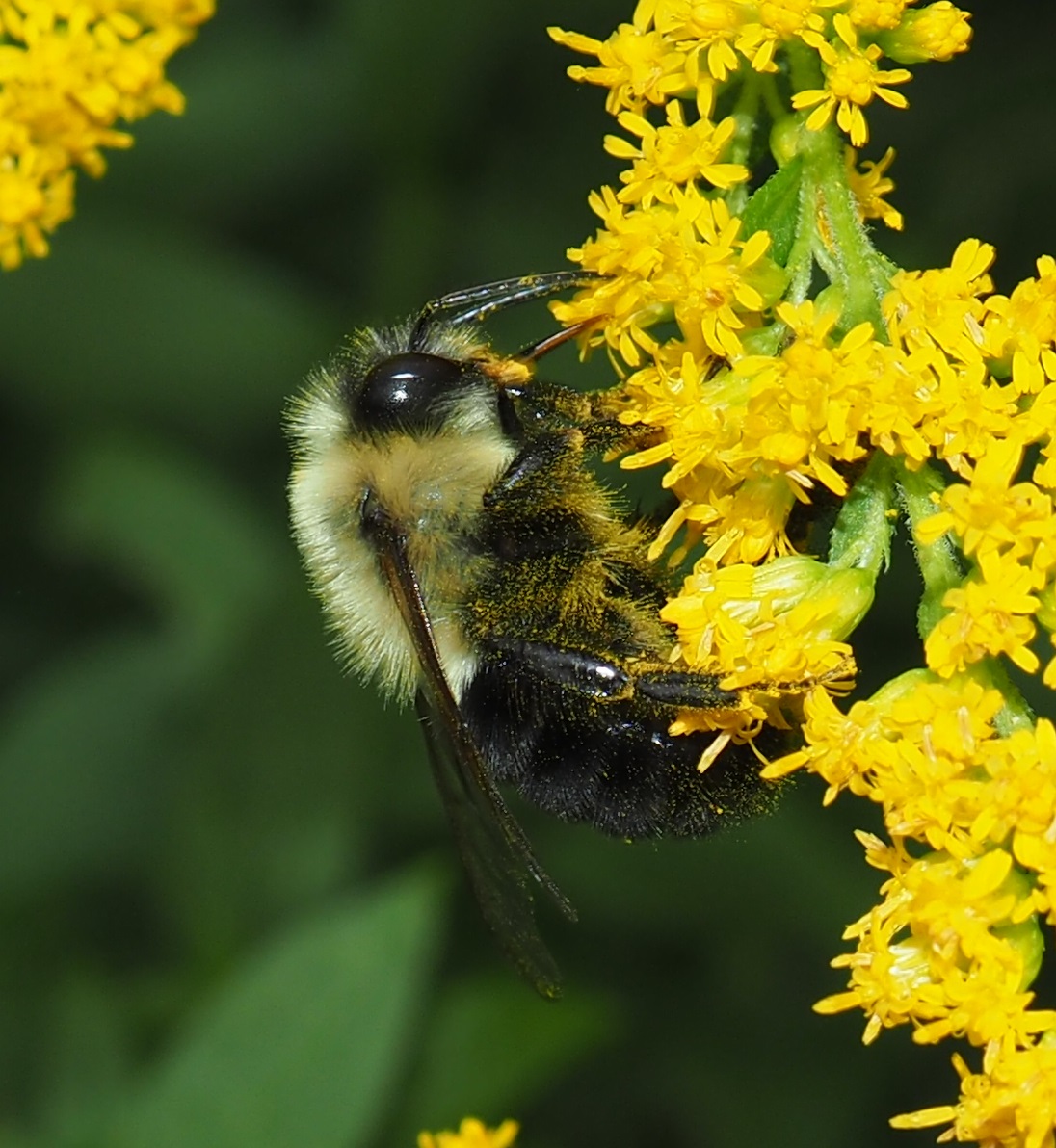
This bee has extremely delicate-looking appendages. Next, a dark metallic green bee, and finally, a Mason Bee and a Goldenrod Soldier Beetle in one section of the goldenrod. Reminder: the Mason Bees are the ones with bright yellow tummies because their tummy-hairs (and not their leg hairs) are engineered to pick up pollen; they don't make honey, but are in some counts 20 times better at pollination. Fourth, Bees do it...
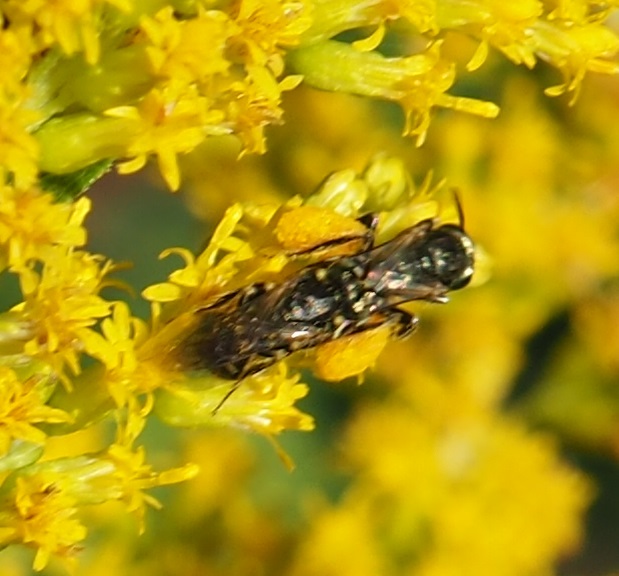

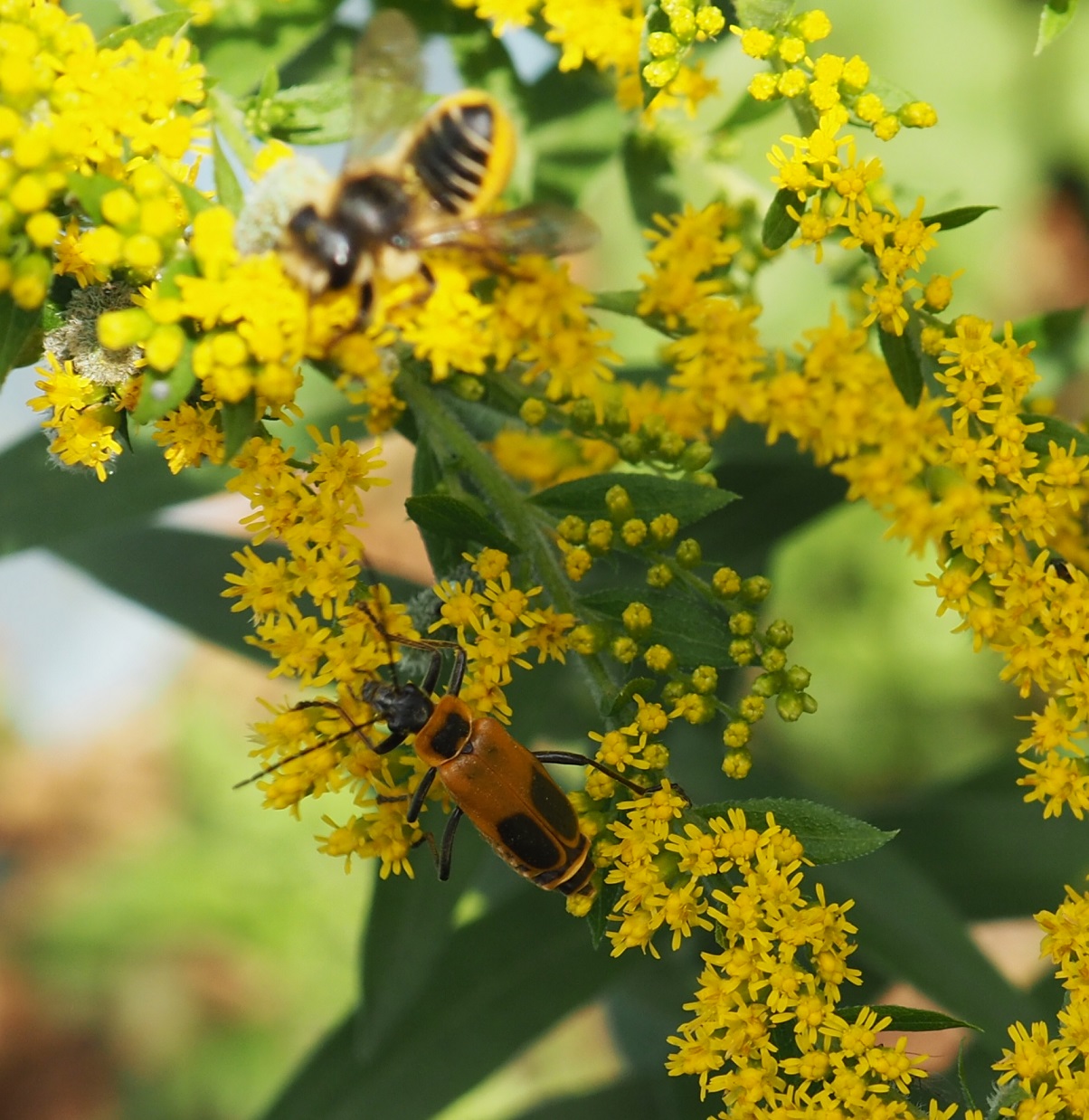
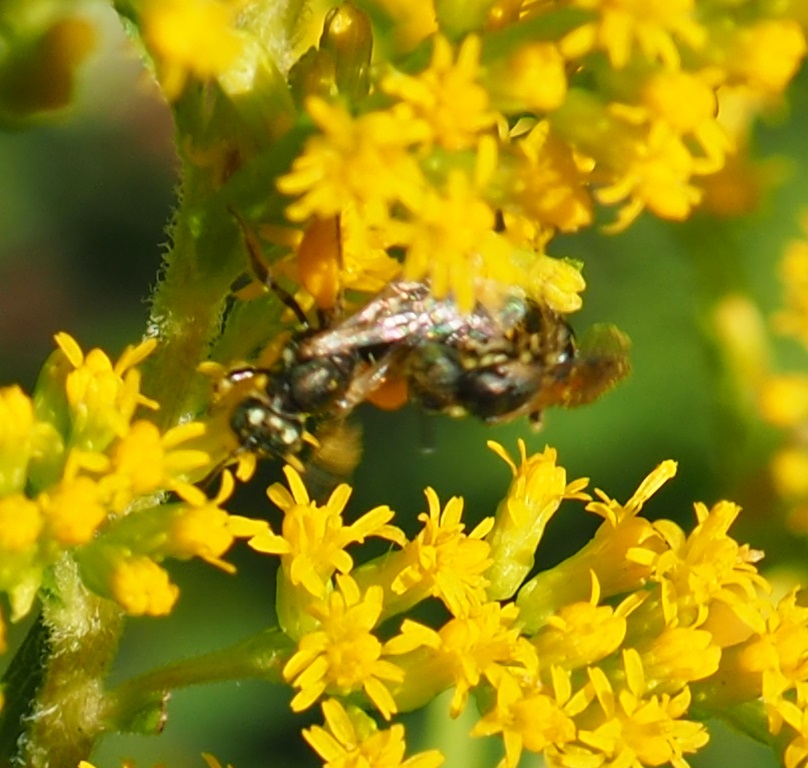
Beetle time! This black one refused to show its whole body but at least we can see that since there is no opening at the end of the critter, it isn't a bug so it must be a beetle. Second is probably a flea beetle of some species, but all I can see from this one is that it is sort of a metallic olive-green beetle. Third is an Asian Lady Beetle (see the "W"-shaped head-end decoration?) sitting at the center of a five-leaf rosette, so that it resembles a beetle-centered flower.

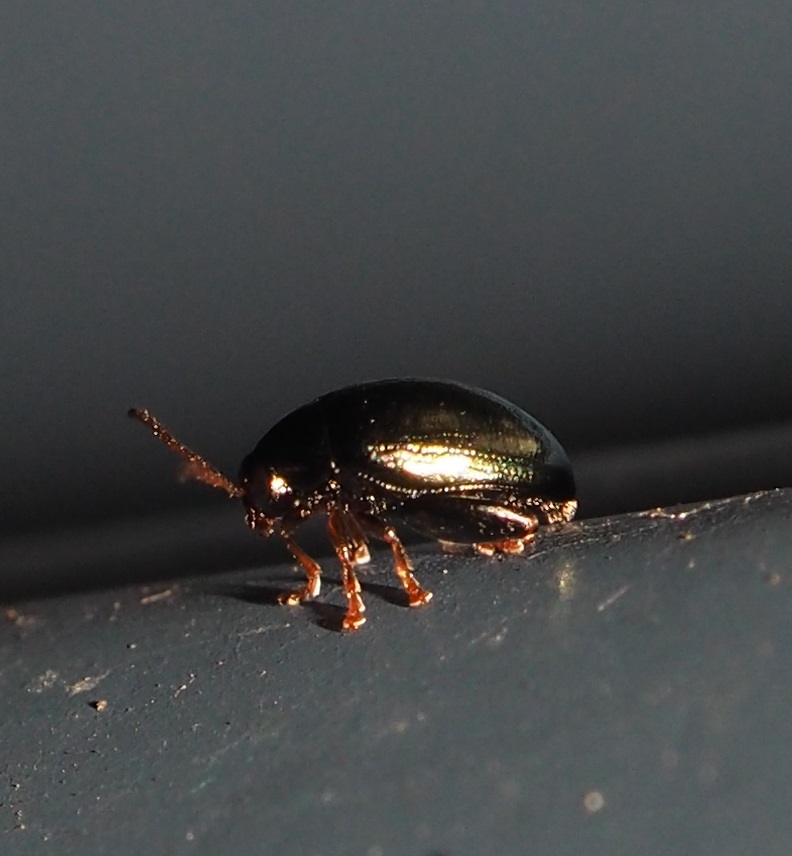
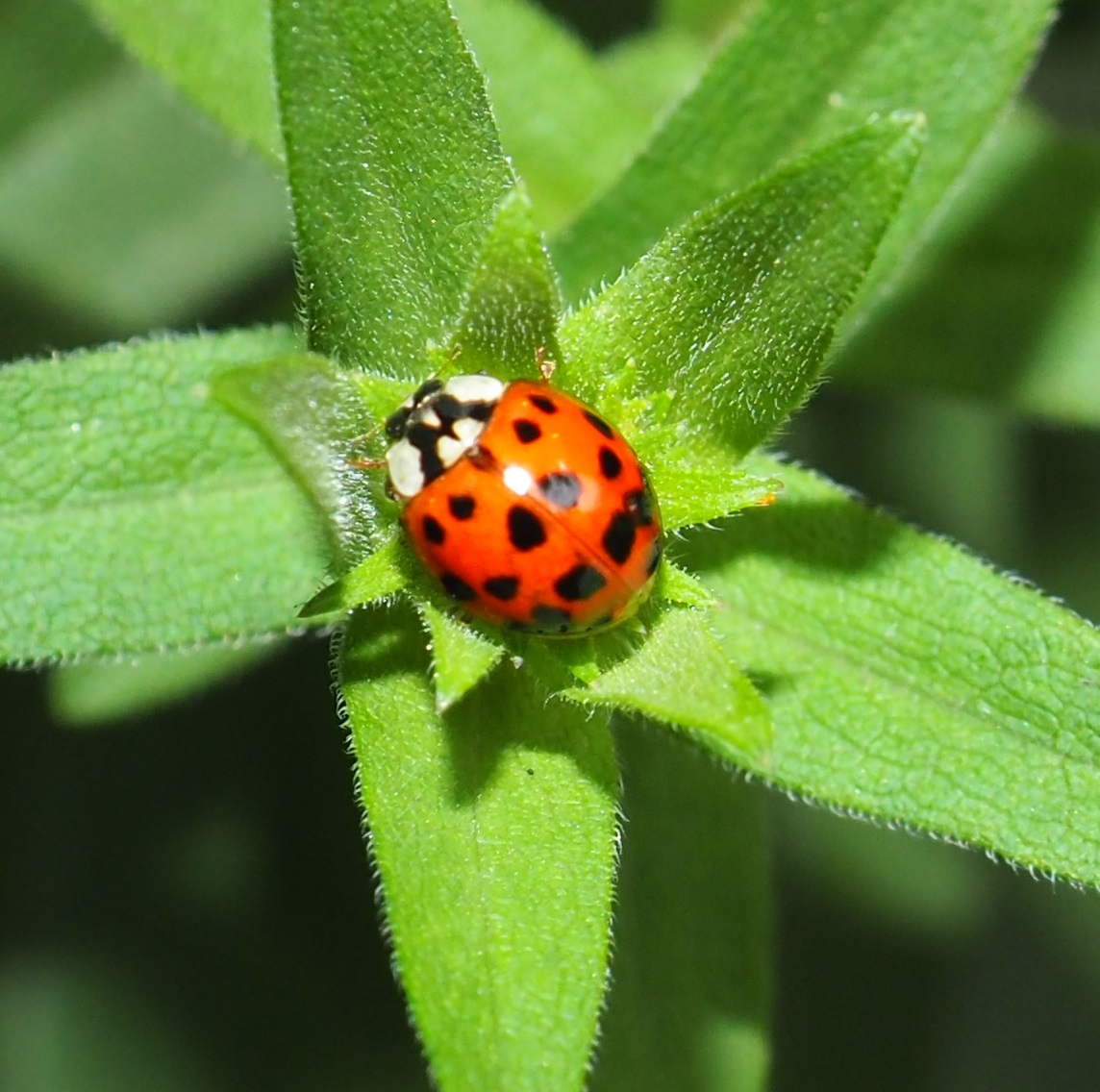
Every year since I've been noticing them, the glorious black- and yellow-patterned Locust Borer Beetle has arrived with the goldenrod. Last year, there were several pairs mating in the yard. the second one here is so that you can see the pattern when it is standing still. Third is a good old faithful Redbud Bruchid.
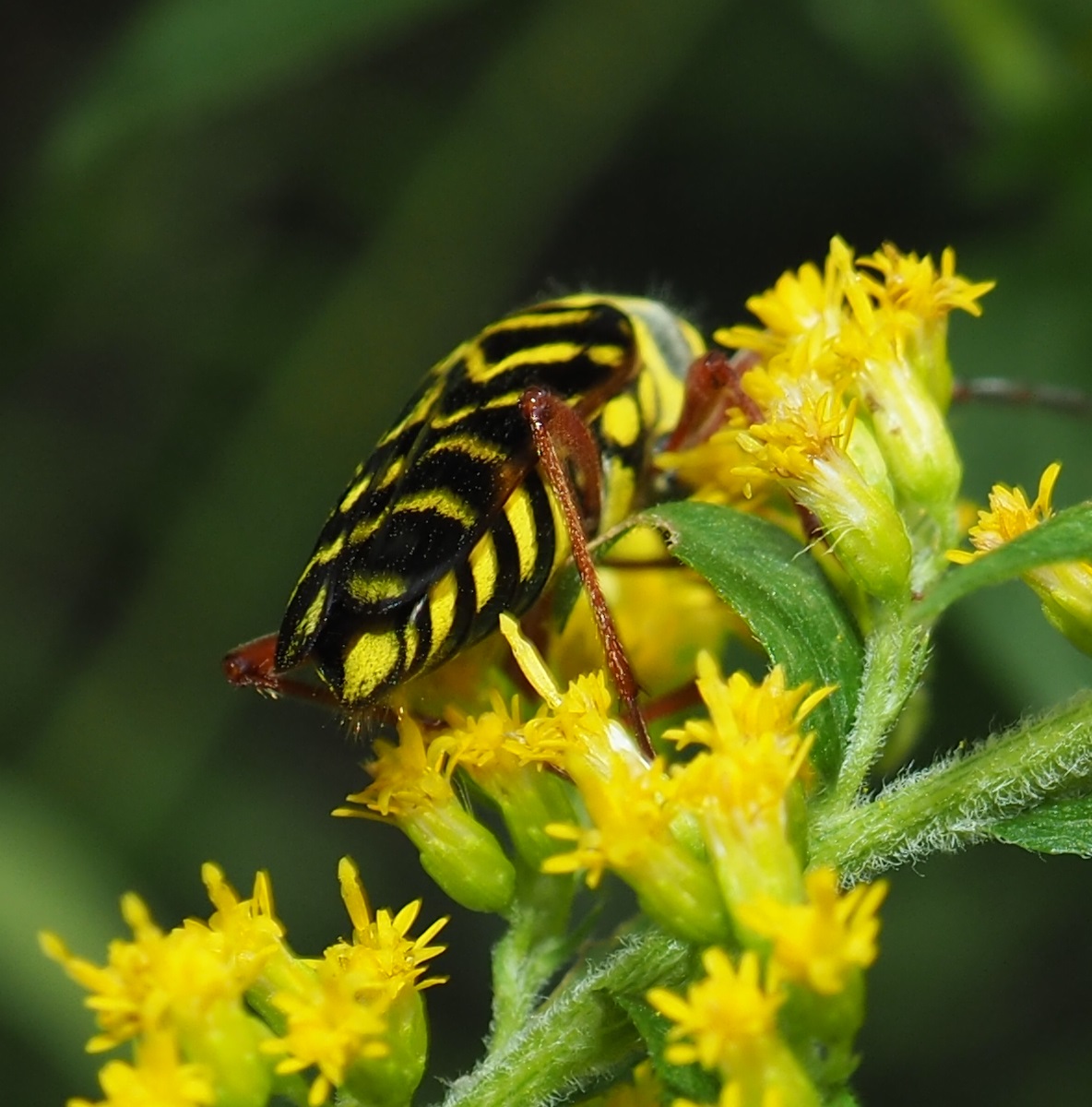
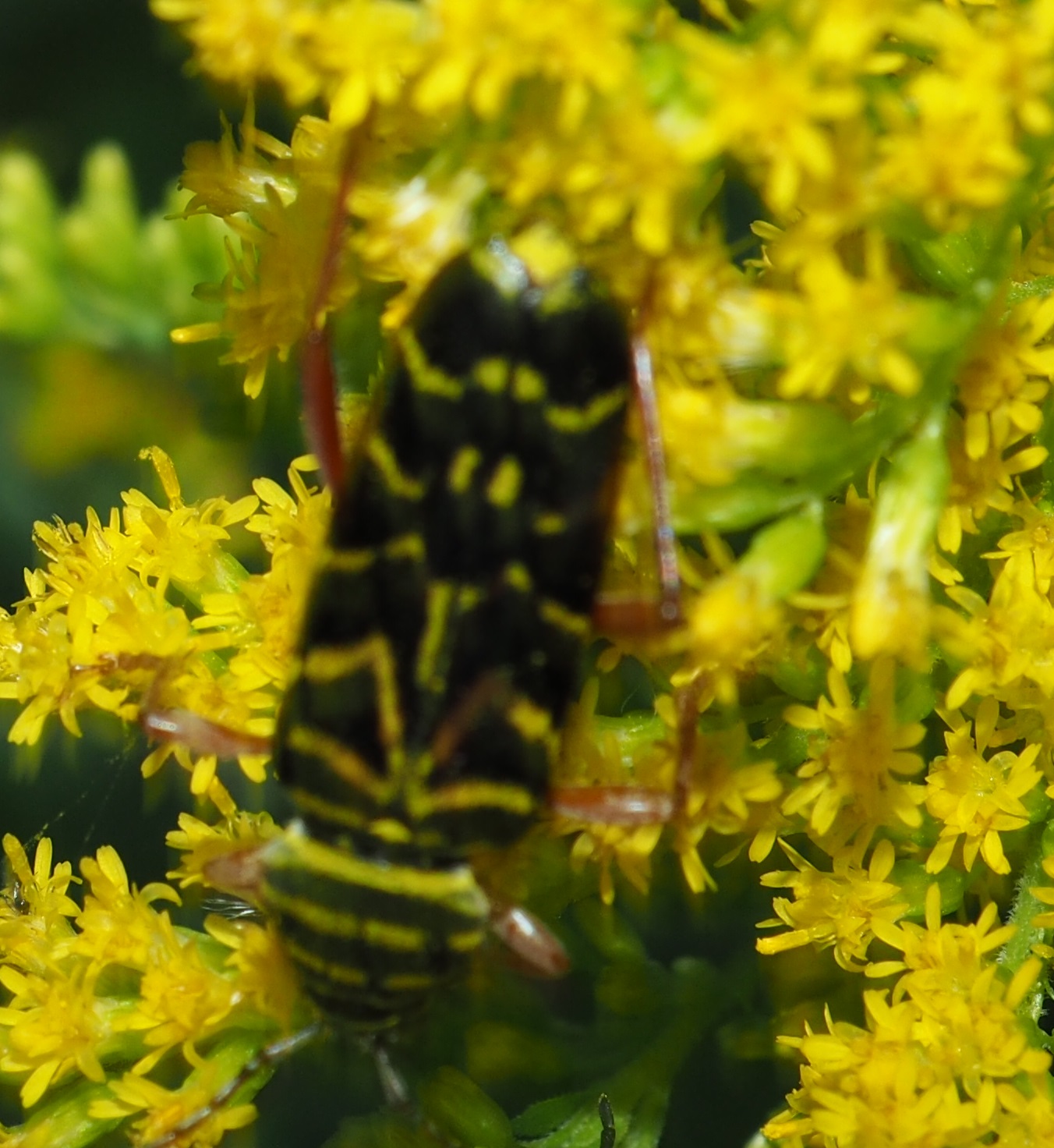
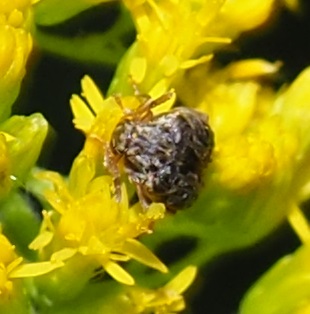
We seem to have run out of beetles, but there are bugs a-plenty for us. First: this big guy was in the clutches of a much smaller Spider. I like the rich pattern in what would have been its under-arms if it were Us. I believe the black back of this Ambush Bug is that of a male (he is facing right), and that the brighter color of the third one is that of a female. (She is oriented facing you.)
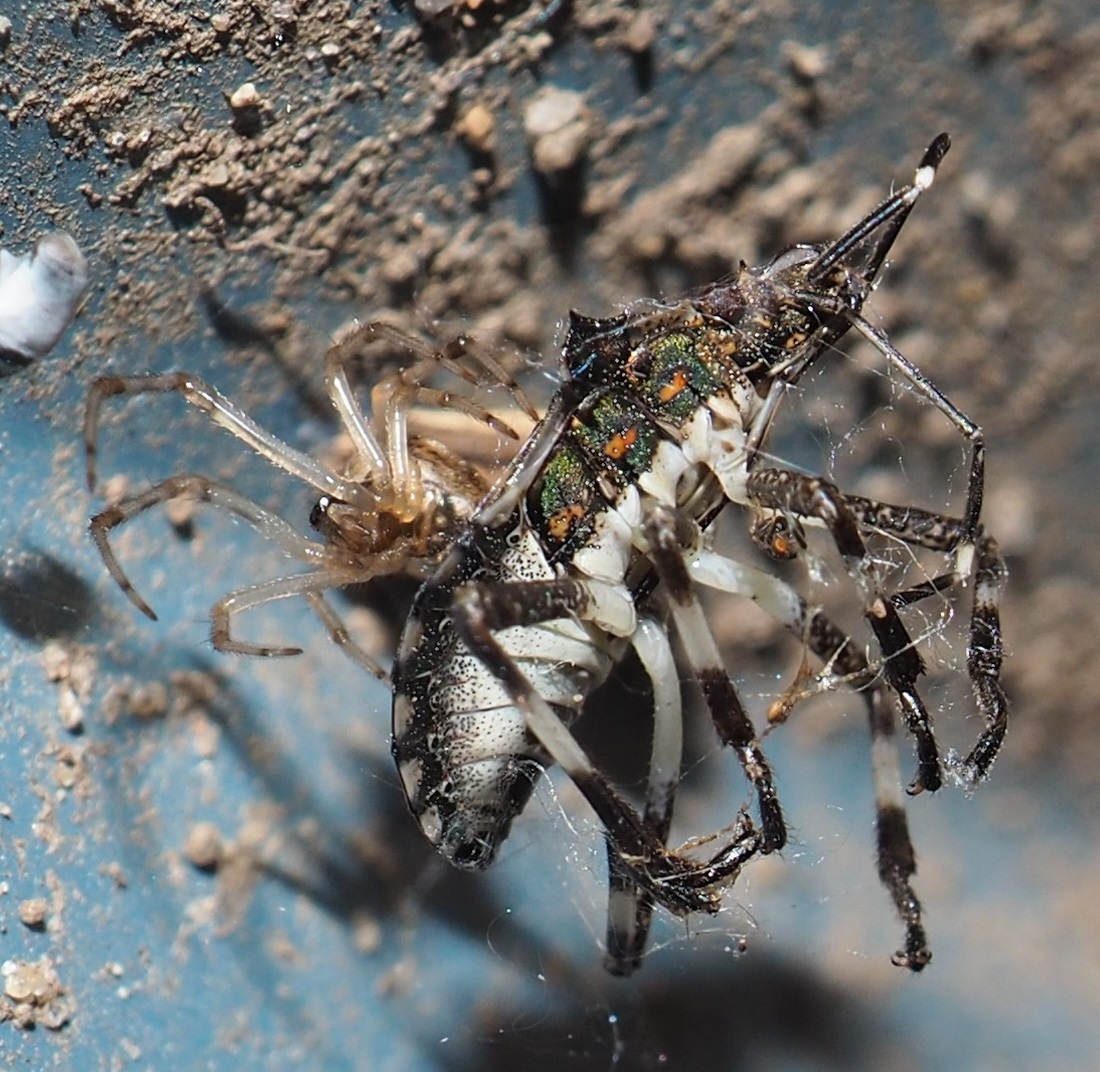

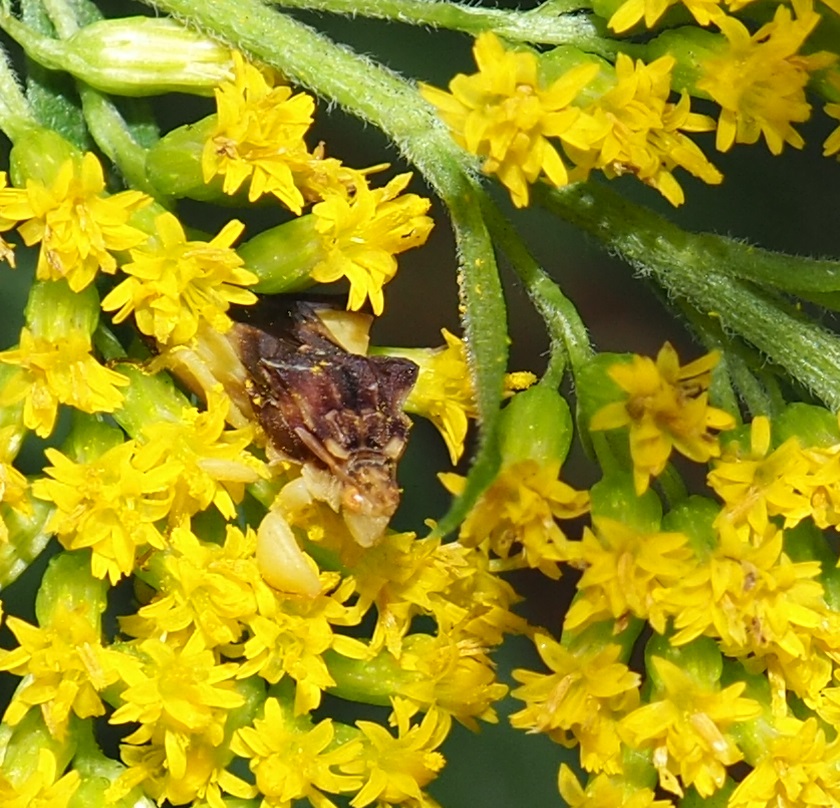
The following is an Assassin Bug. In fact it is genus Zelus, species luridus. You might wonder if this insectivore is related to the Ambush Bug just above (Genus Phymata). After all, they don't look a bit alike (to me, at least). But here are their family trees. They are both Assassin Bugs (Reduviidae). After that, you can follow one branch of the tree down to Jagged Ambush Bugs, which are the ones we get here;
Assassin Bugs (Reduviidae) » Ambush Bugs (Phymatinae) » Jagged Ambush Bugs (Phymata), which is our friend here.
and you could follow another branch of the tree down to our favorite Assassin Bugs, in genus Zelus.
Assassin Bugs (Reduviidae) » Harpactorinae » Harpactorini » Zelus » subgenus Zelus (Zelus subgenus Zelus) »
In fact, someone on iNaturalist.org just told me that actually the only Zelus in Michigan is OUR favorite little Assassin Bug. After all this time, to finally find out something for true!
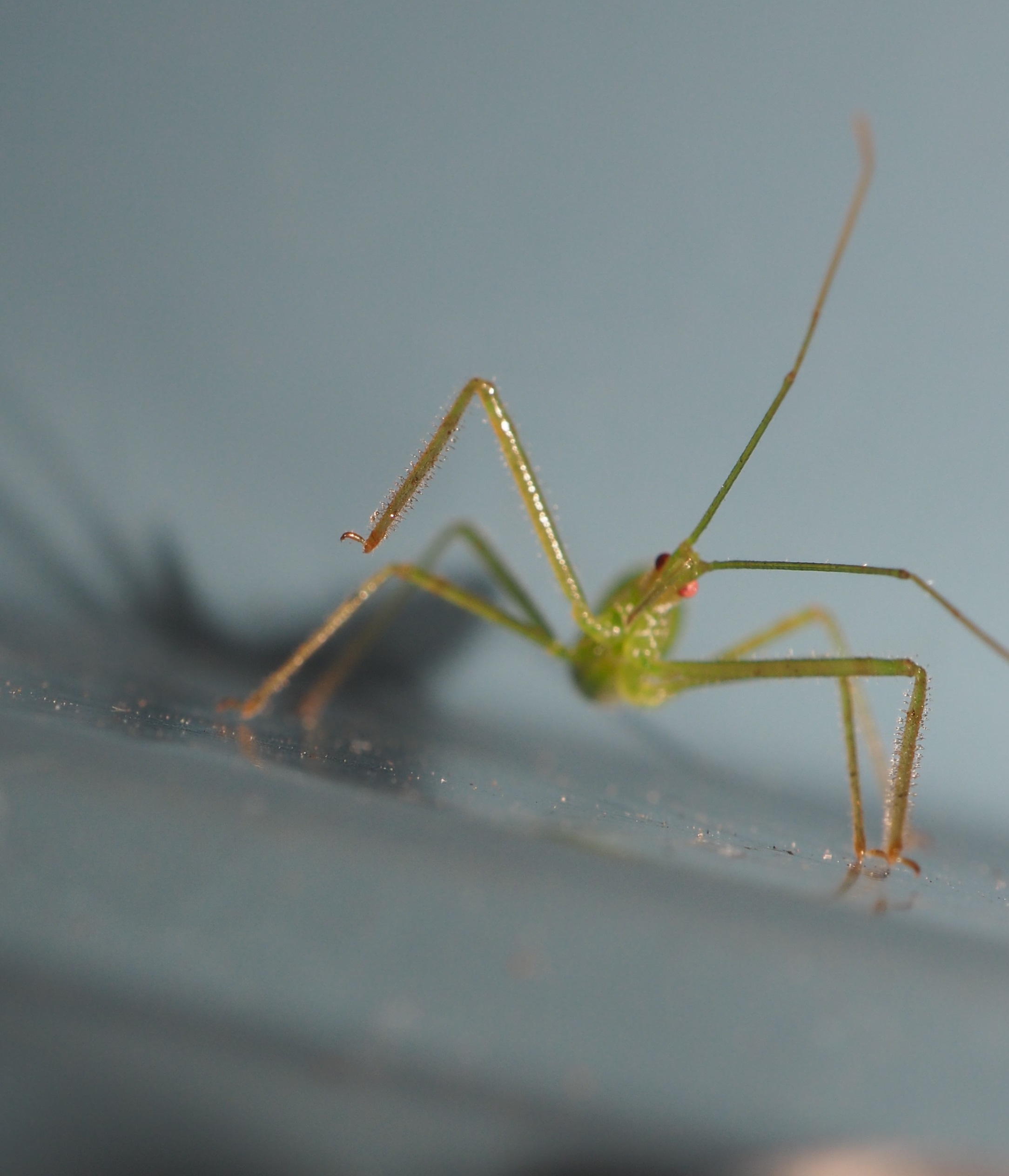
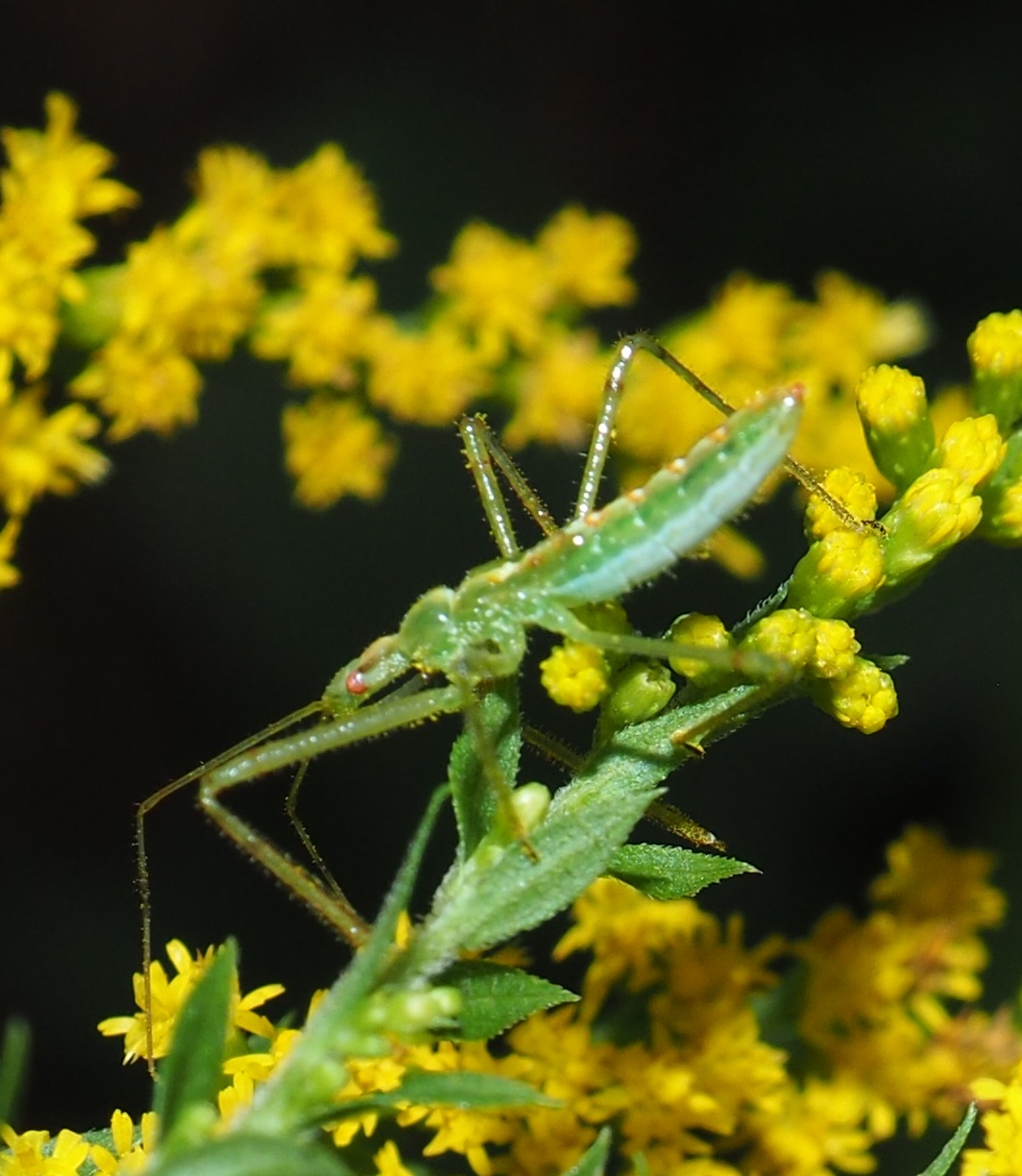
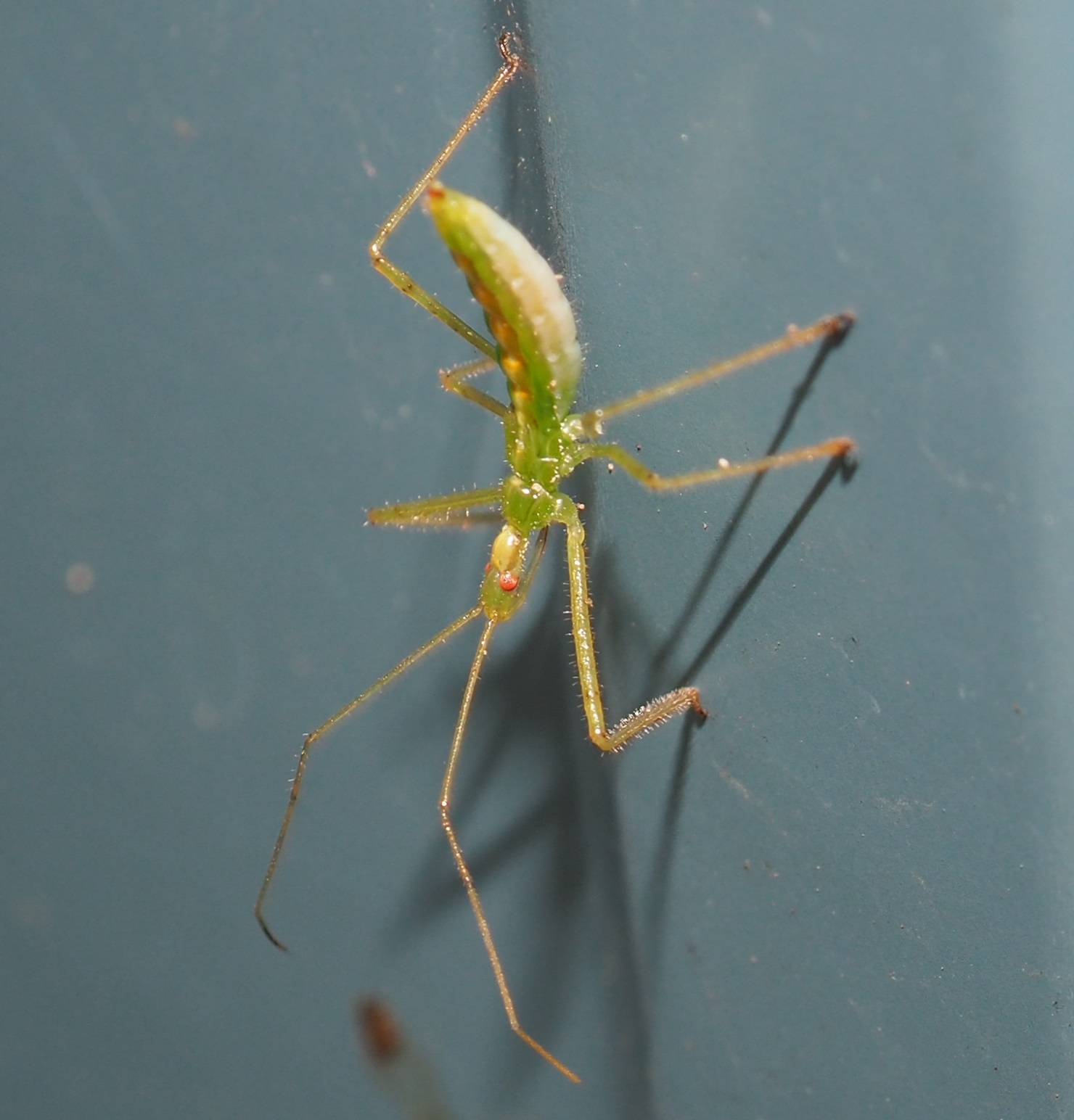
Let's see if we found any leafhoppers or their kin. Why yes, here is one we saw a while ago, the pinkish one. Second is also one we have seen - as an adult - but we saw quite a few of this one as nymphs - the ones that looked as if in a war game. Here is one as an adult.
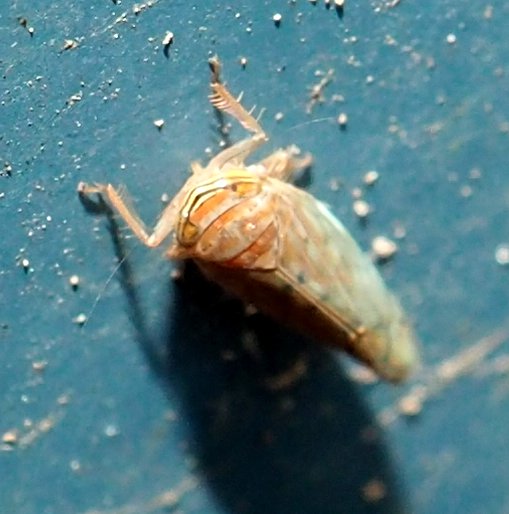
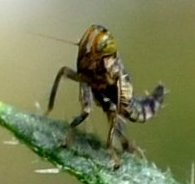
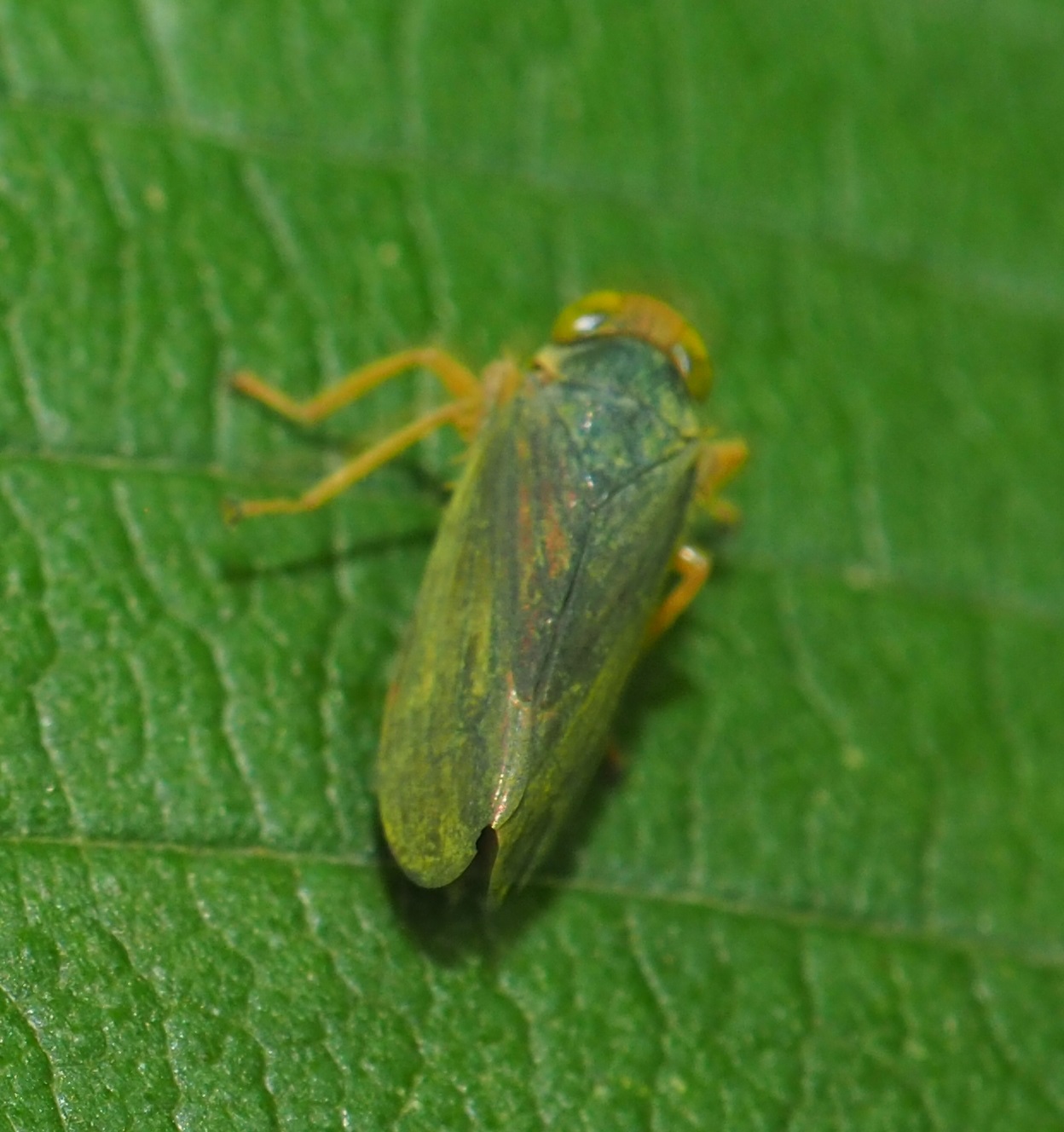 :
:
Here are two new ones for me. But Number #3 is the Japanese Maple Leafhopper, which I think as we speak was sunning itself on one of the Maple species in the yard.
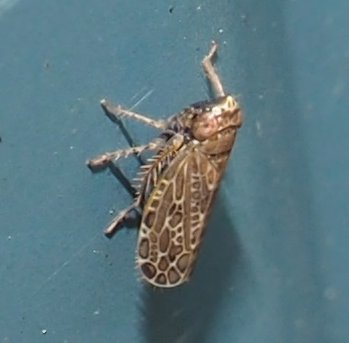
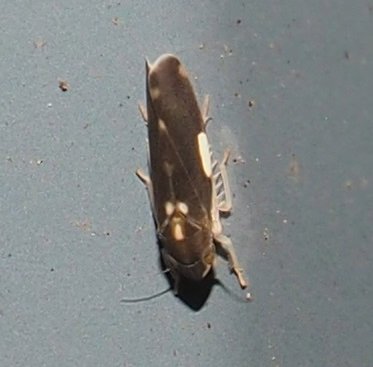
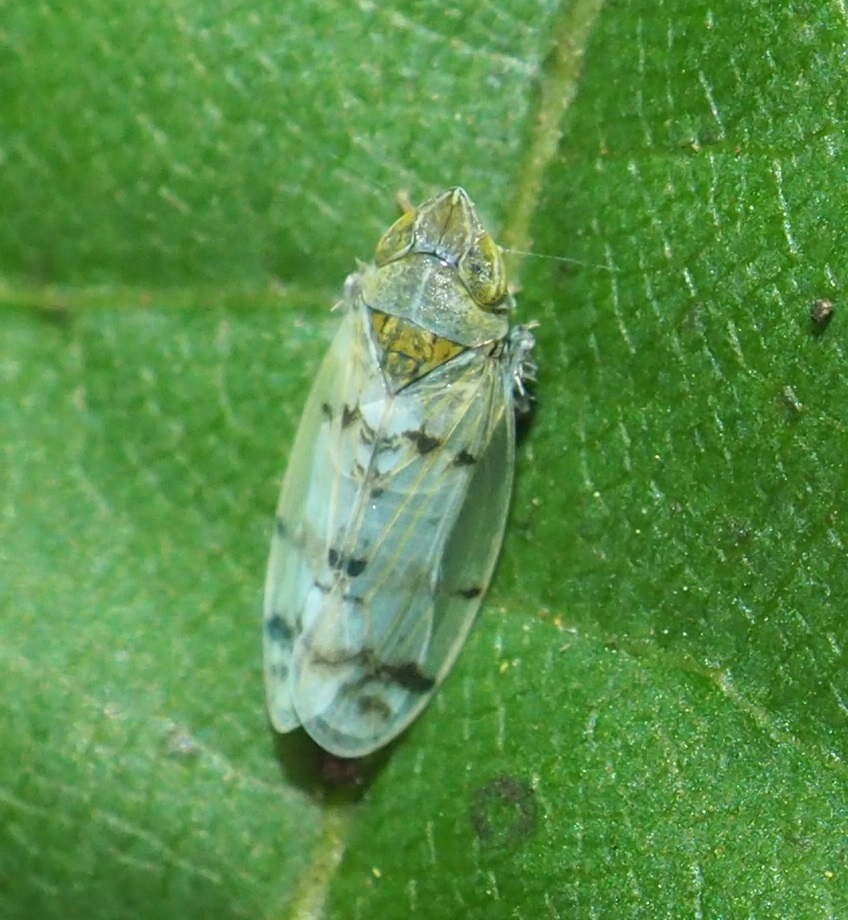
Here is a Stilt Bug. Can you find six legs? Then comes one of those reddish-greyish Stink Bugs at an unexpected angle. And of course, no count of the Bugs would be complete without this Boxelder Bug.
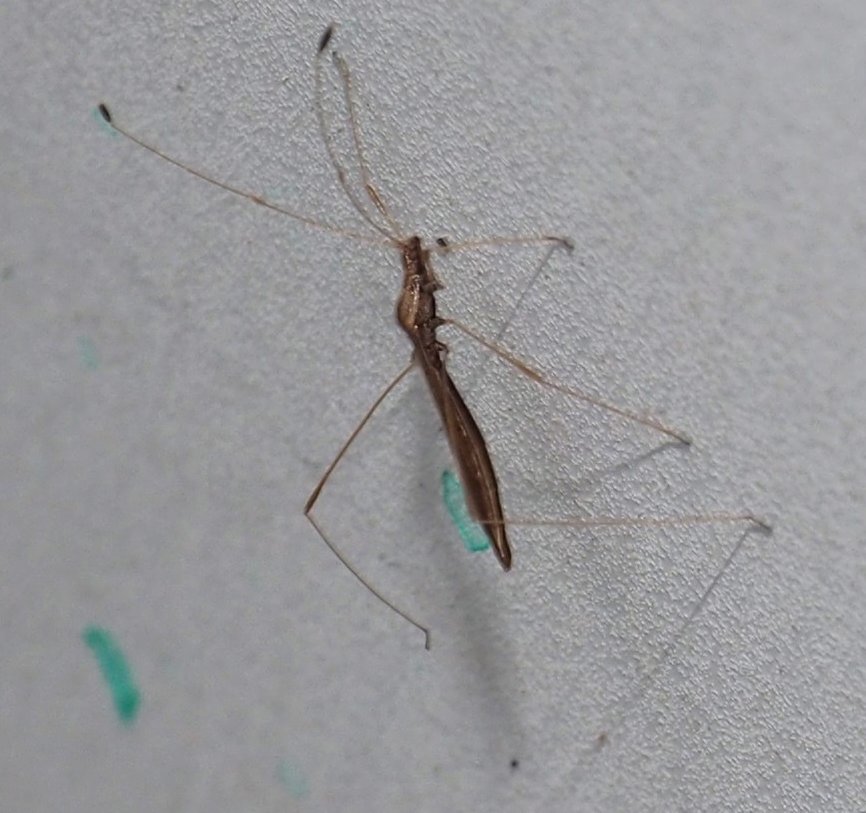
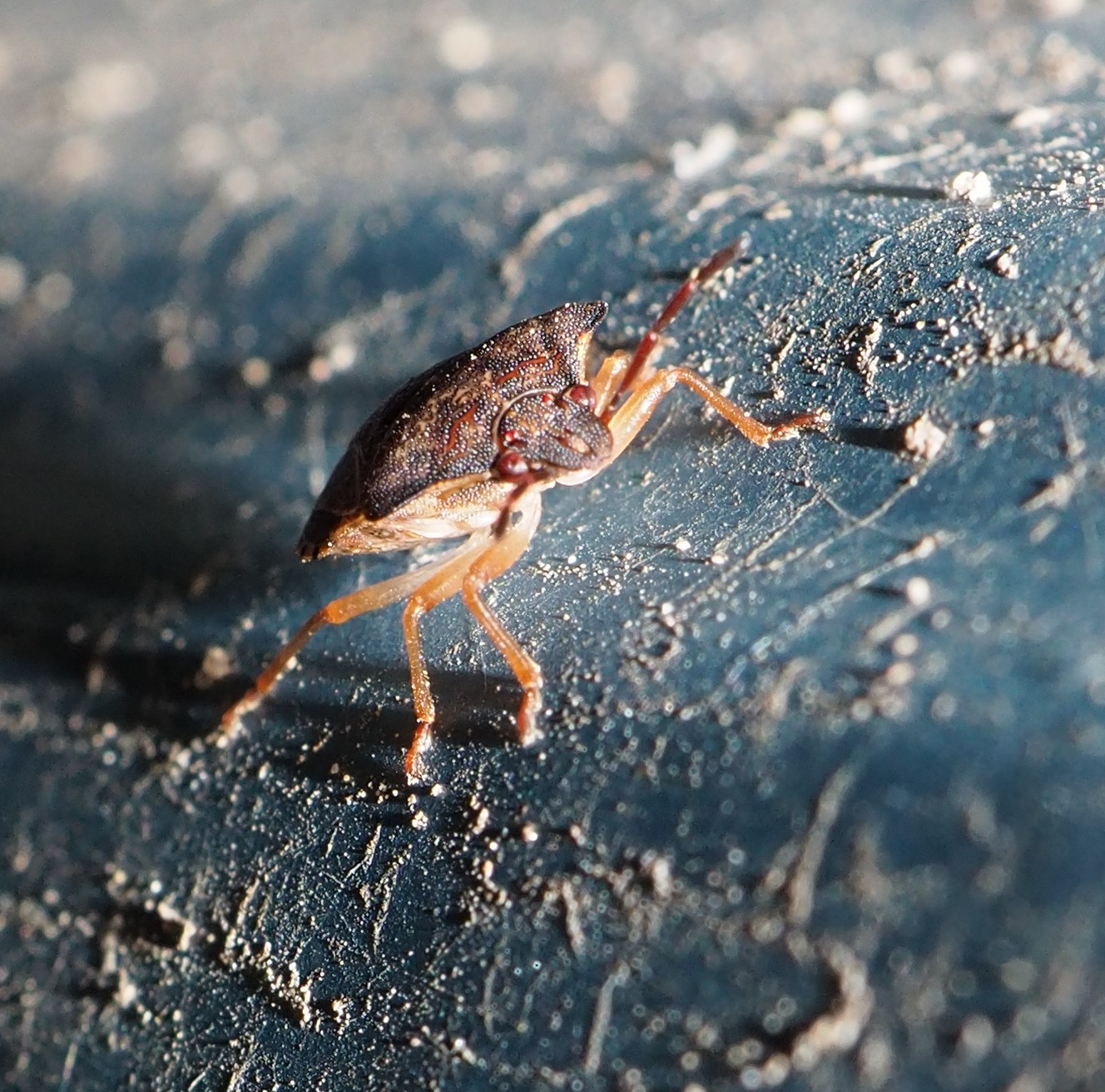
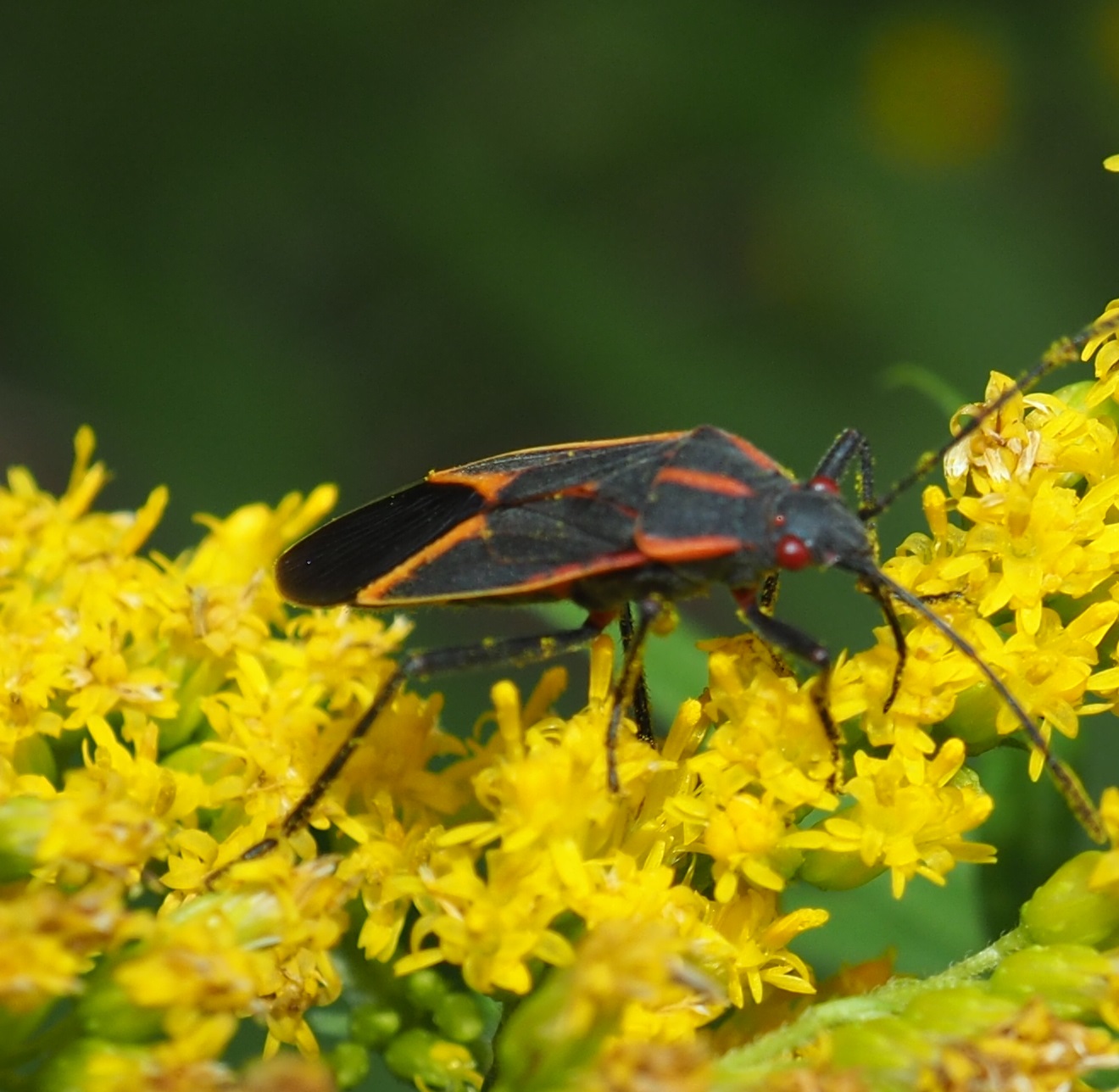
Here is the Grey Hairstreak Butterfly - it just can't get enough goldenrod nectar. If you magnify the picture and scroll down, you'll run into some of the Green Aphid colony, and then a kind of fly that is just not quite recognizable. In the second picture, there's a cocoon, but whose? I Dunno. It could be lots of things. Last is a good-sized black cricket. Every day and night there is some kind of cricket-calling.

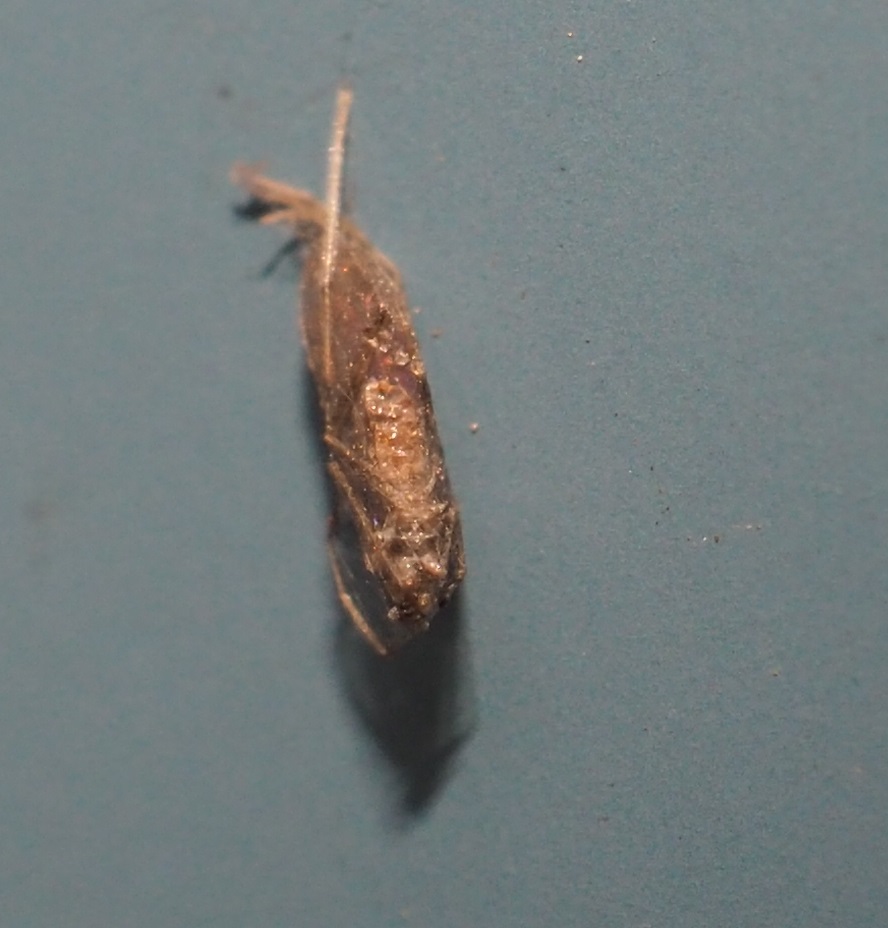
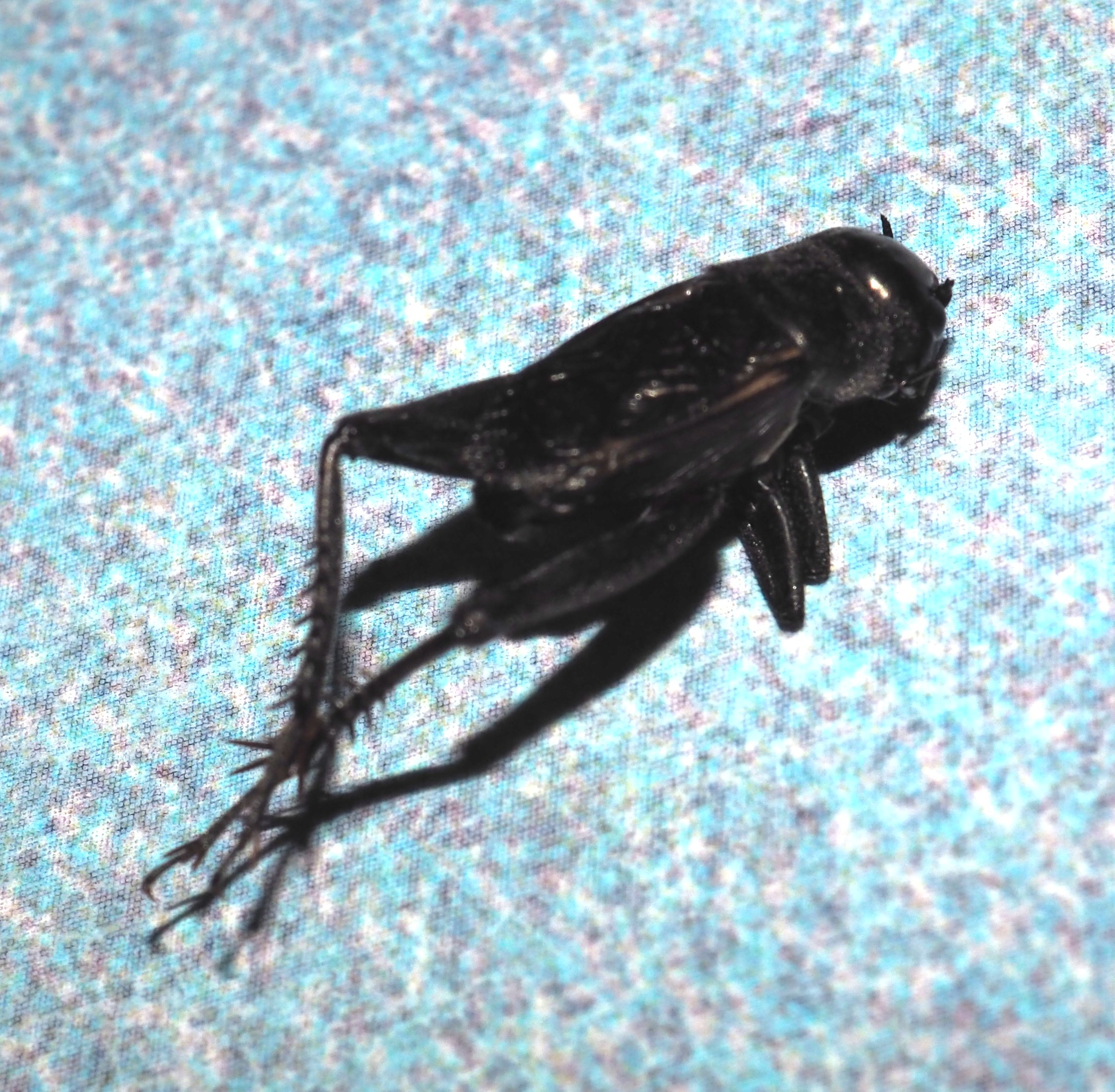
For Koinpro, here's a playground of Earwigs. An earwig from the rear end. An earwig in fancy dress.
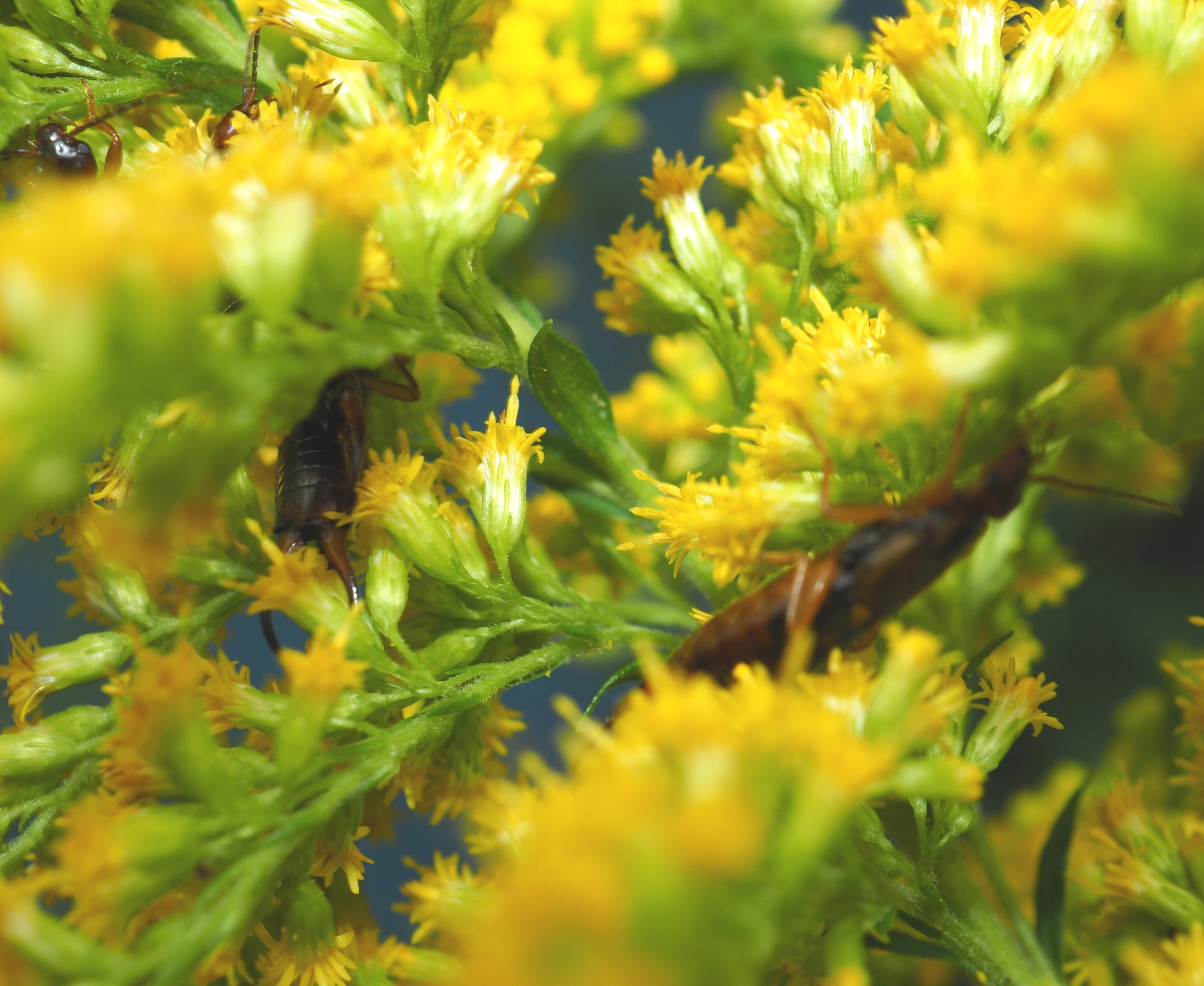

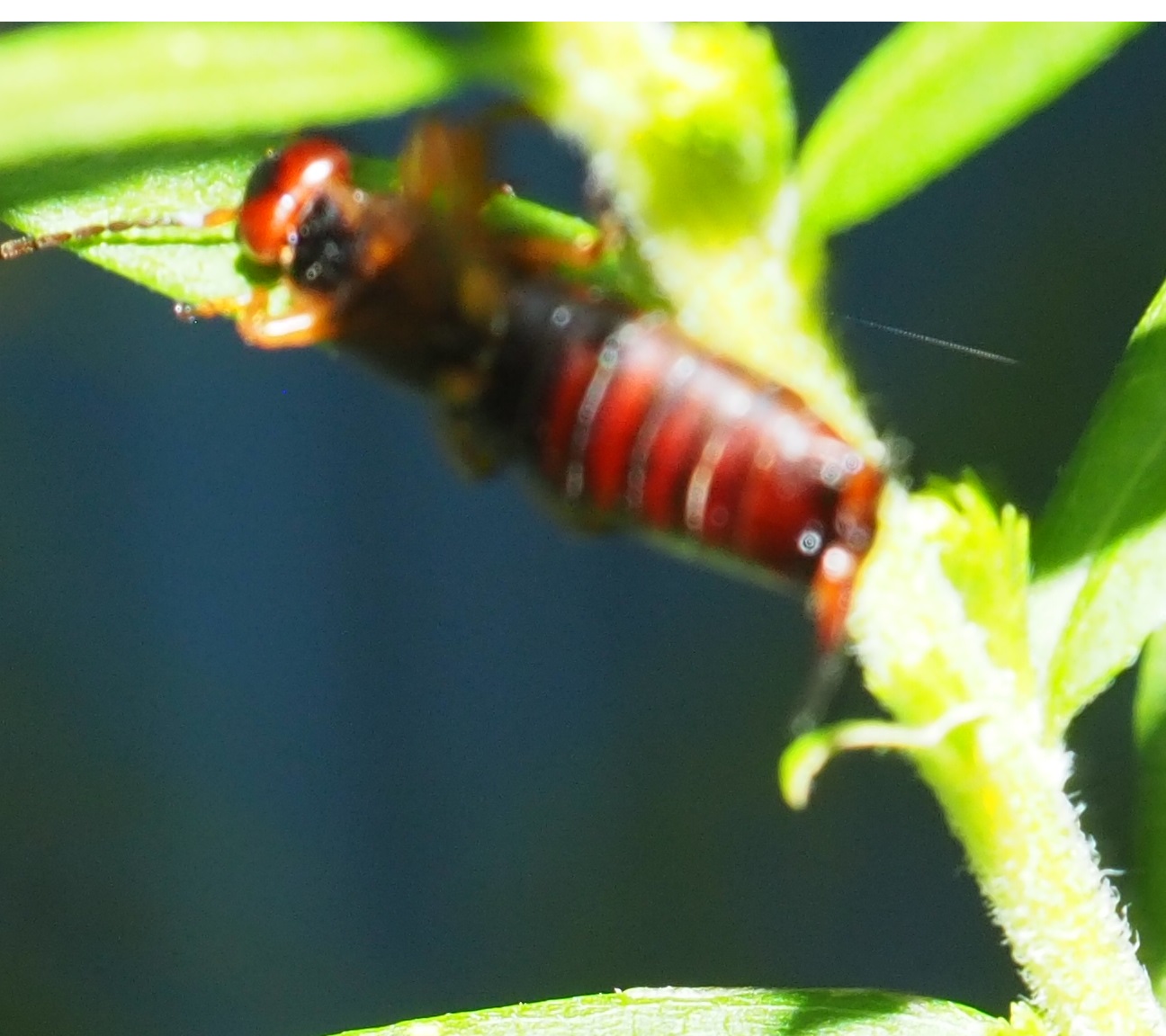
We seem to have wandered into Fly Land. Get your camera ready! Here's a strange Fly (or Bee?) with its beautiful red eyes; the Rear End of another little fly; A fly (I think) that looks sort of that Barklouse clothed in very prickly fur. Fourth? Maybe it is a black Fungus Gnat?
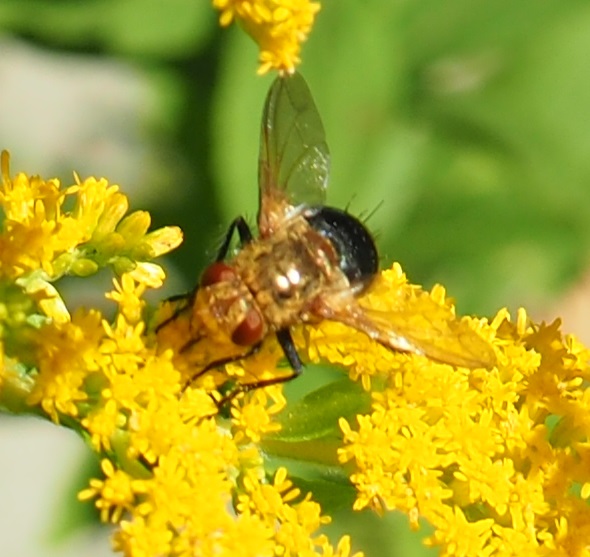
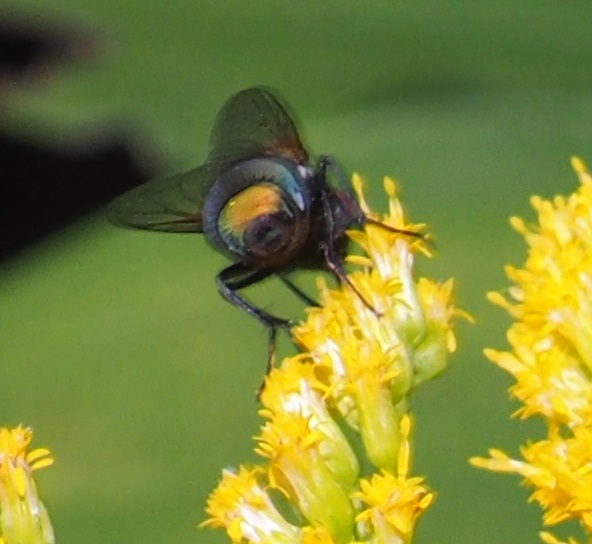
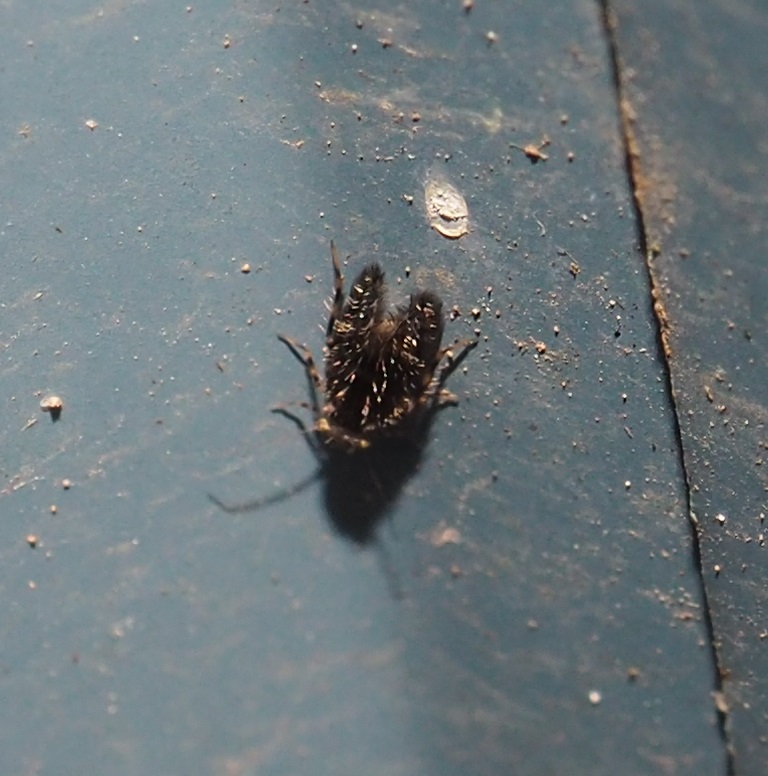
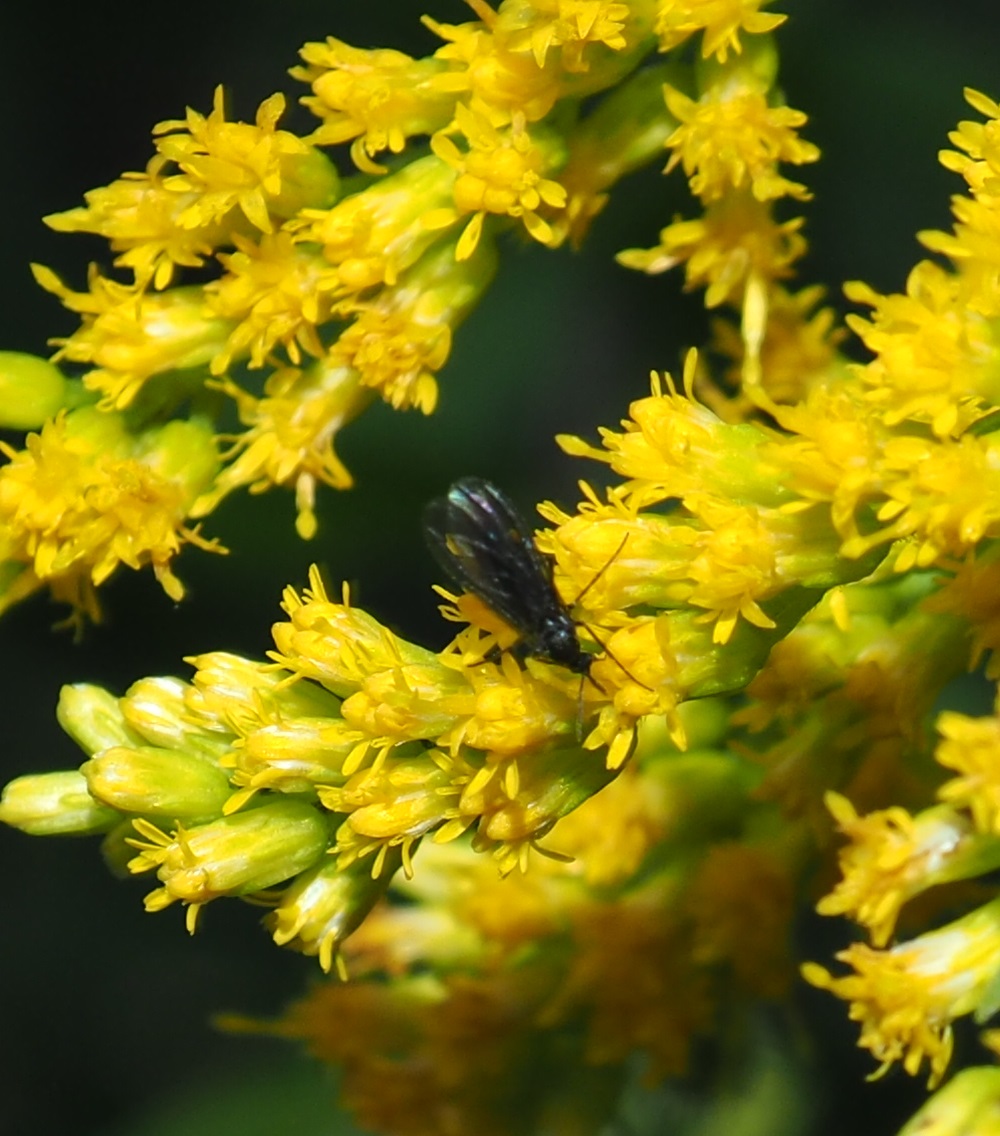
Here's a lovely golden Tachinid Fly, a nice large Green Bottle, and a tiny Hover Fly, Toxomerus geminatus. Finally a nice picture of the Hover Fly's iridescent wings.
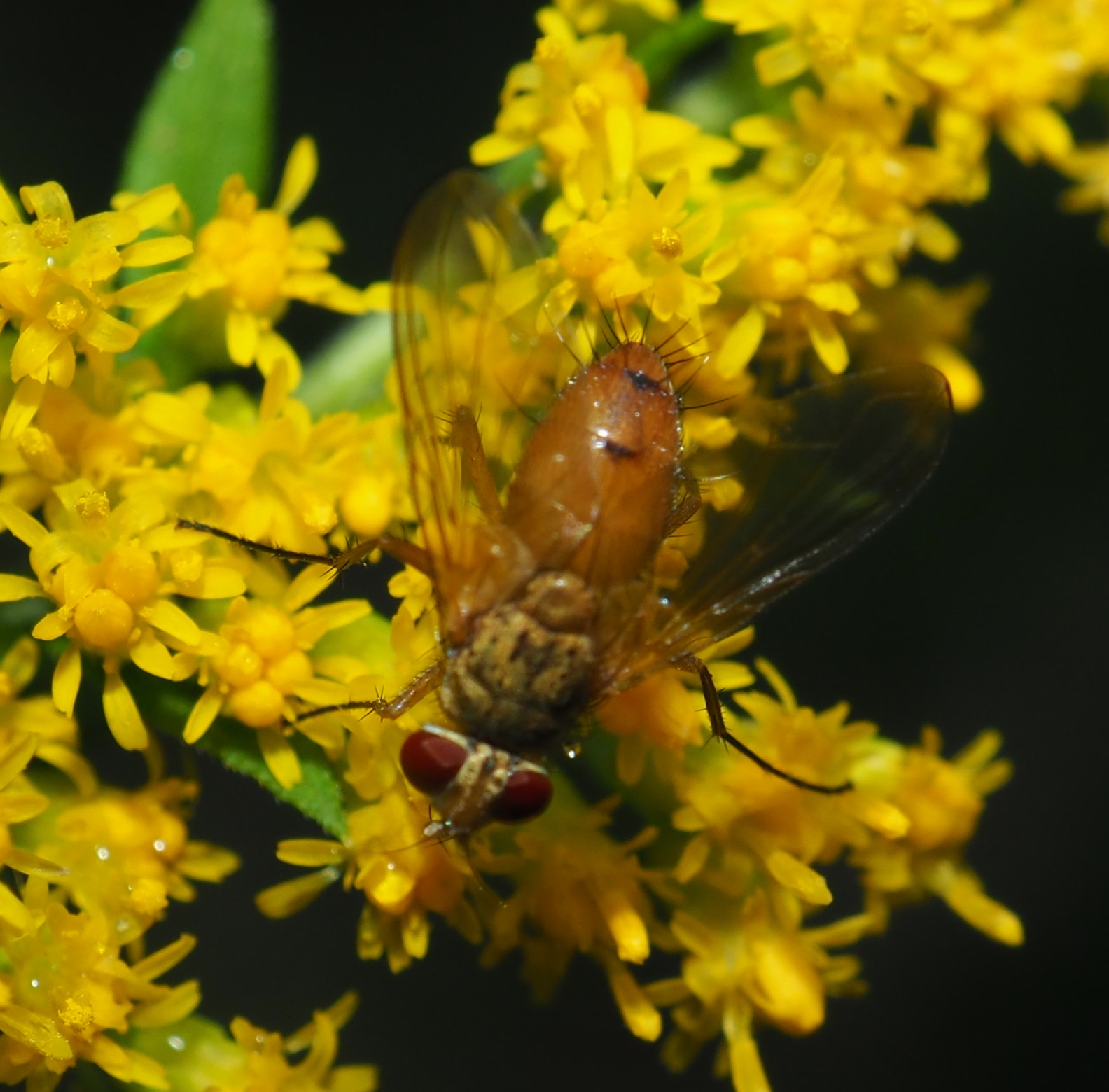
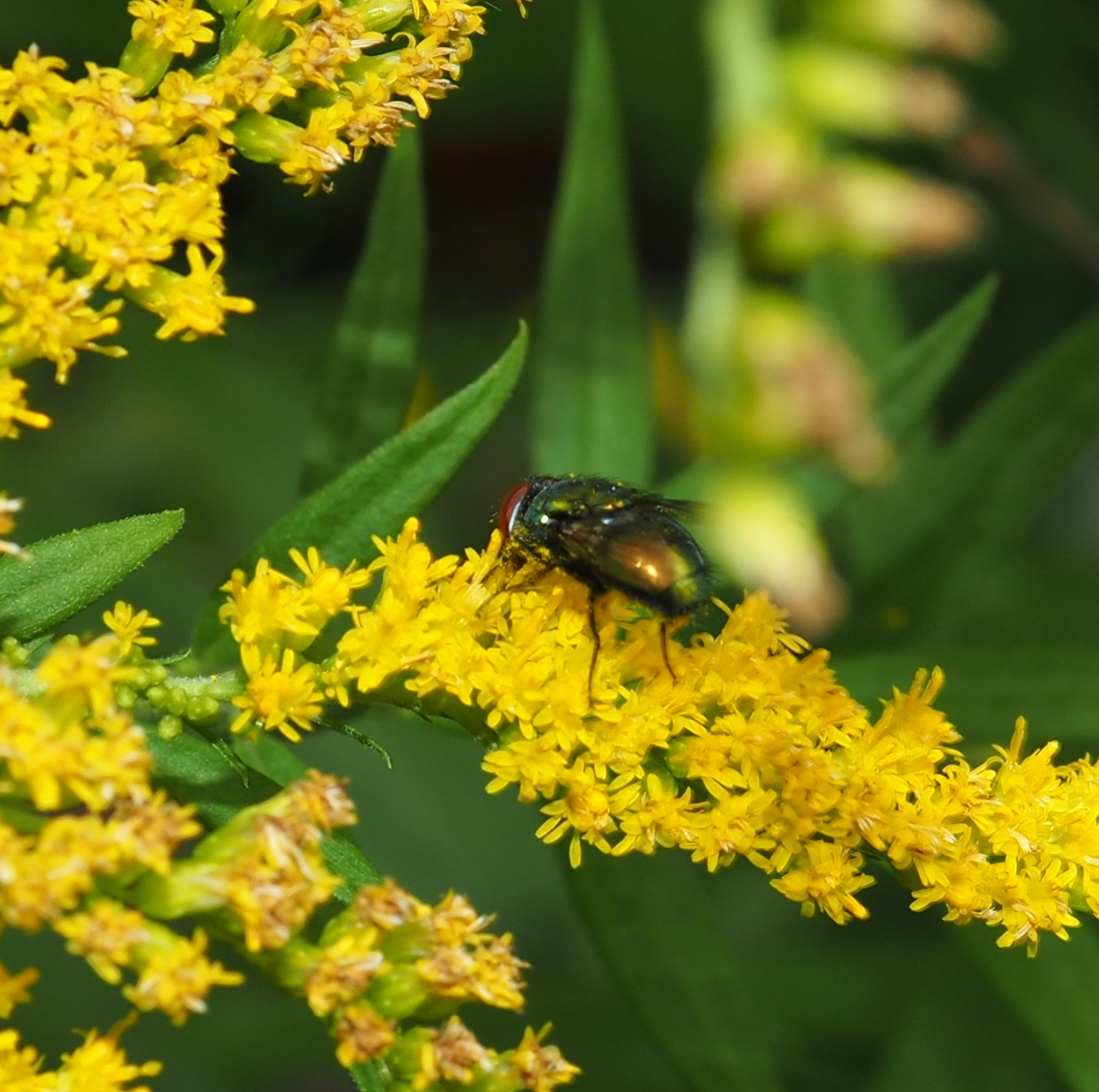


Another kind of Hover Fly, genus Eupeodes. A Lance Fly; A very large Bee Fly, genus Villa, probably.
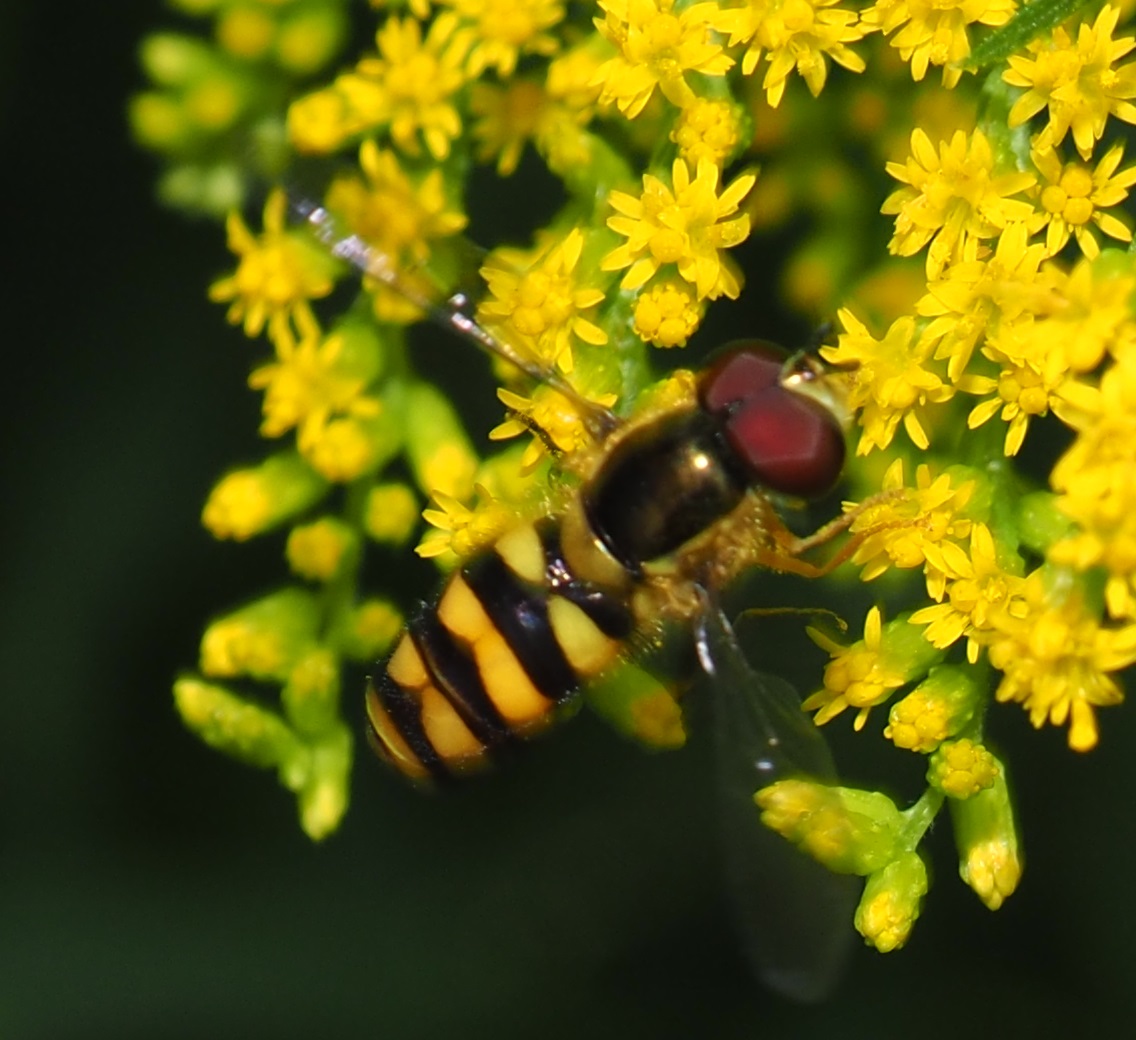
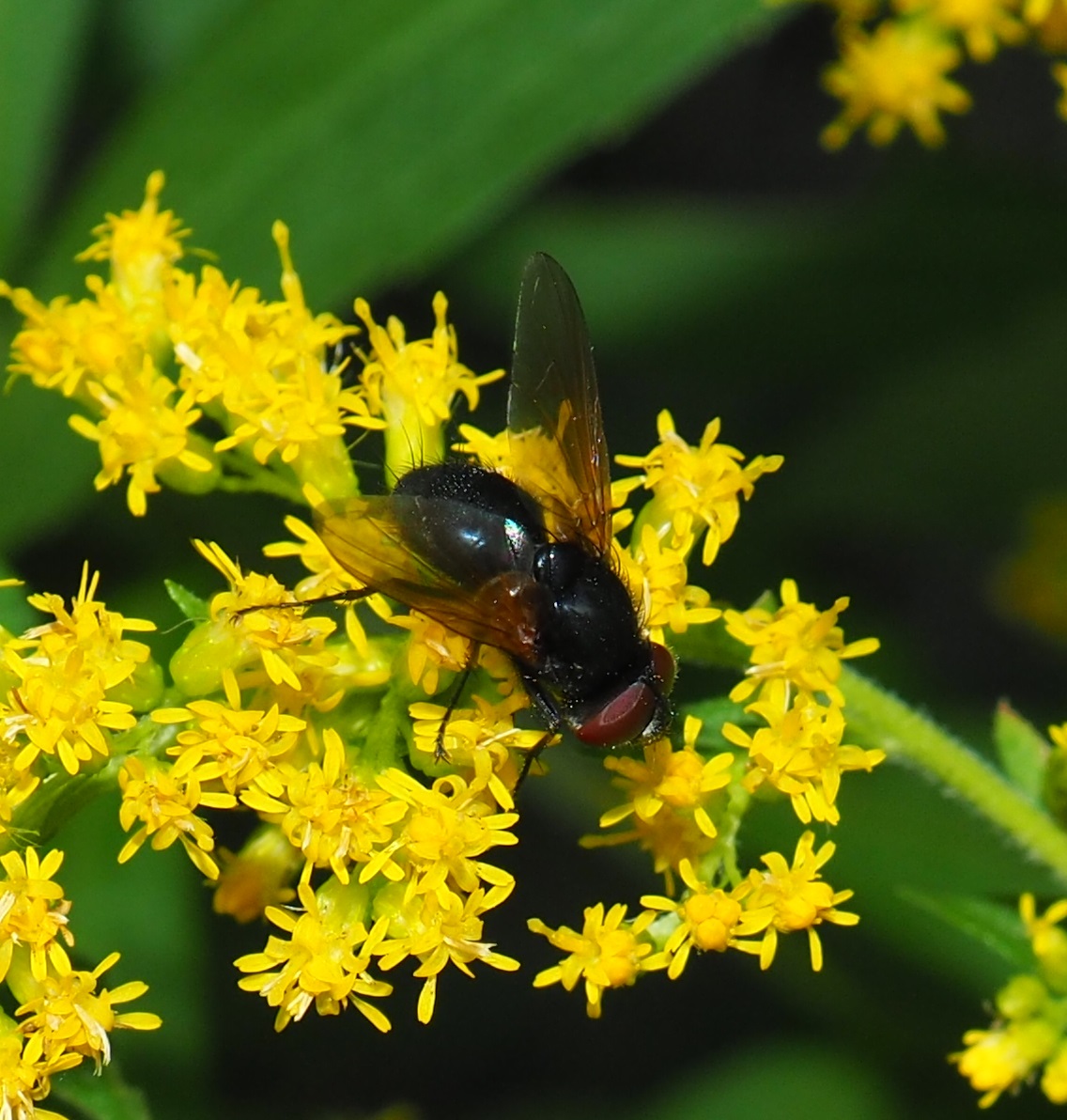
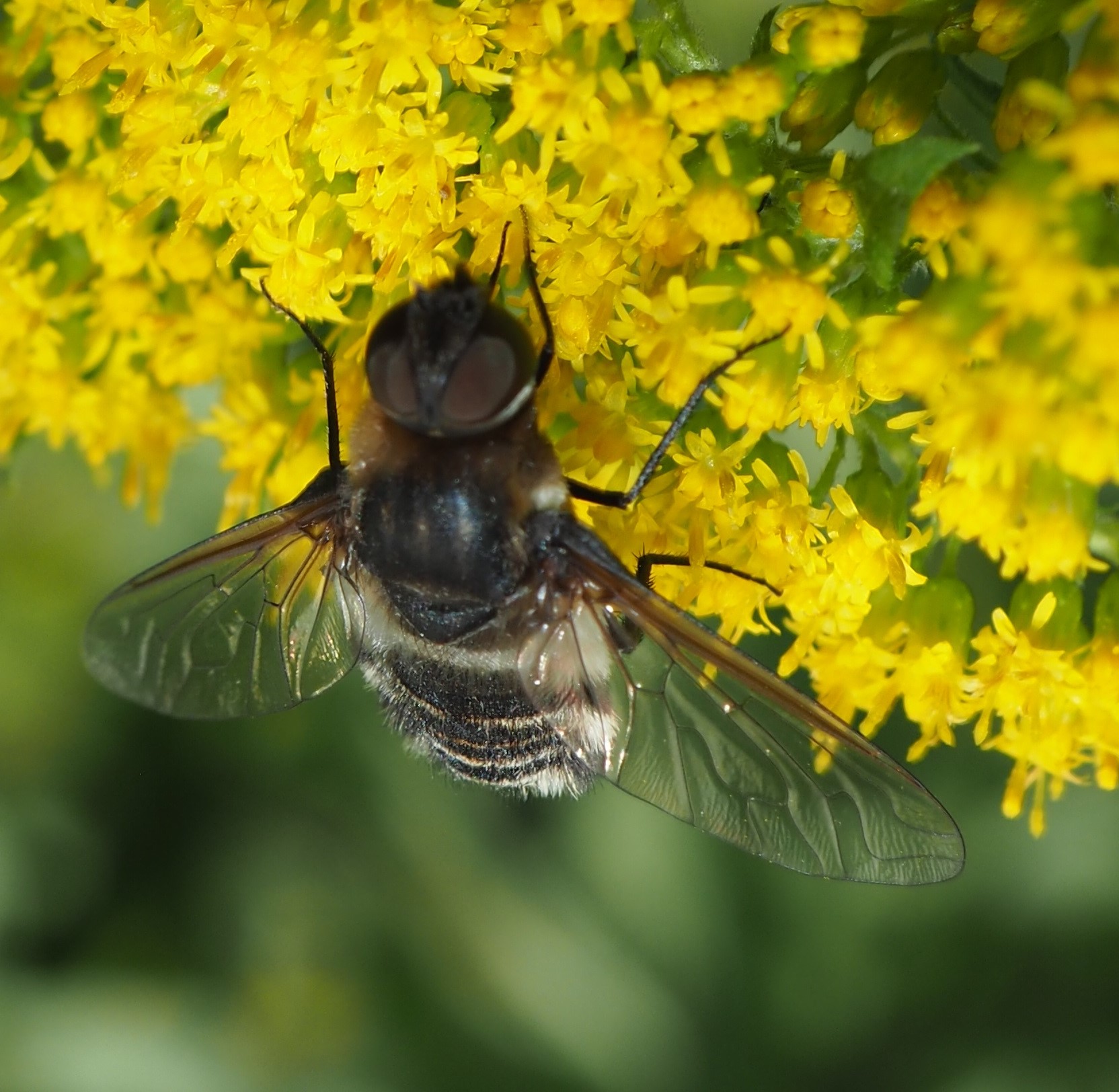
Here is a fat little fly, almost ball-shaped from this angle. And a prettier than usual Chironomid Midge. Tell me what sex? And of course, no count of the Flies would be complete without this Moth Fly.
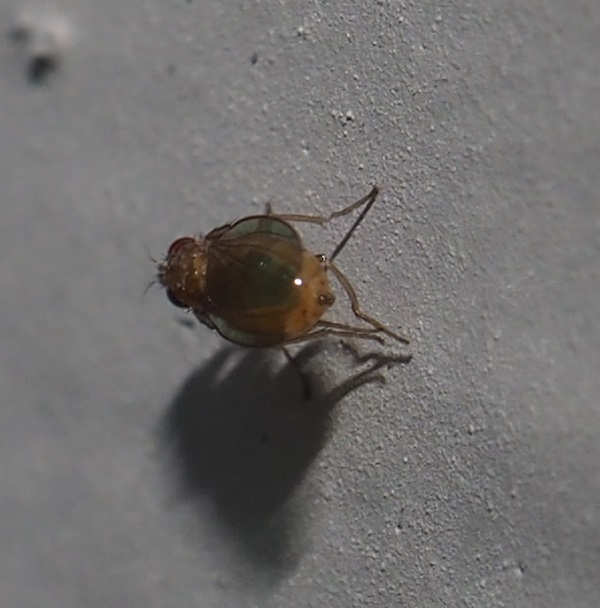

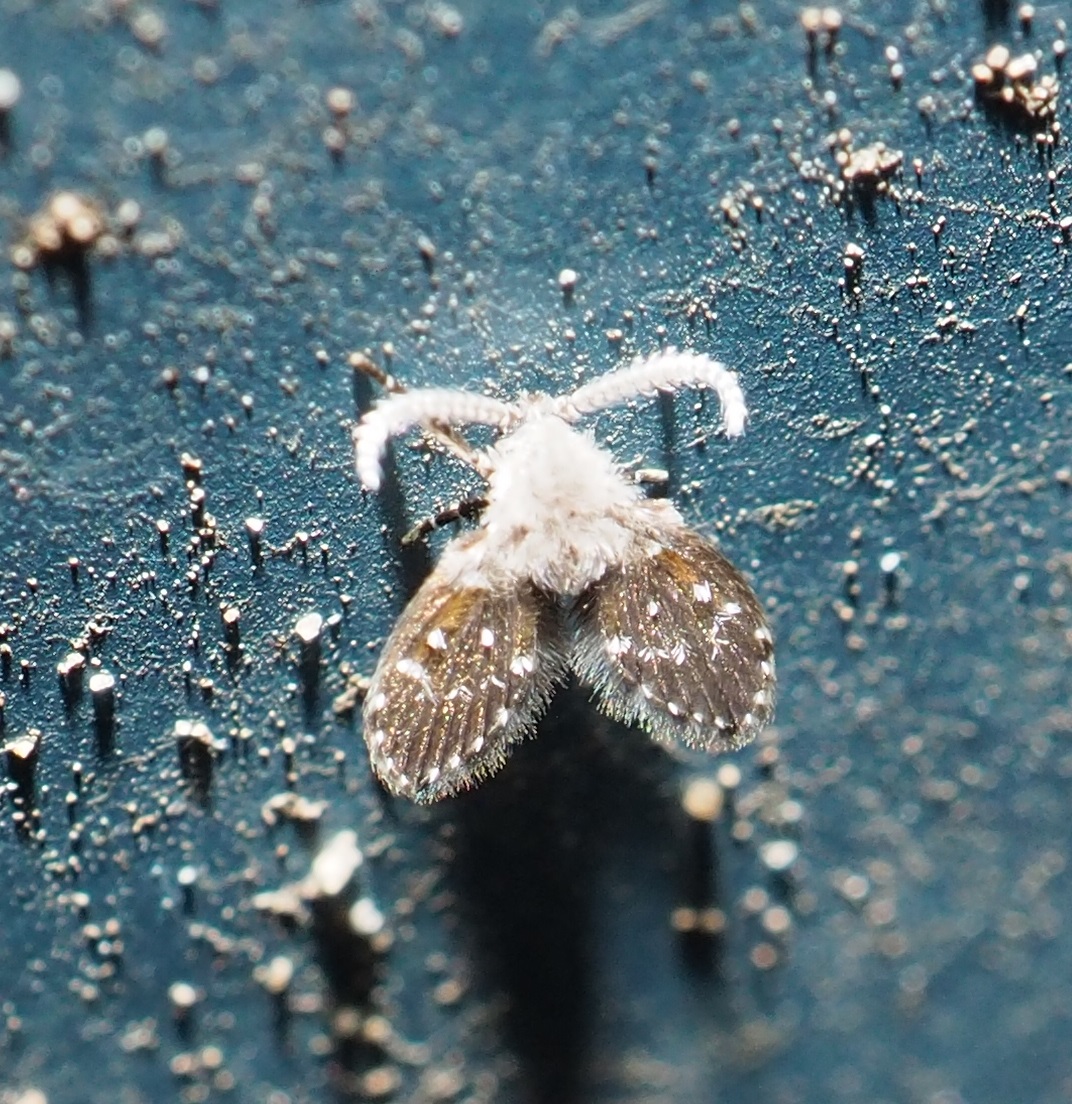
A few more mystery flies. They are usually ones I've seen before but have never persevered to identification.
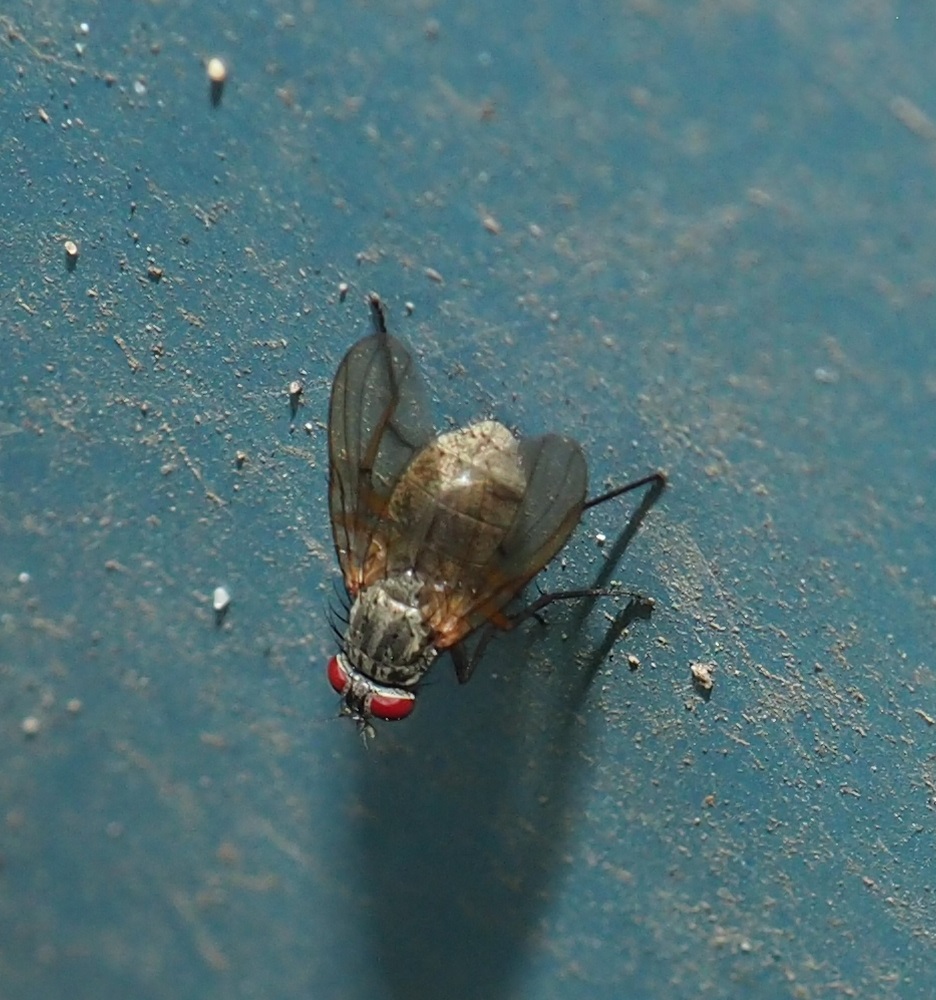
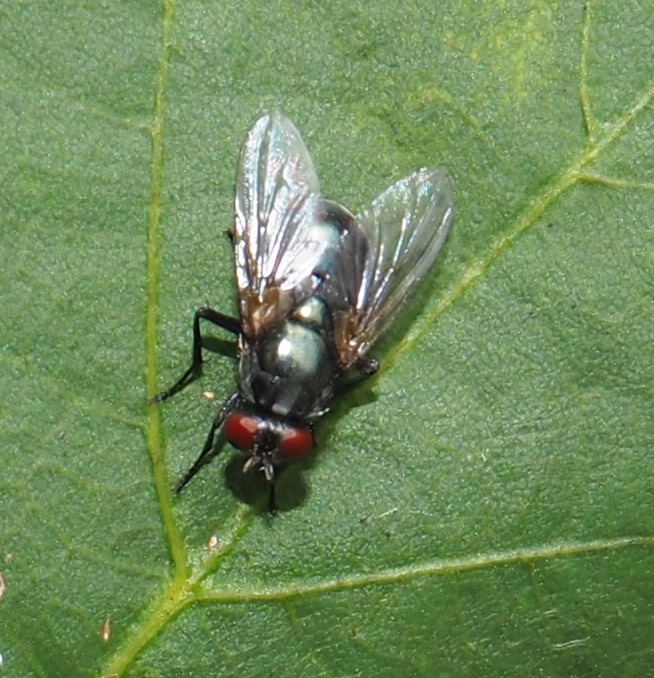
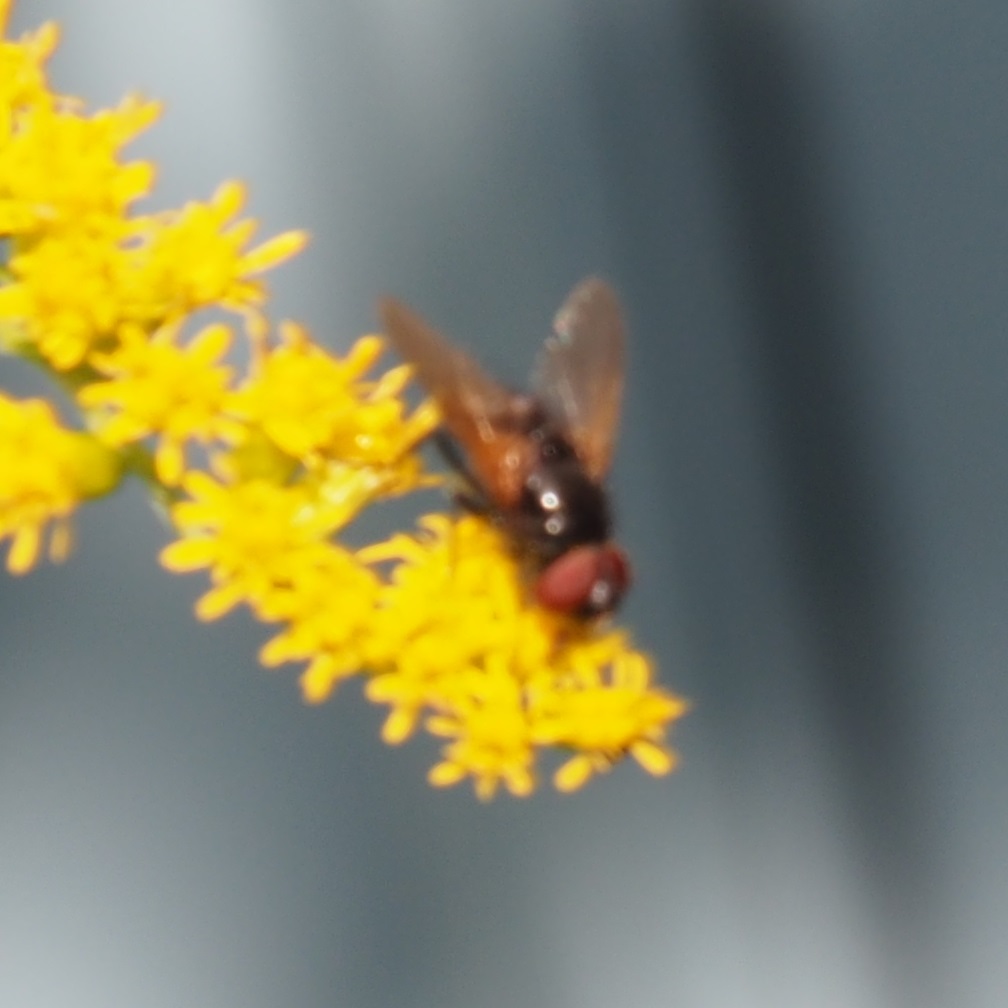
The first one is a Robber Fly. Second, the one with varying dark and shiny blocks, is a Sarcophagus Fly. (Put those two Greek words: Sarco (flesh) and Phagus (eating), together to show that this one is one of Nature's little sanitation engineers.) The third one is another mysterious Fly, and so is the fourth fly in this row.
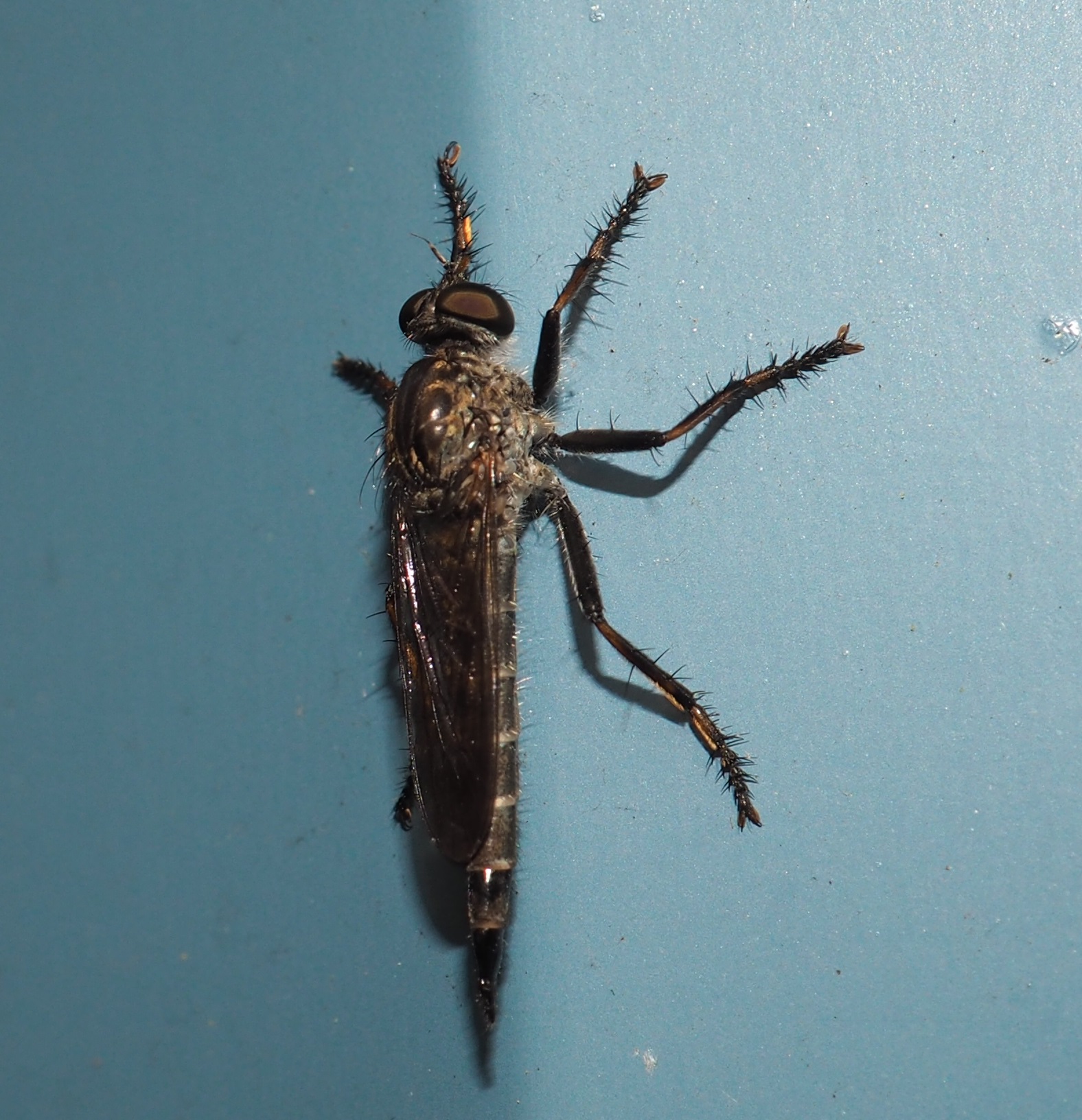

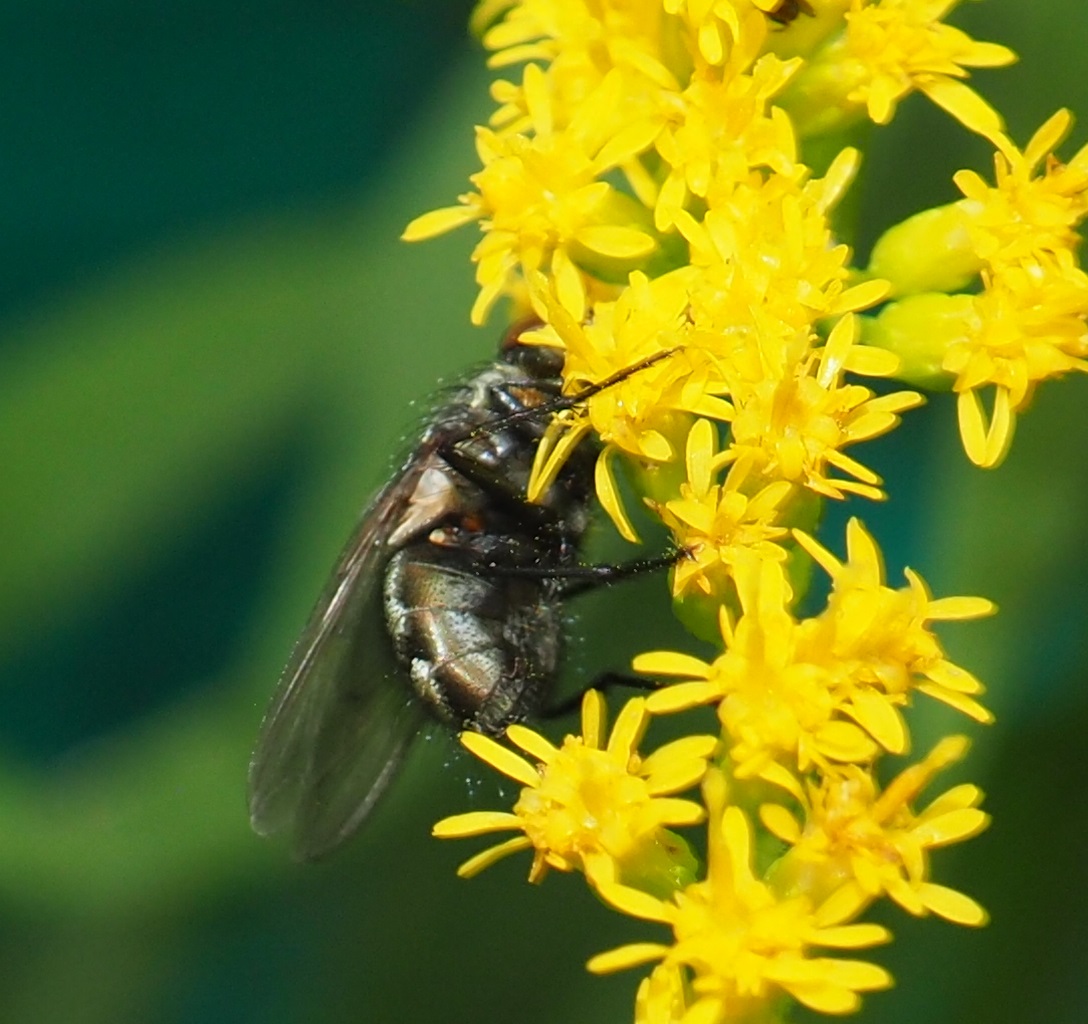
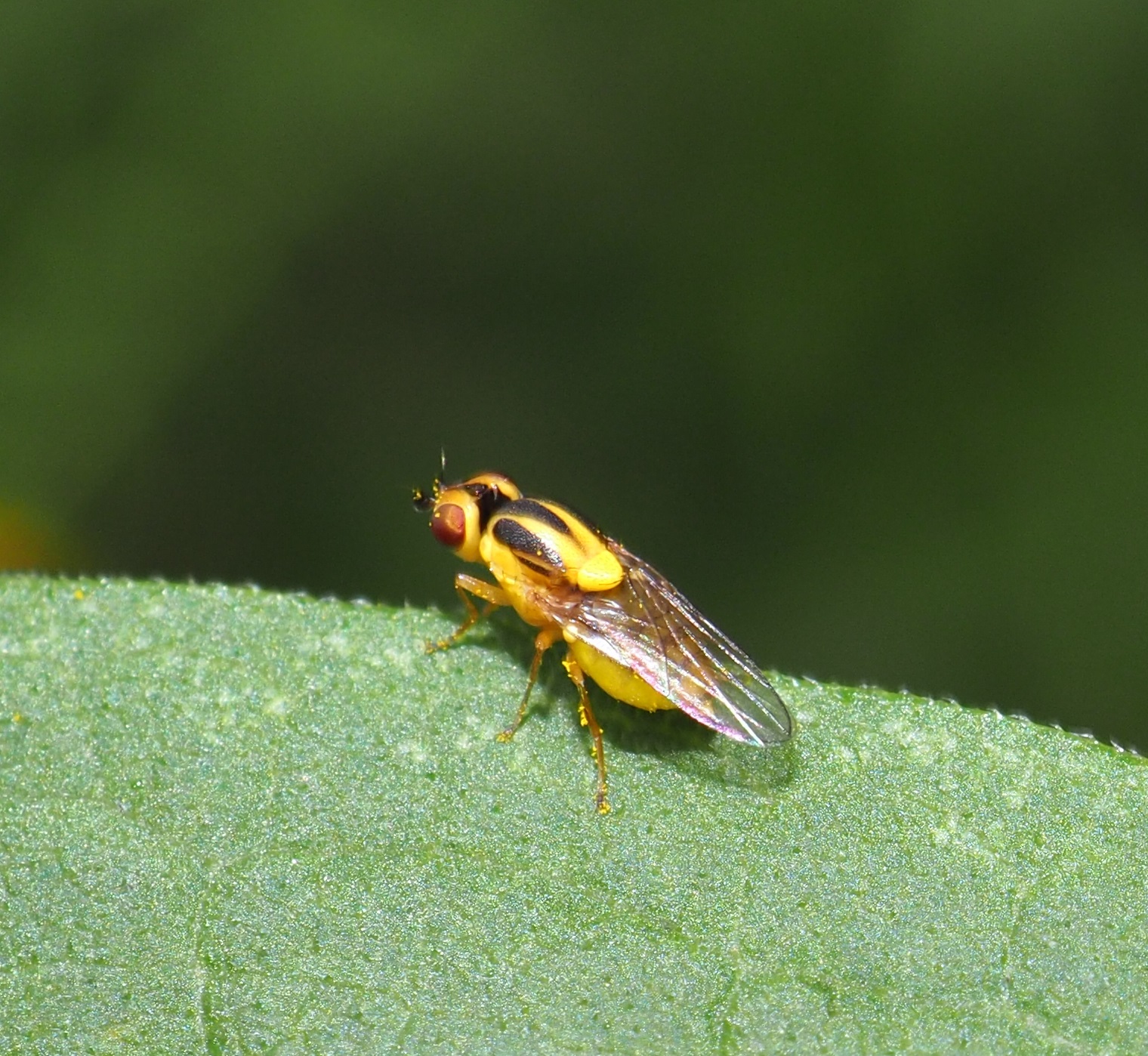
And now I want to talk about a couple of little colorful and acrobatic flies. I first noticed the little Trichopoda (hairy legs) back two years in 2016 at about this time of year, August 28 to be exact. And again in 2017 on August 29. I had forgotten about it until comparing the times of appearance, and thinking that August 28 came and went without Trichopoda pennipes; But then on August 31 of this year, there it was!
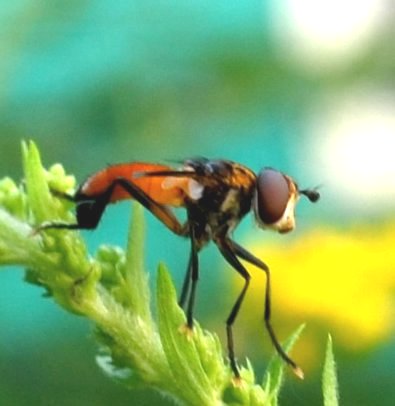
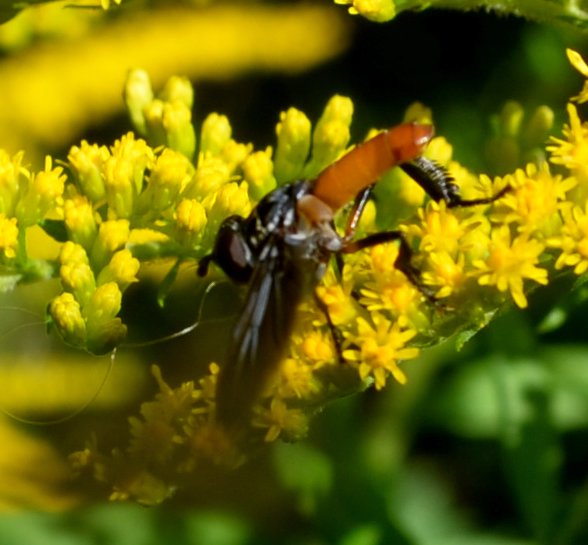
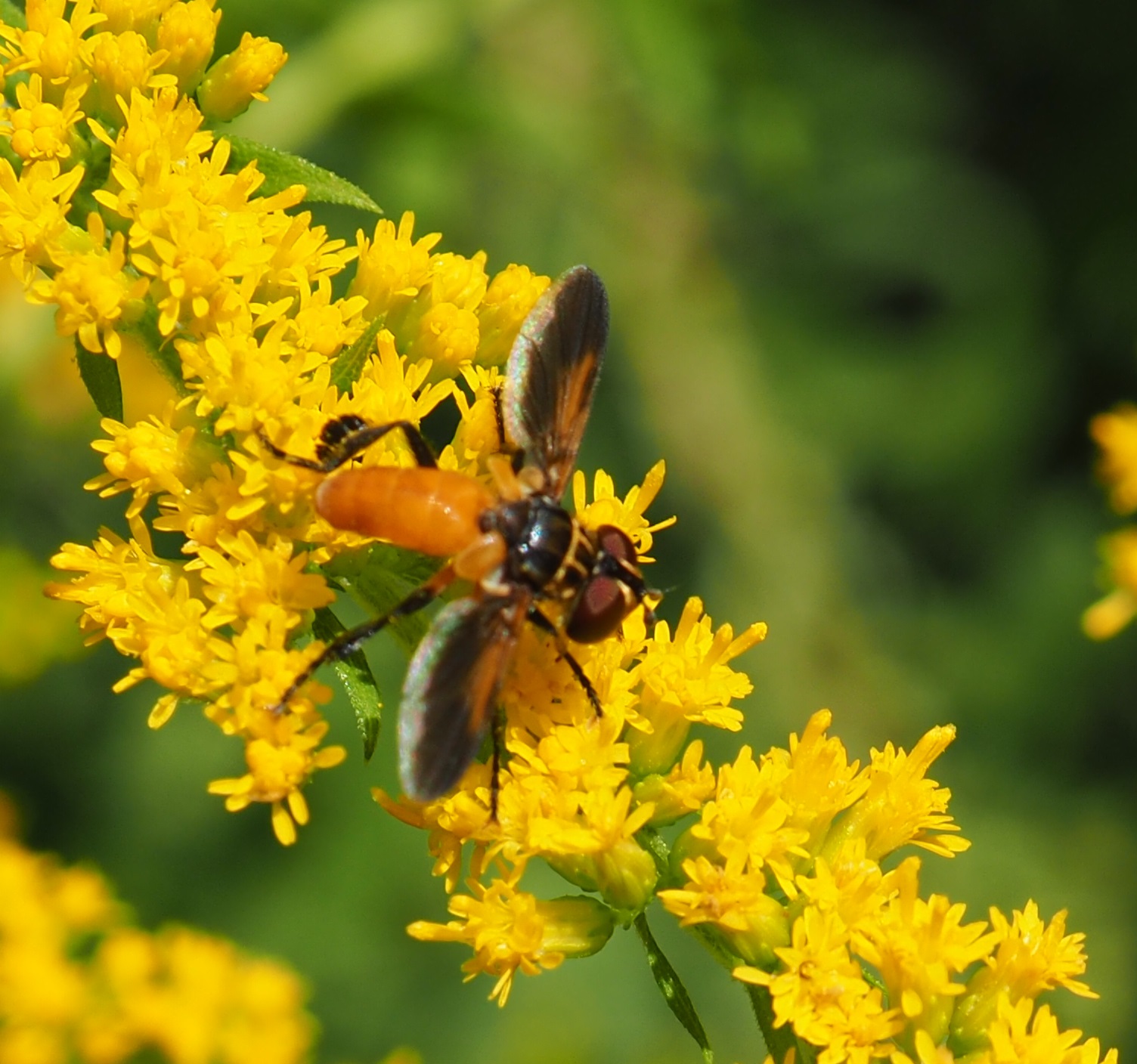
Same story: the other genus of Trichopoda, namely T. plumipes, showed up in 2016, on September 2. Either I didn't look for it in 2017, or it didn't show up at all, but this year, it made its repeat appearance on September 4. I don't quite understand this phenomenon: the weather in these three years has been quite different, but this little fly and its cousin have appeared at almost exactly the same day of their respective years.

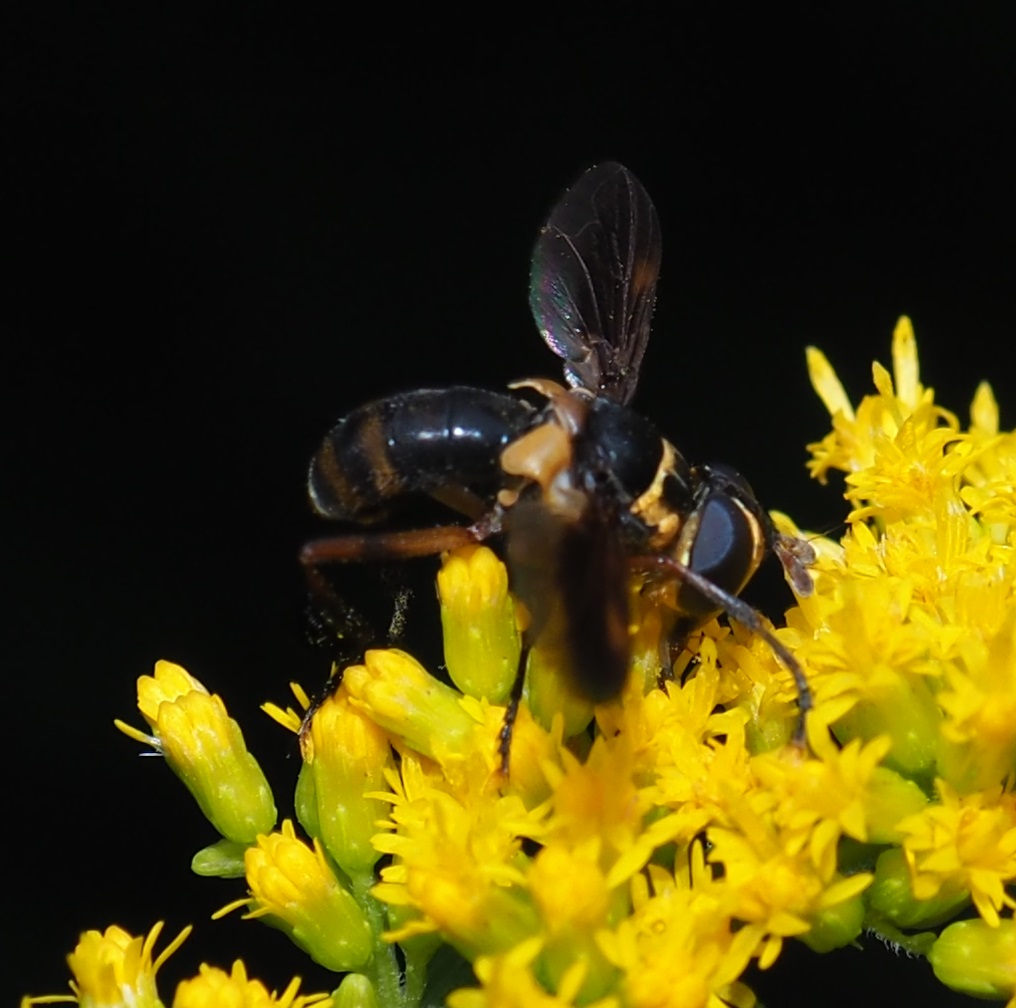
A Mayfly shedding its skin and the shed skin. The pretty little moth, the Ailanthus Webworm.
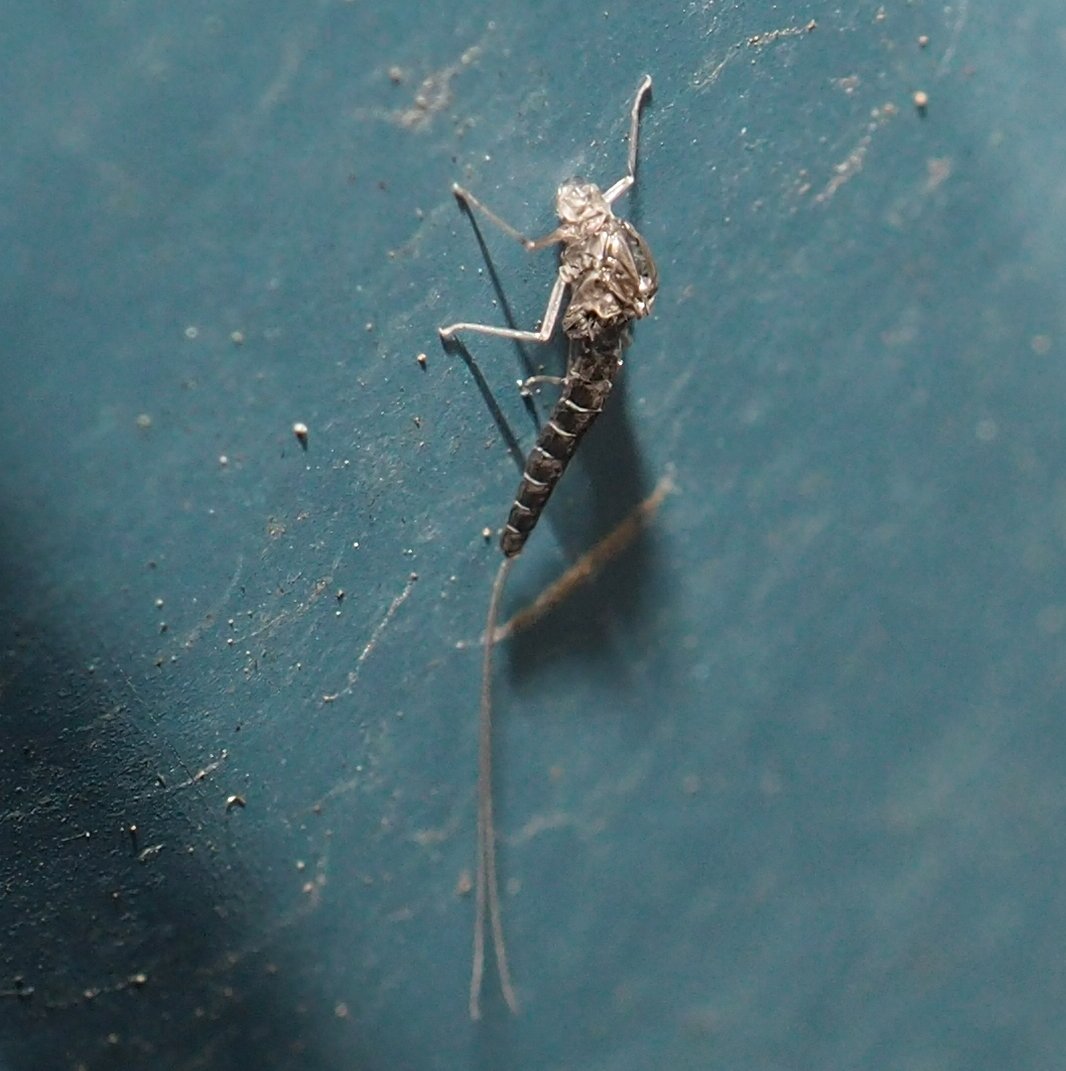
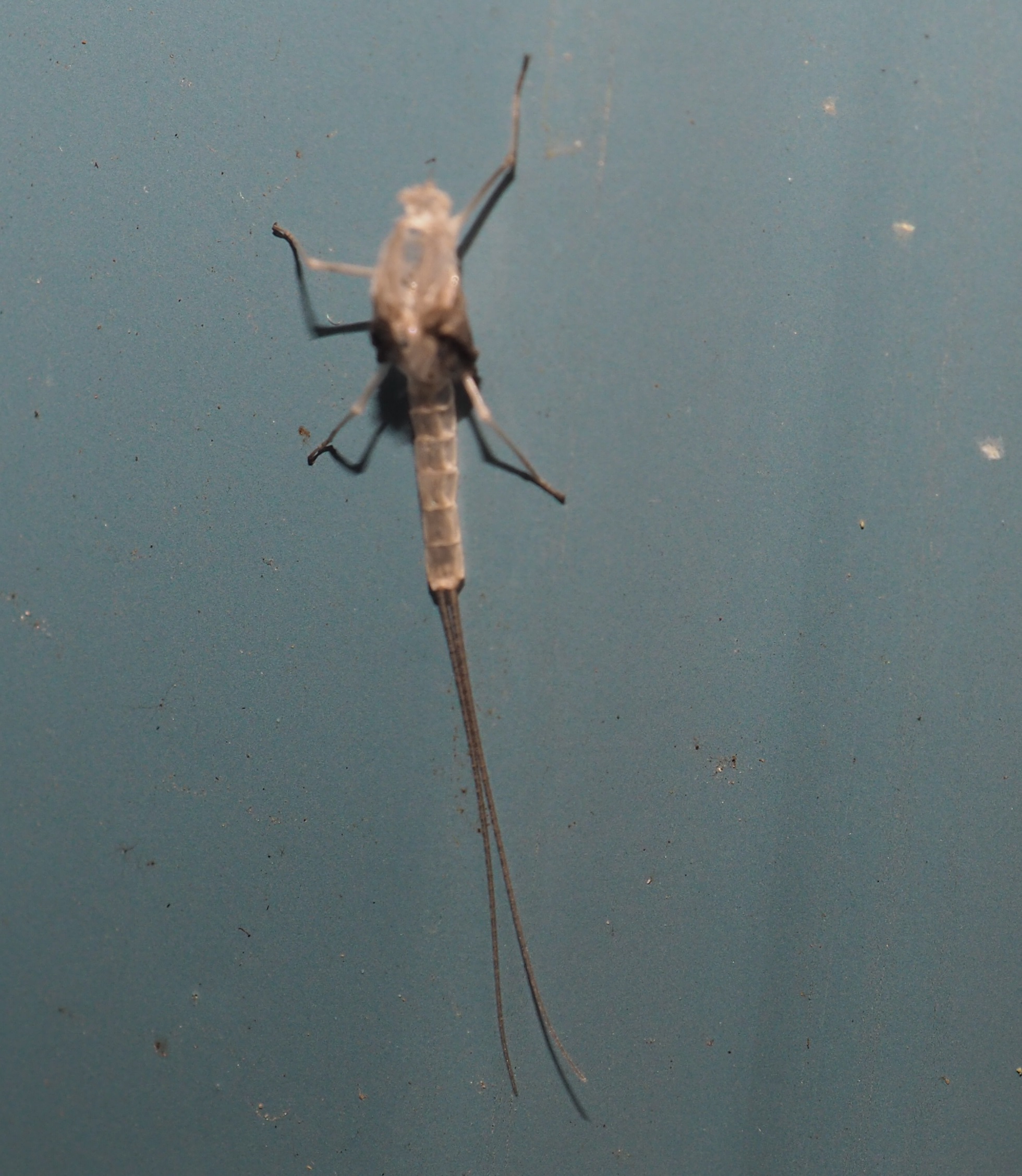
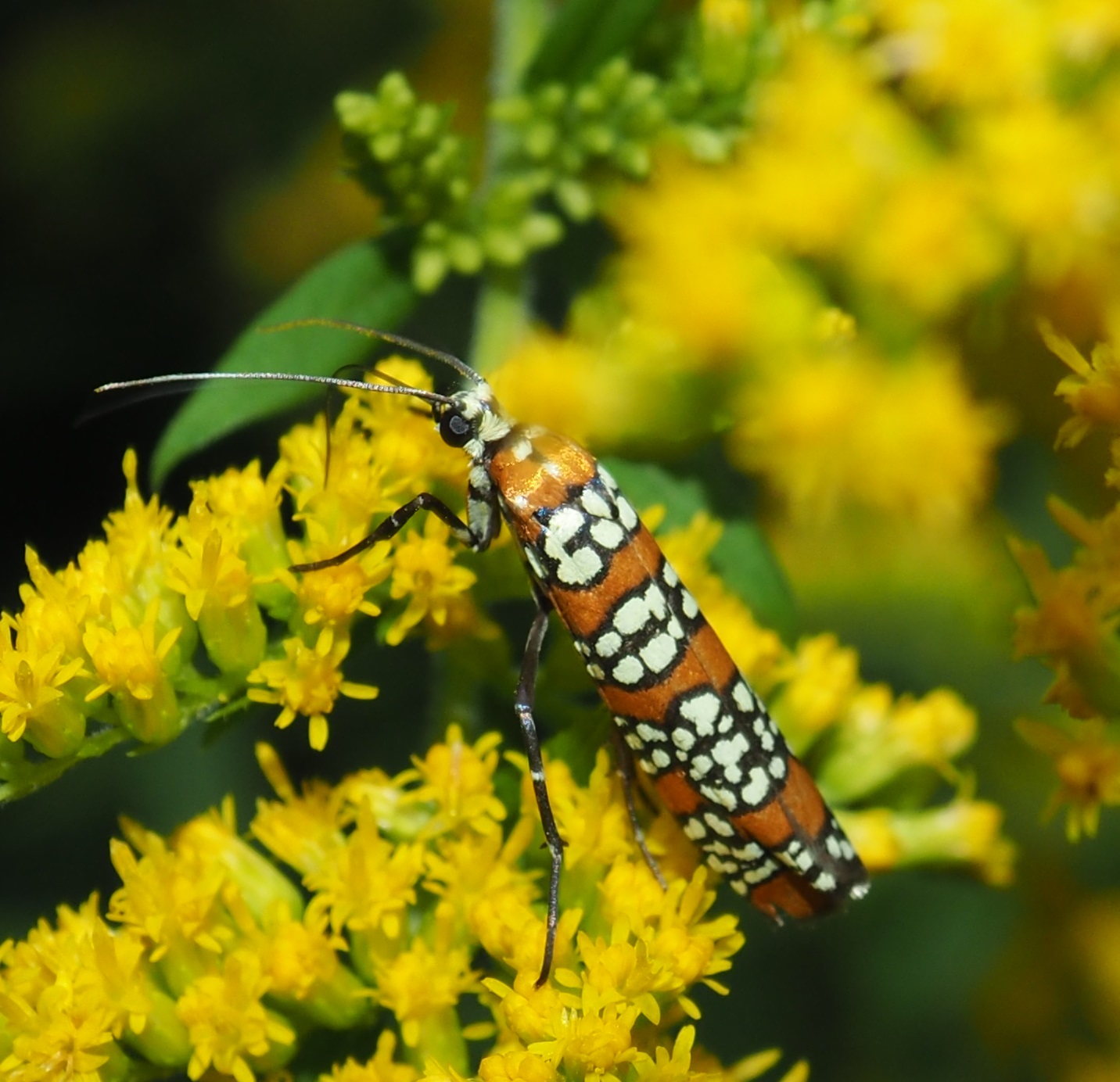
Here is the Common Checkered Skipper, a being between a Butterfly and a Moth. It's a common visitor this time of year as well.
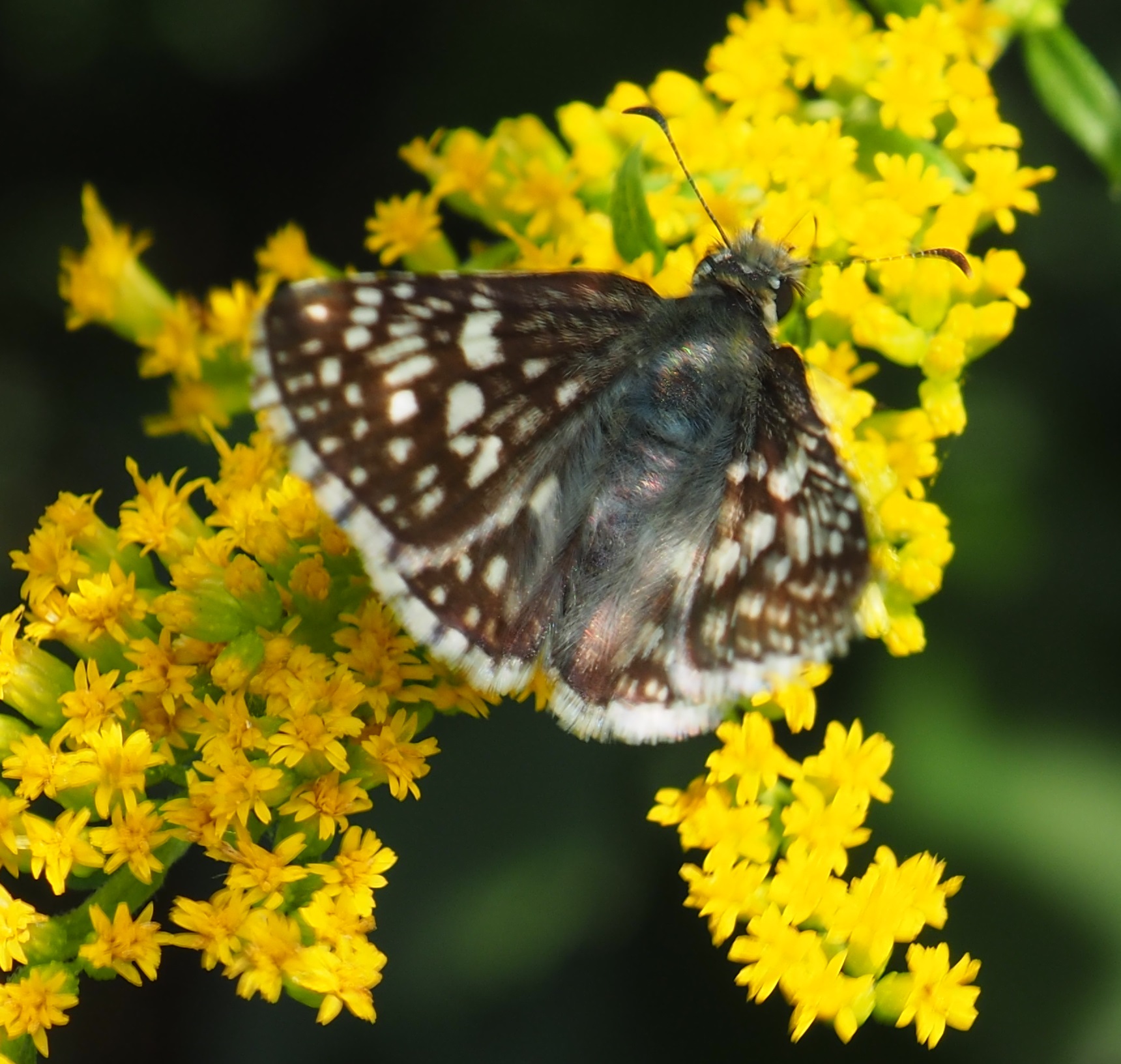
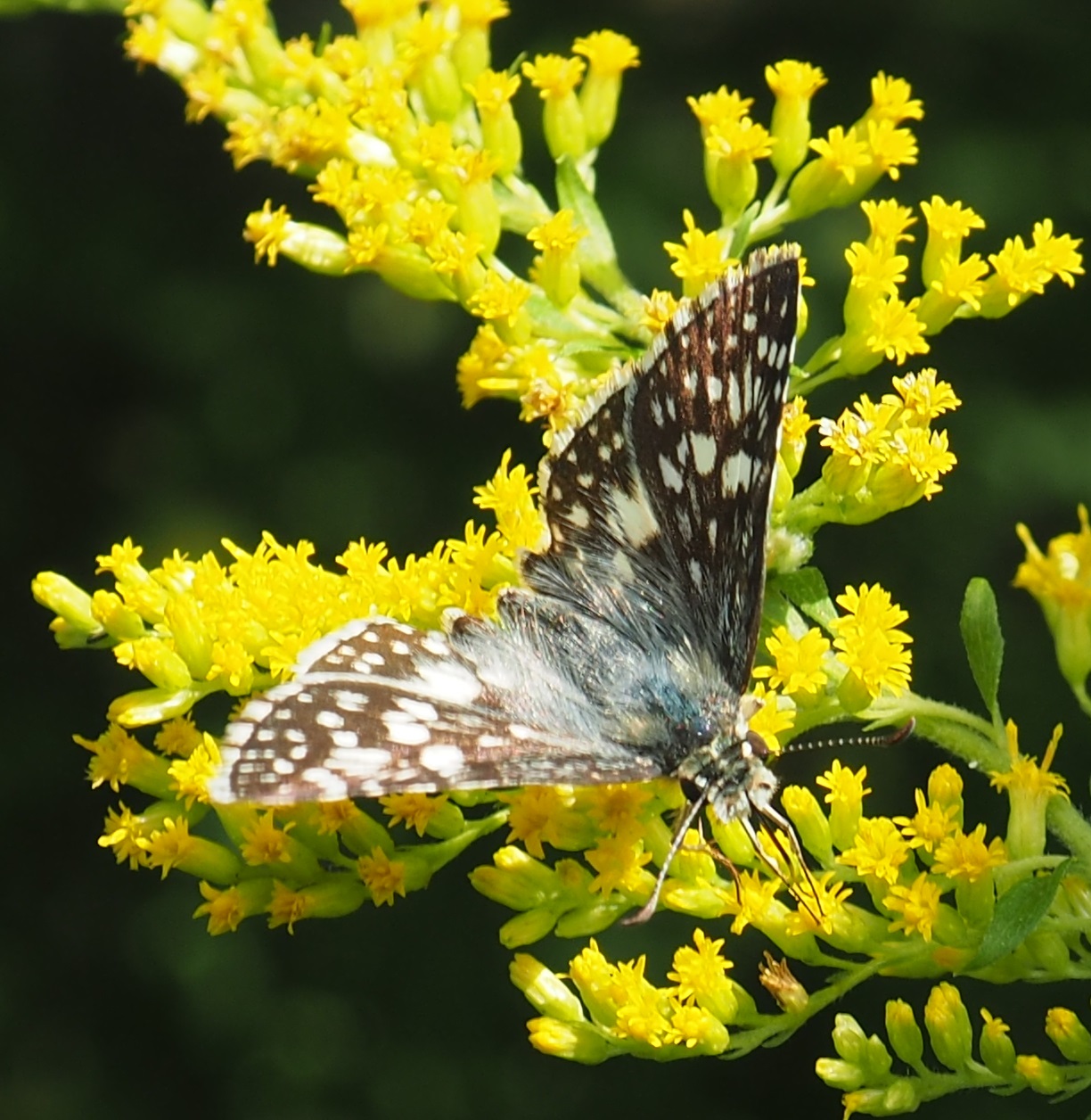
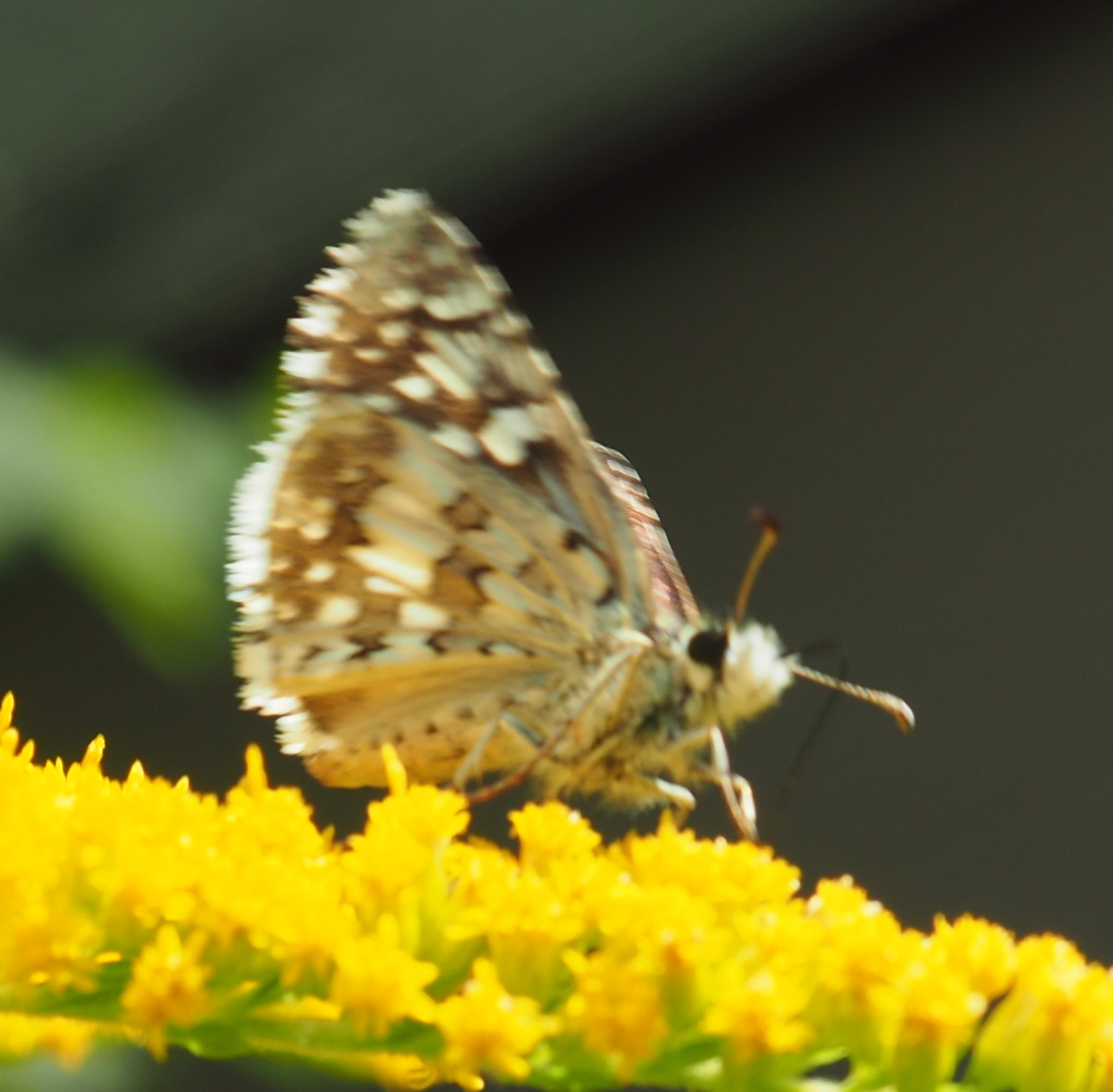
On to Spiders. The most common one is and has been the Common House Spider, or in my abbreviation style, chs. In the second picture, the CHS has a bright red prey. And this third picture I first labeled a crab spider until I cropped it and now I think it is a Ghost Spider. Fourth is one of those Dimorphic Jumping Spiders. It comes in several distinct color patterns, especially in the males. This is a female. You might want to click it a couple of times to see the subtleties in color and other pattern elements.
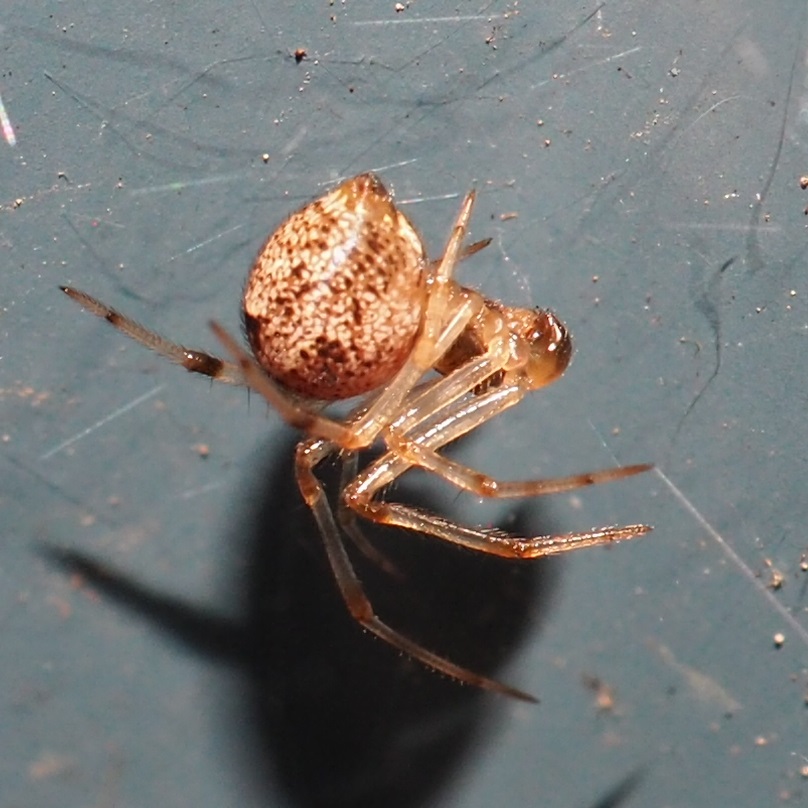
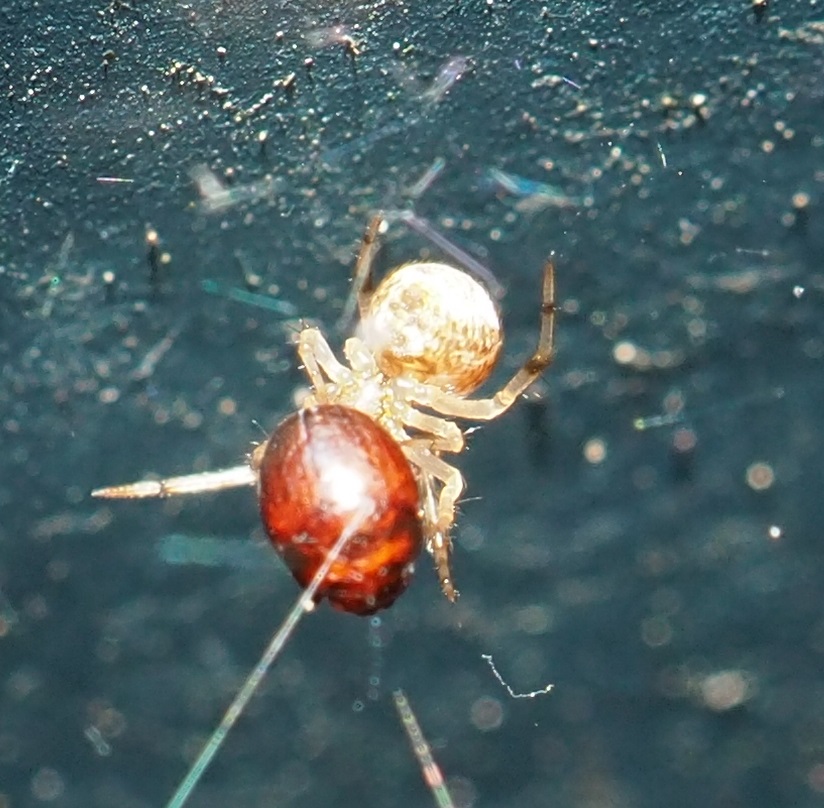
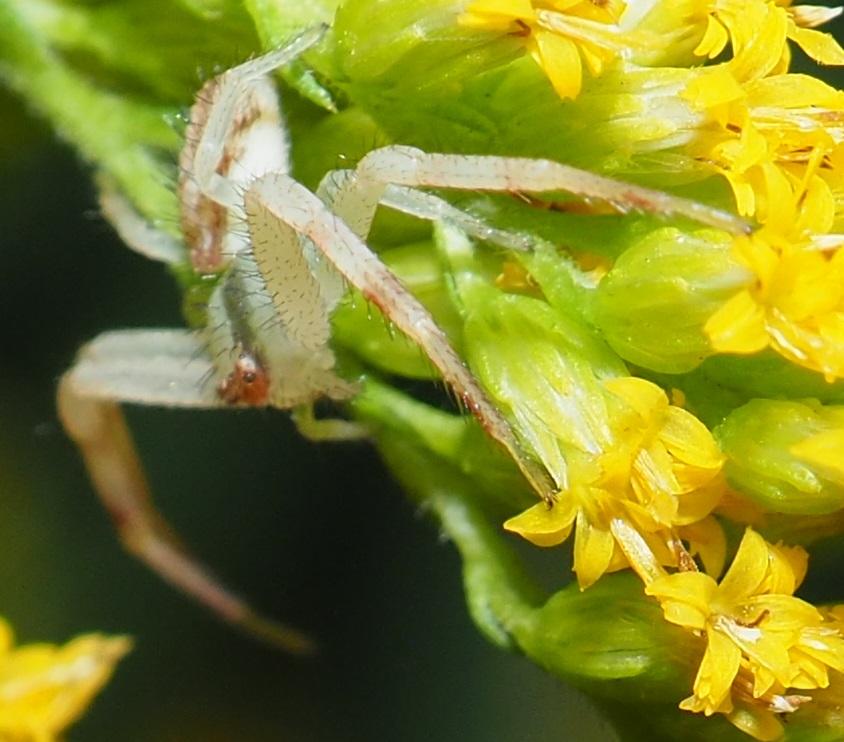
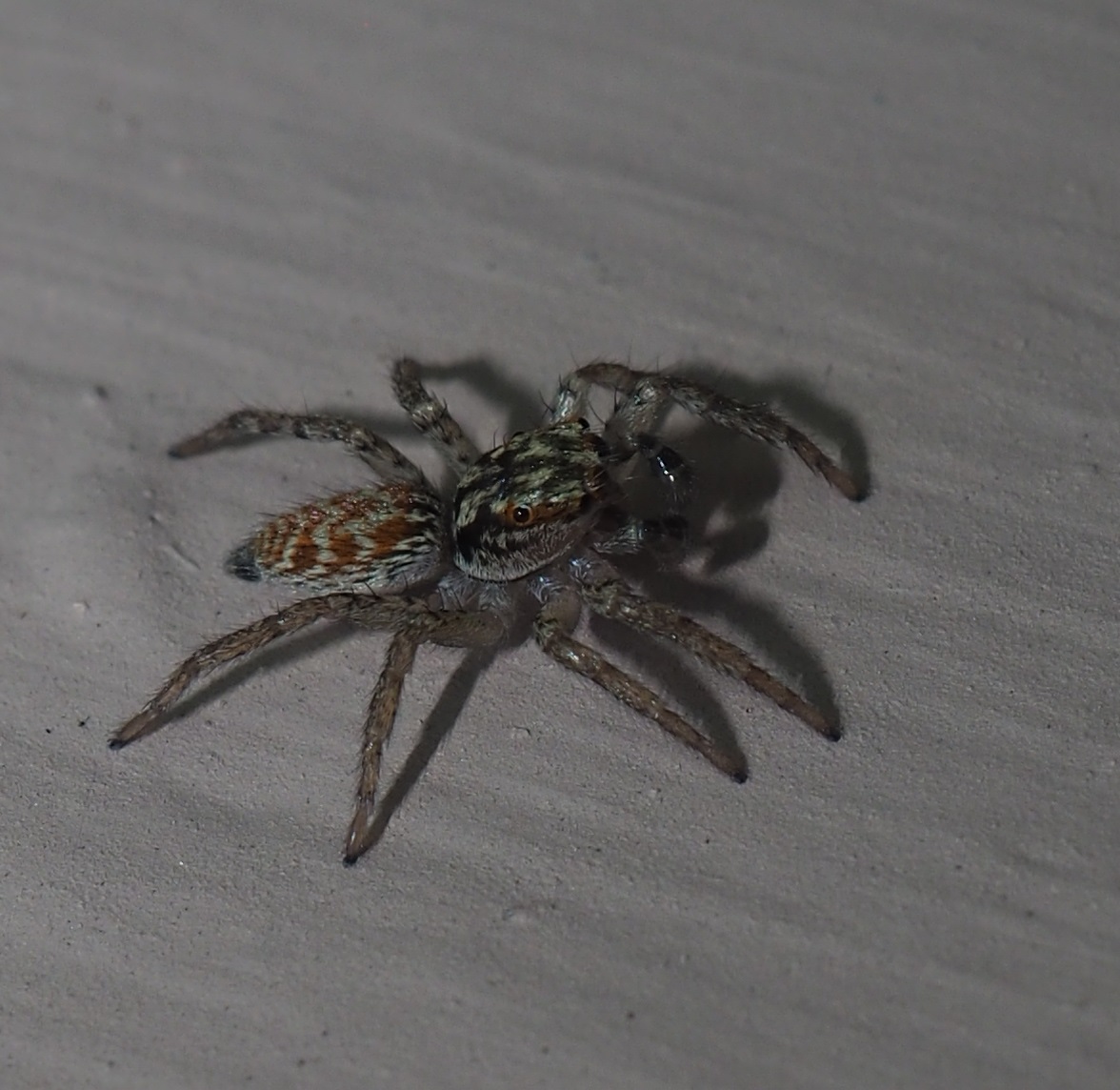
This seems to be our friend the Naphrys Pulex Jumping Spider. The second also, but the design isn't quite so clear as usual. They were taken in different places on the same day.

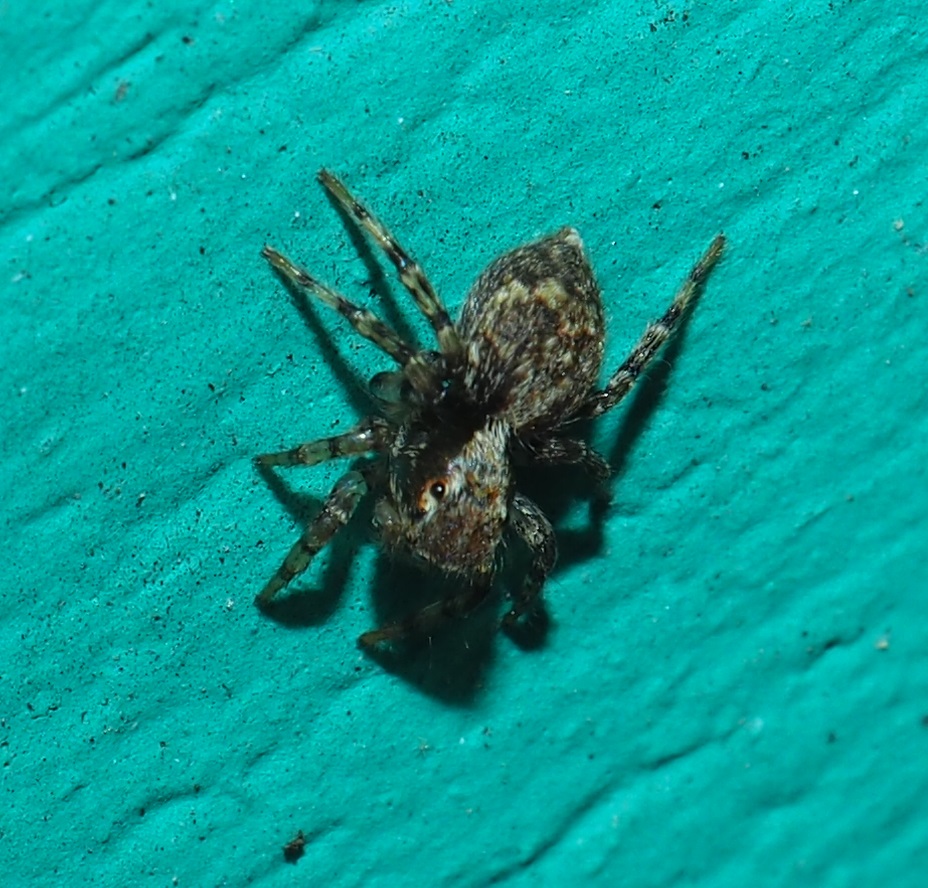
Many many kinds of wasps finally came to enjoy the Goldenrod Spa. There were many many different kinds, and I haven't finished identifying them all. I plan to keep on working on the iD's though, though there is hardly available a compendium of all their forms. Their shapes, their color choices, their pattern designs, all vary through the wasps. The same can be said about where they build their nests, if they have nests at all. But the attempt is invigorating. I believe that this first one is in genus Ectemnius. It has a lovely clean pattern and its shape is interesting too. But it comes in many species, so I'm not sure which this is. The second wasp is called Eumenes fraternus, and raises its offspring in little clay pots. It is one of many kinds that have a thread-thin connector between its head and its abdomen. Here are two others.
.jpg)
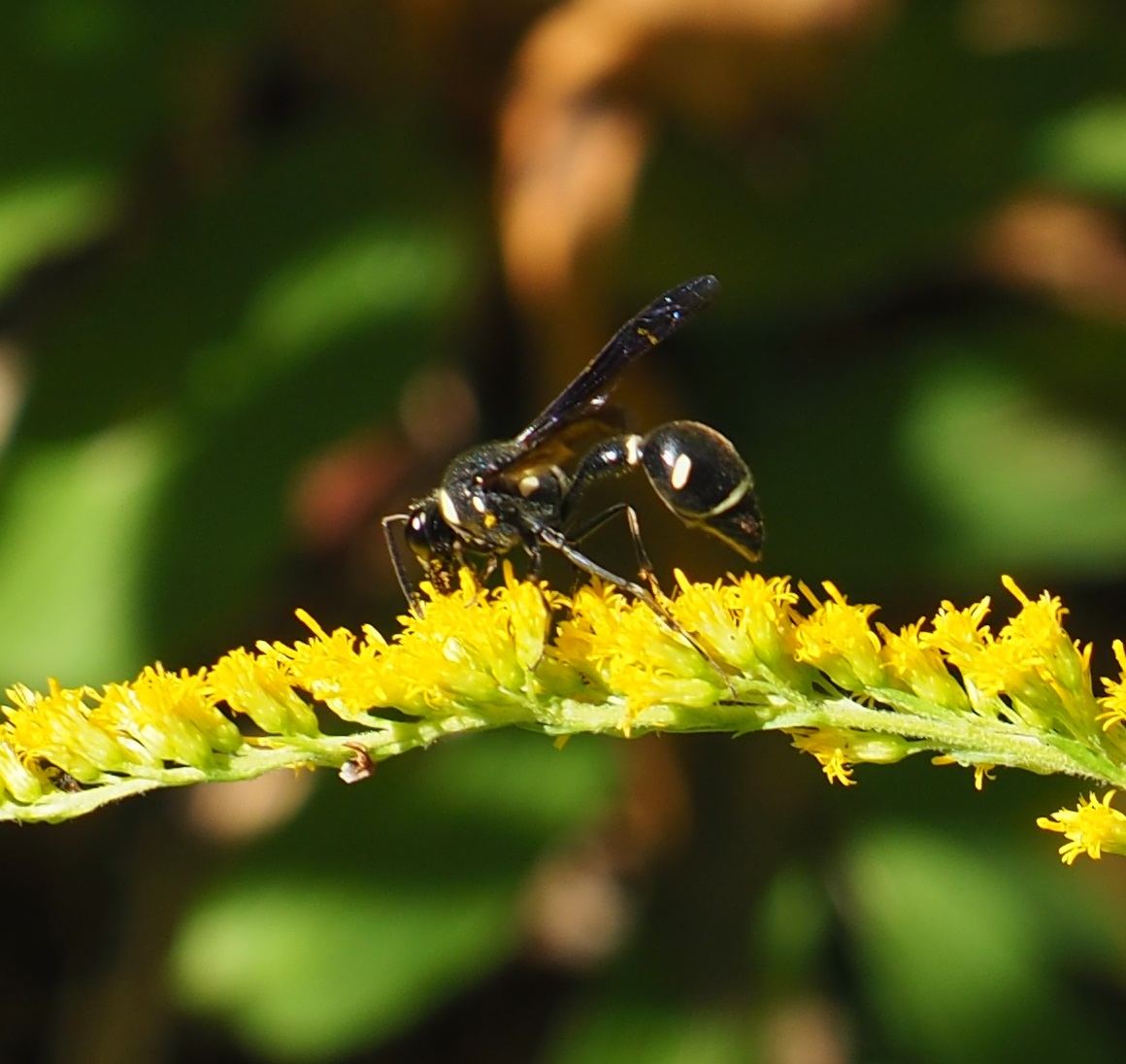
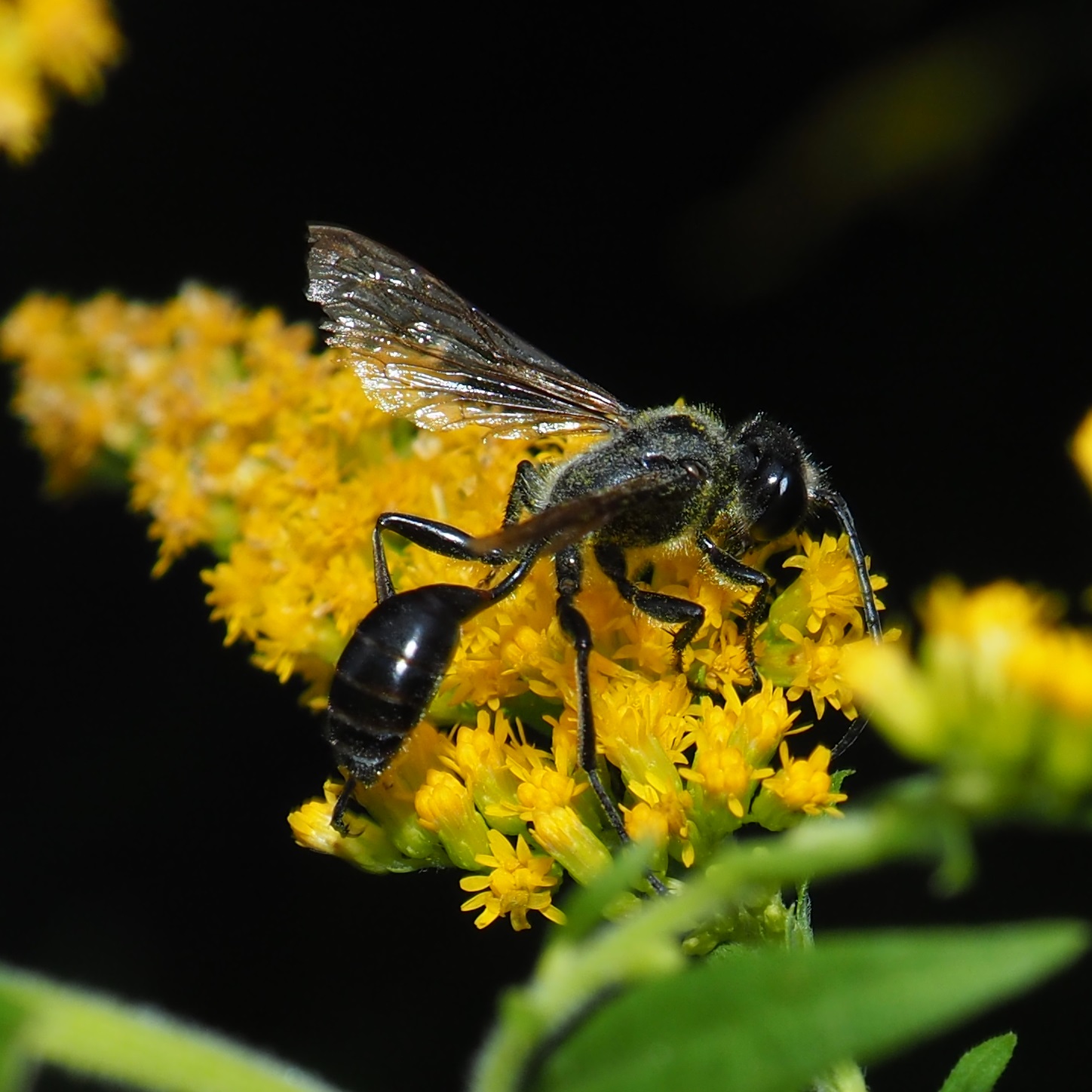
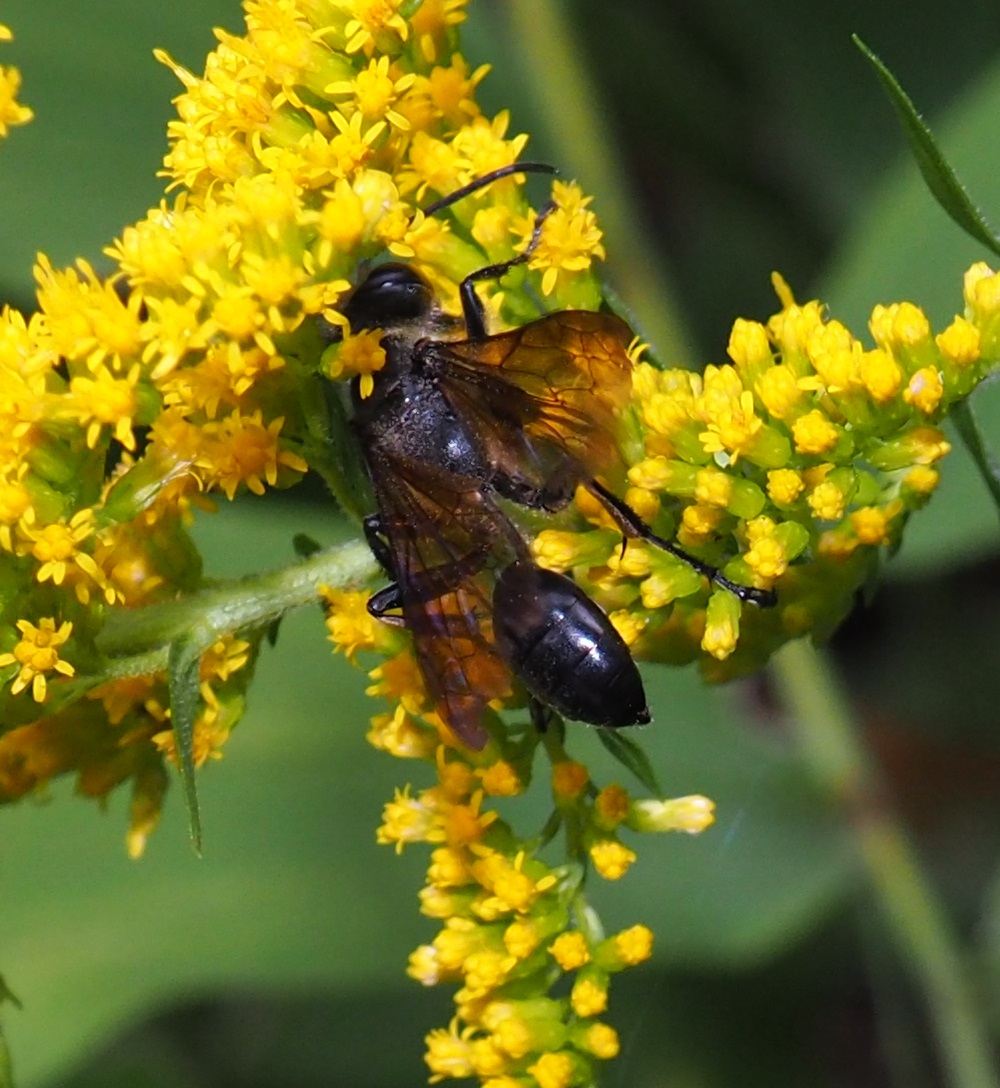
First is one I first saw last year. It is given away by the navy-collar shape that defines its "shoulder" region. It's called Leucospinus affinis. The next two are a pair of bees or wasps mating. There were several species mating that day. Number #3 is possibly a different pair.

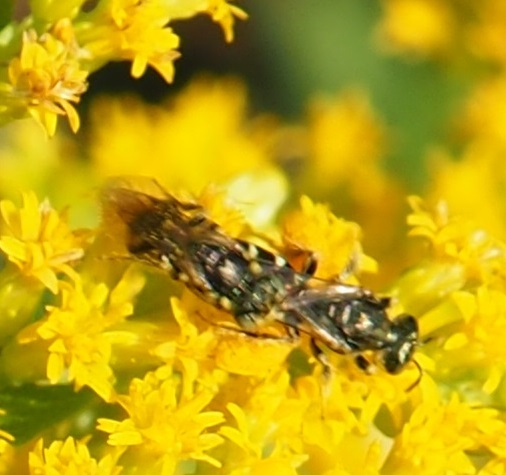
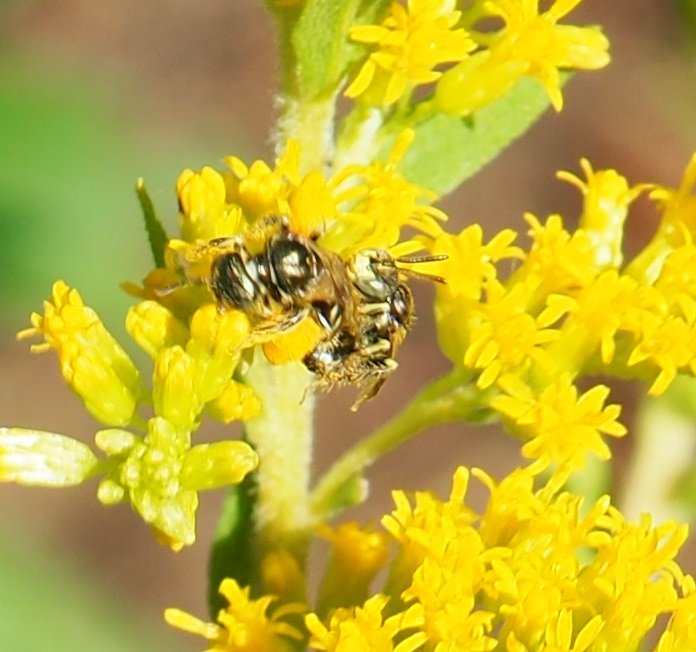
There are two or three species that I do recognize on sight. First is Dolichovespula (long-wasp) arenaria, a yellowjacket that builds a nest overground. Several genders were out this month including male and female (worker or queen). These first two pictures represent the male face and the body that goes with it. Third is a male Northern Paper Wasp (also called Dark Paper Wasp), Polistes fuscatus. Fourth is a female.
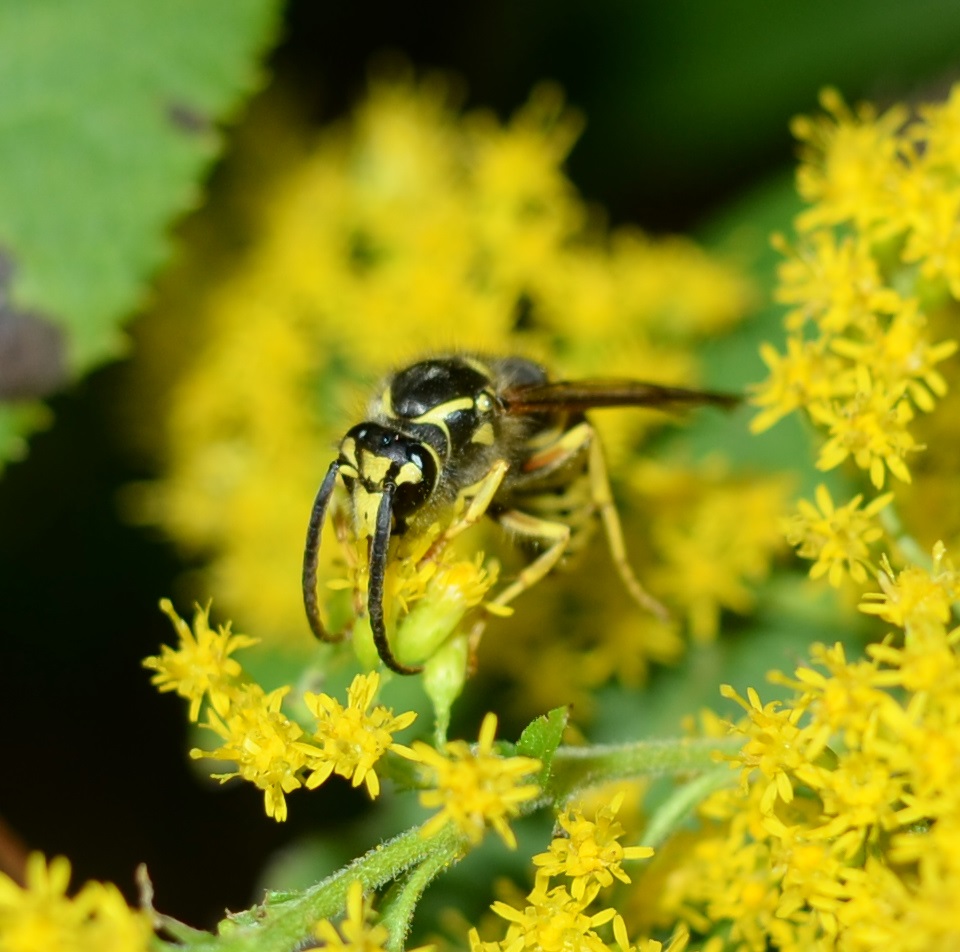
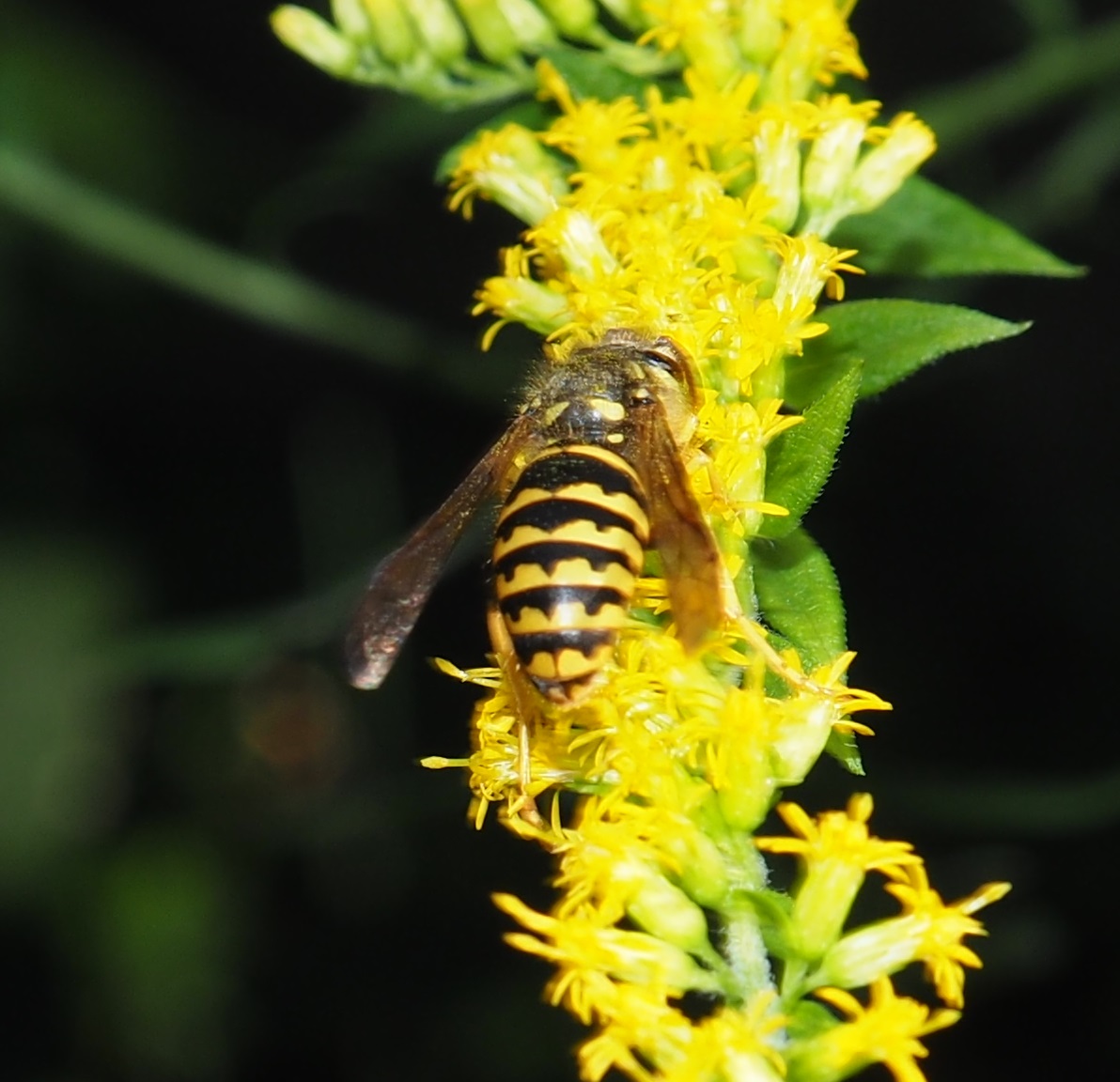
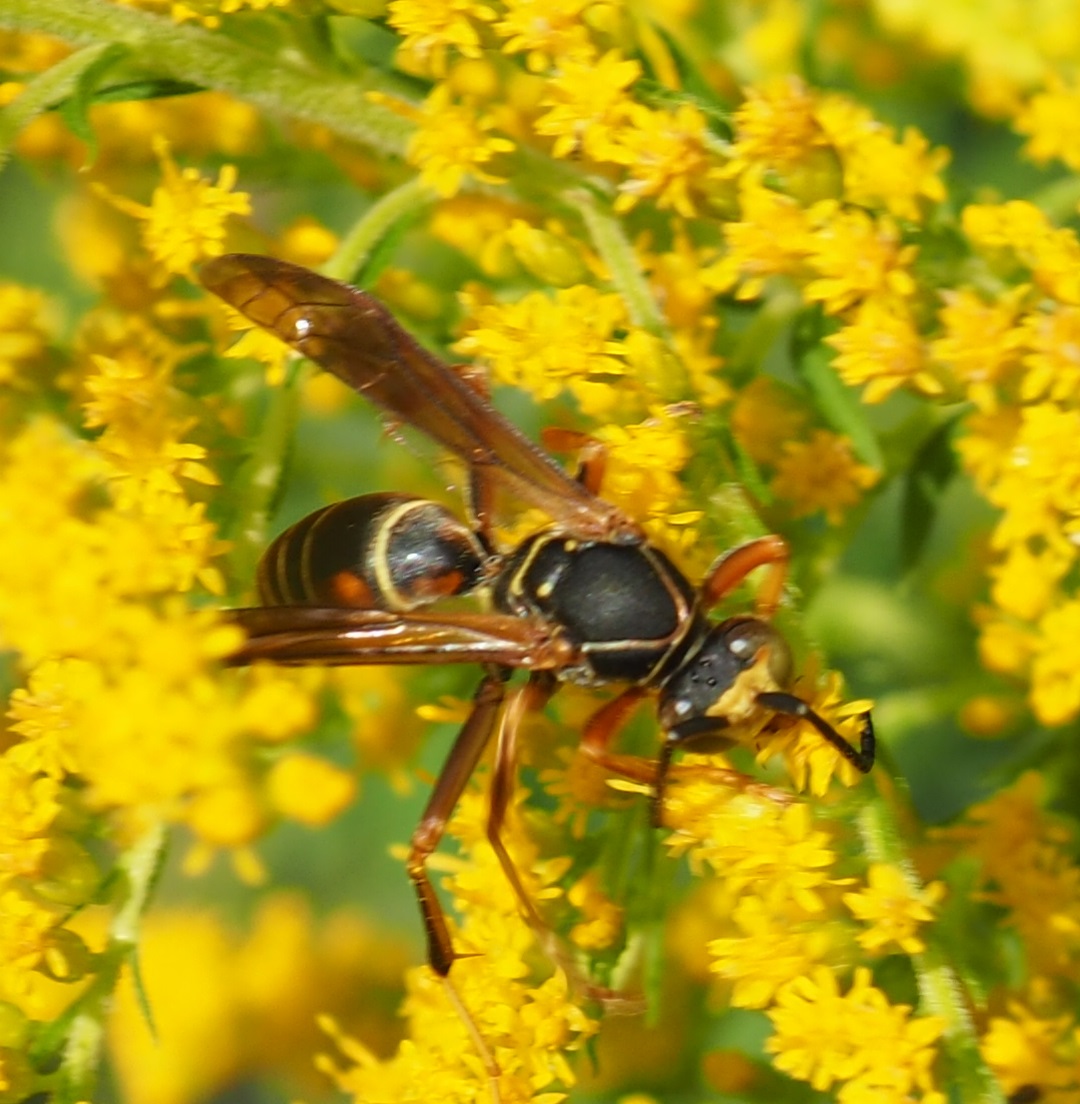
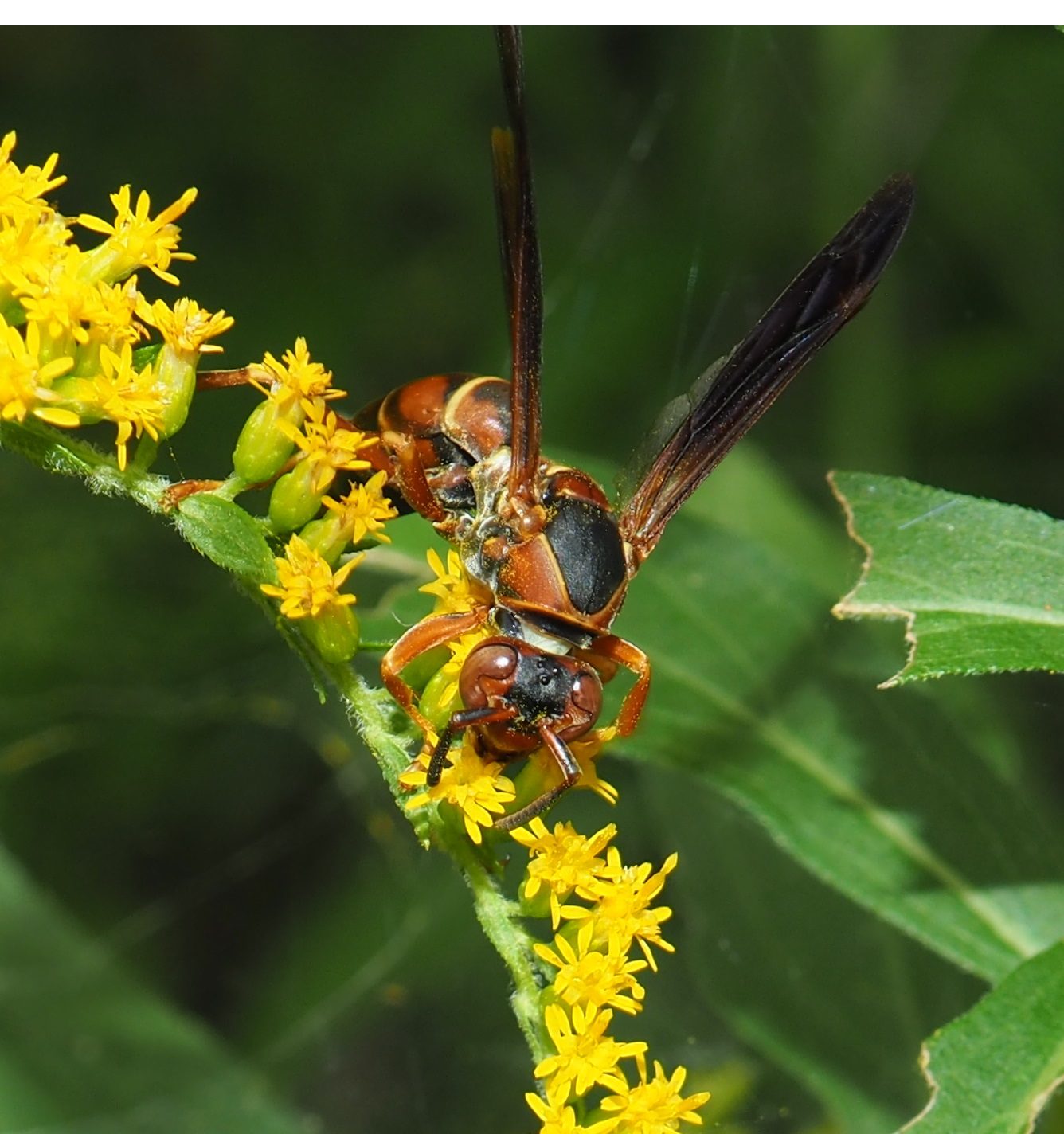
The other kind of paper wasp is the European Paper Wasp, which comes in black and yellow. Here are two pictures (I didn't take any this month, although they were around a lot) from a previous season. The first is a female and the second is a male. Note that the male has a solid shield face plate, while the female's is a combination of two facial elements. Third is an unrelated picture, taken at an odd angle of a tiny wasp (unknown), while Four is a wasp with an ovipositor, so it must be an ichneumonoid or a braconid wasp.
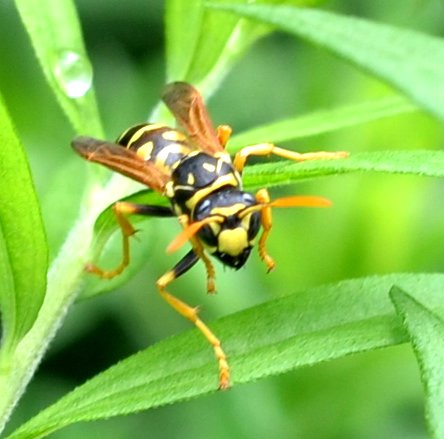
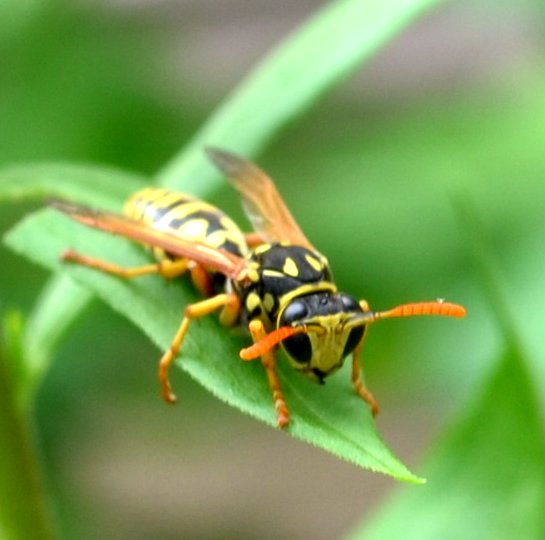
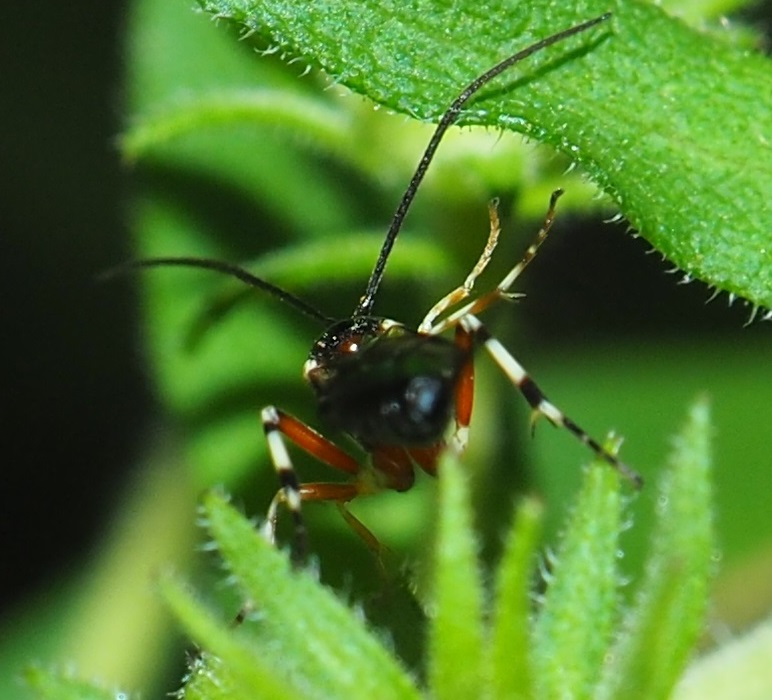
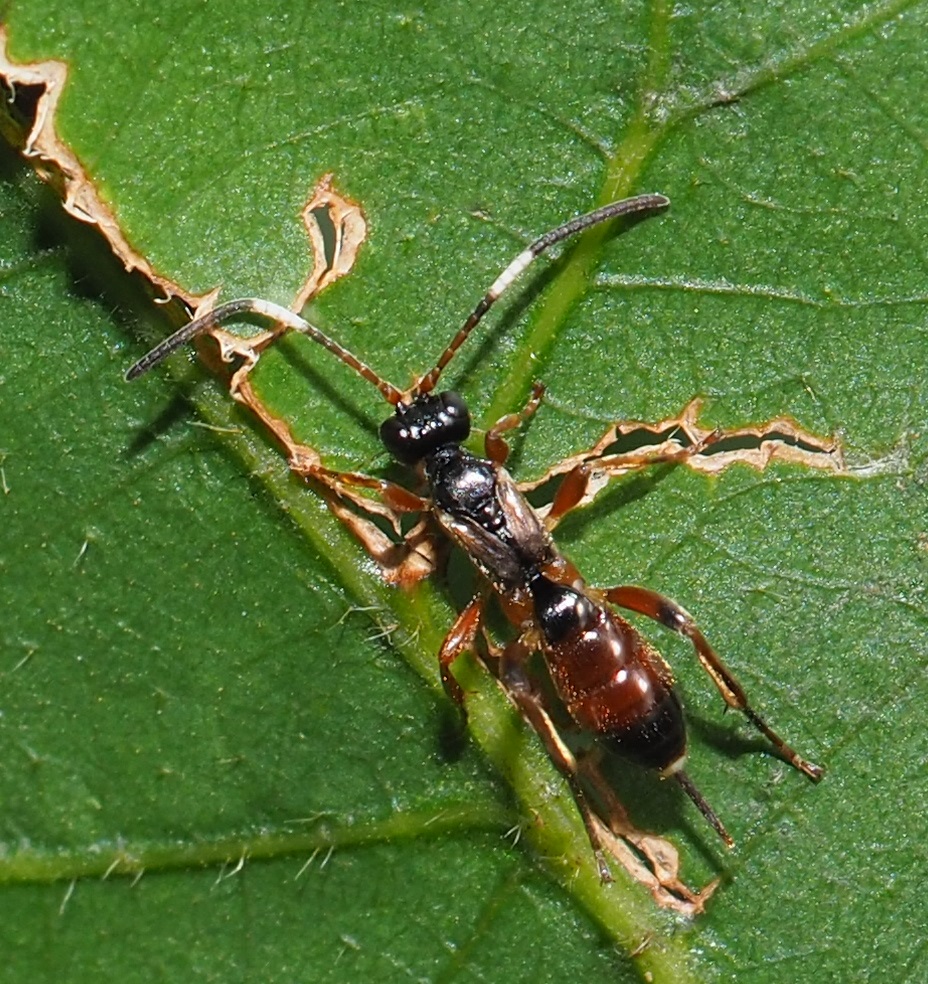
I'm ready to pull out the pretty flower pictures. Here are two vertical studies: a natural arrangement of Japanese Anemones and Goldenrod and a View of the Pond in the Rain. The fish go crazy when the rain is stirring up the top of the water.
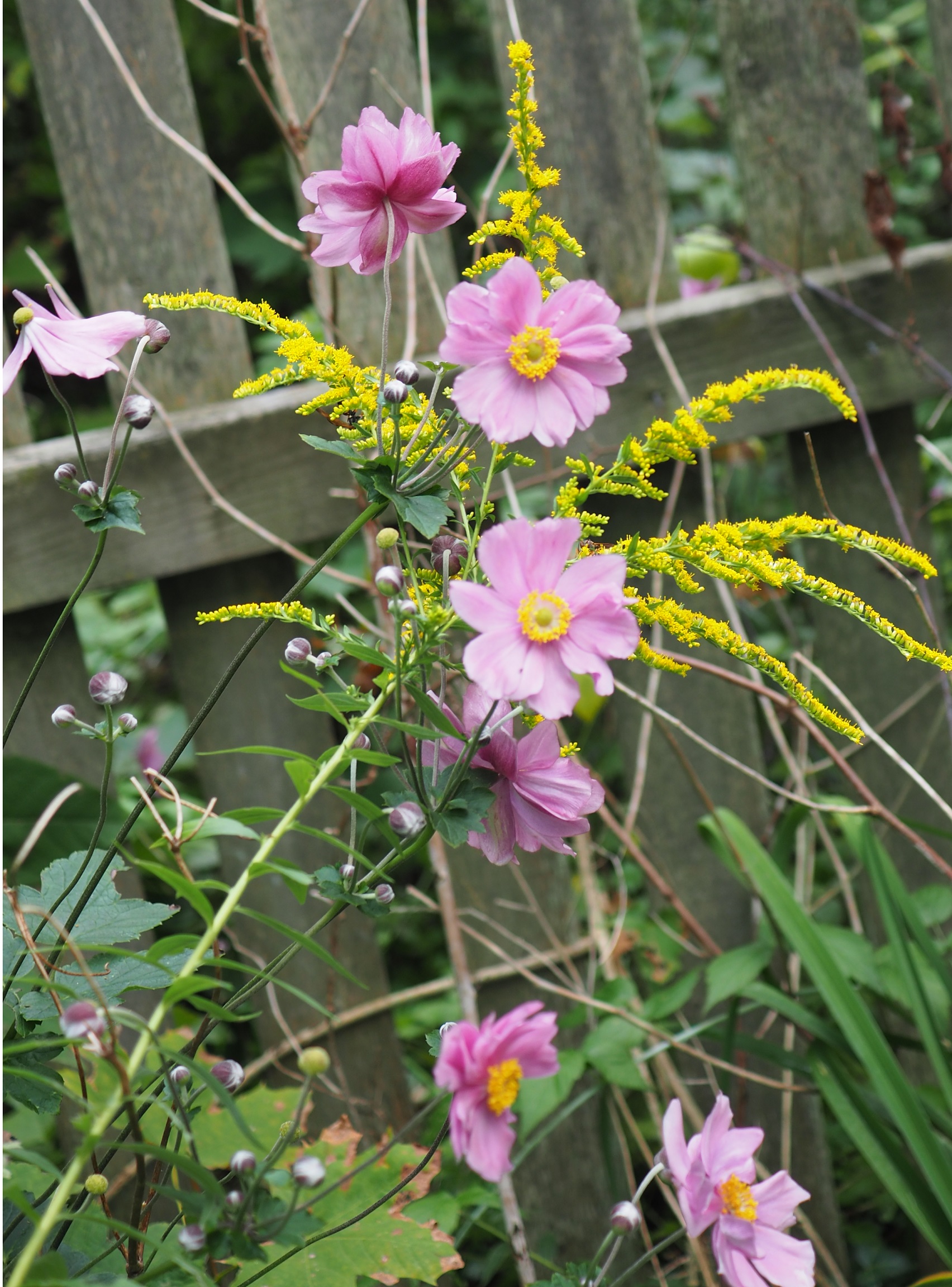
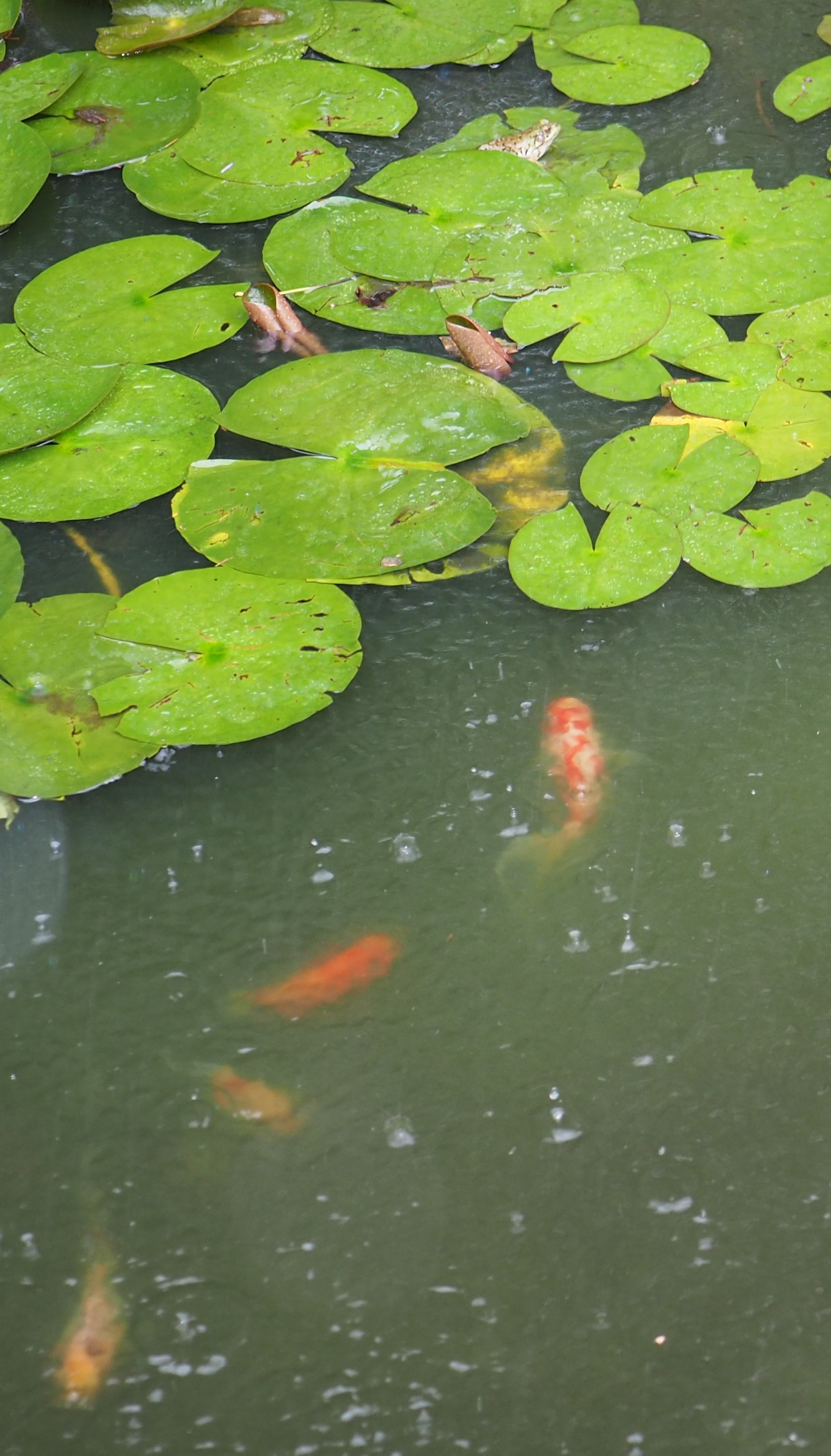
A pond shot with frog and pink lily; and a marriage of asters and goldenrod.
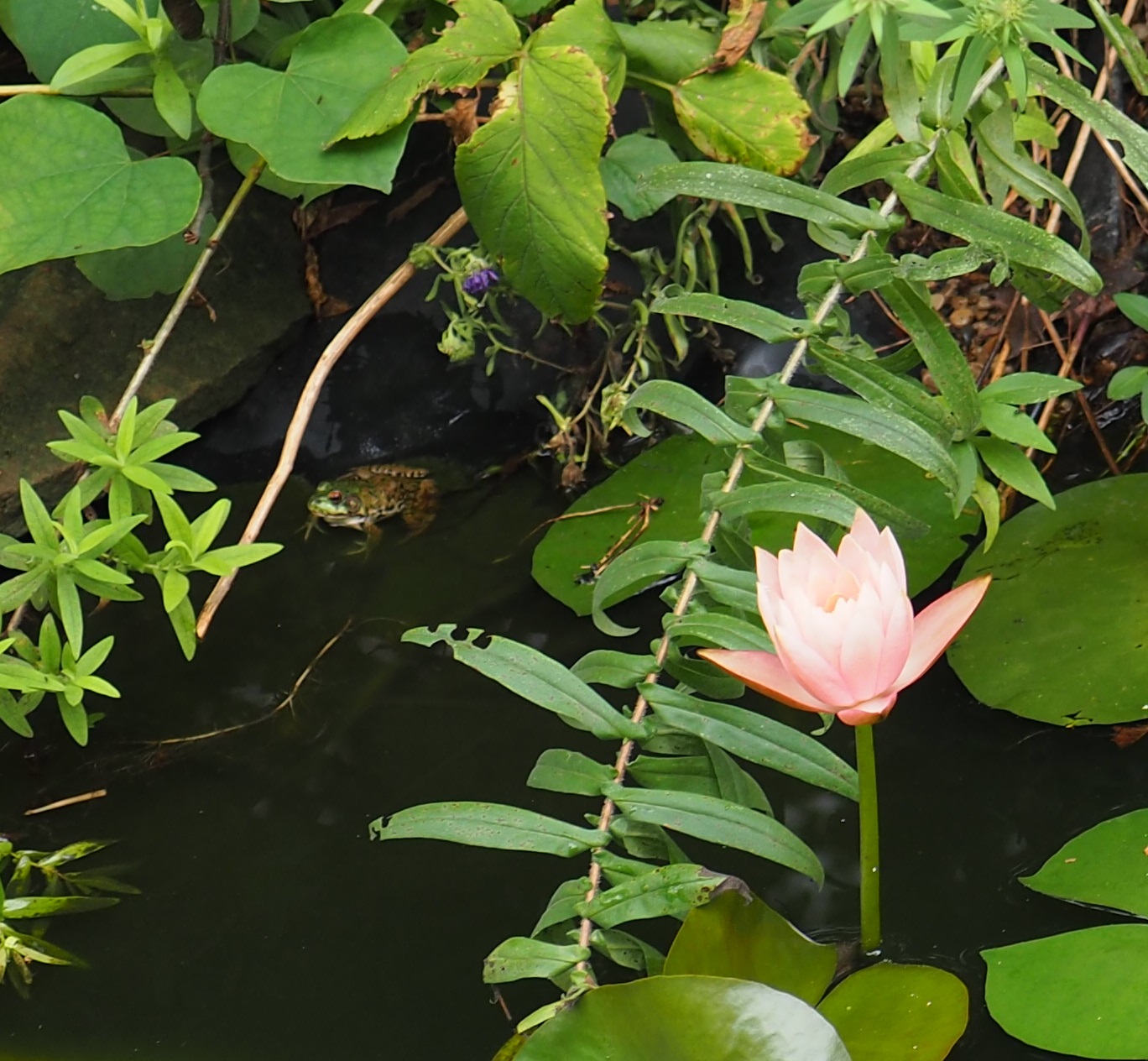
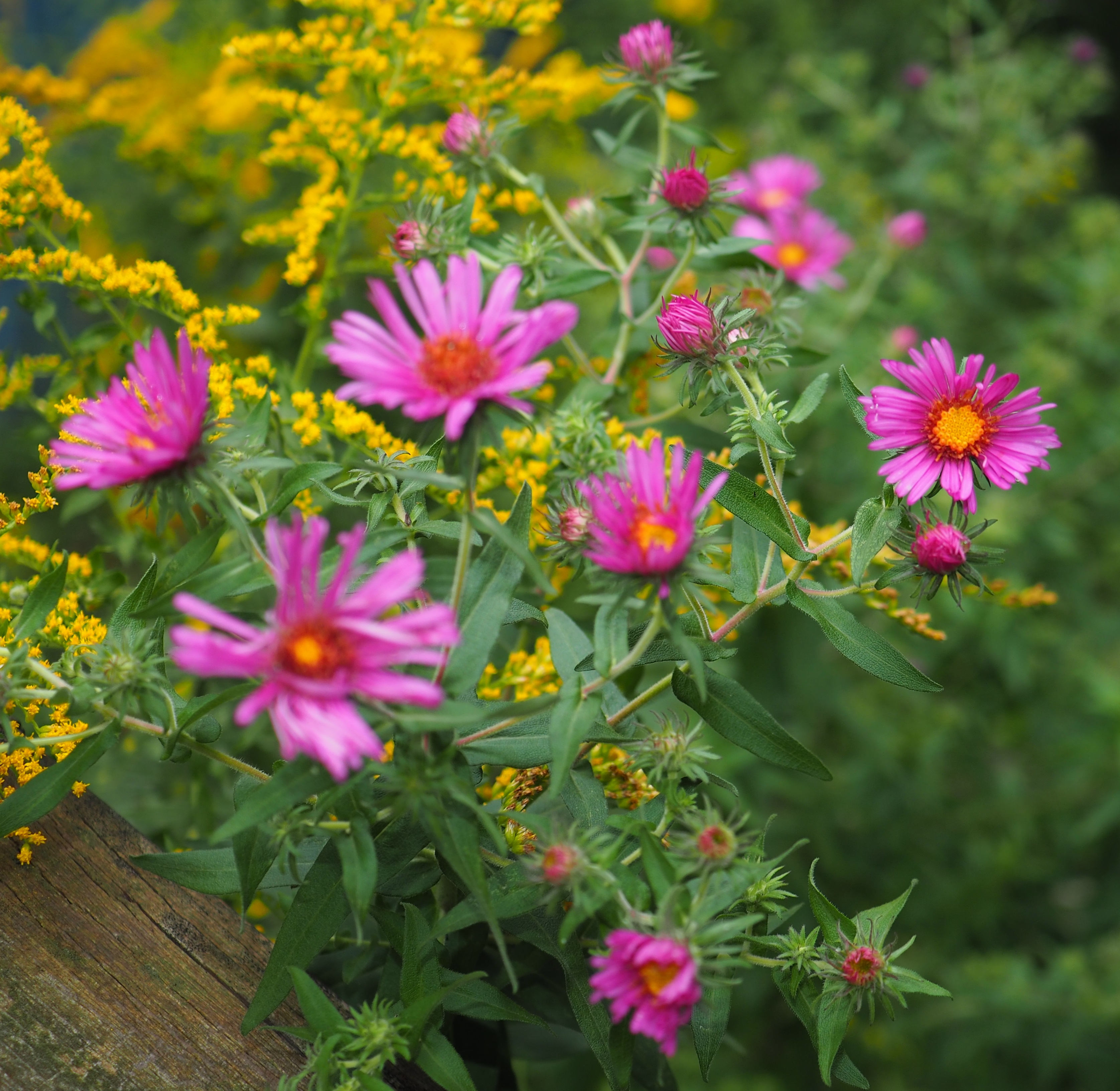
Autumn has somewhat suddenly been showing her lovely face and now I can go outside for hours to take pictures and murmur sweet nothings into the ears of the Creatures. I hope that all of you are looking forward to or already basking in the cooler or warmer air.
Love to everyone,
Martha
Back to September 2, 2018
Forward to September 16, 2018
Back to main menu
copyright Martha O'Kennon 2018

















































































.jpg)

















